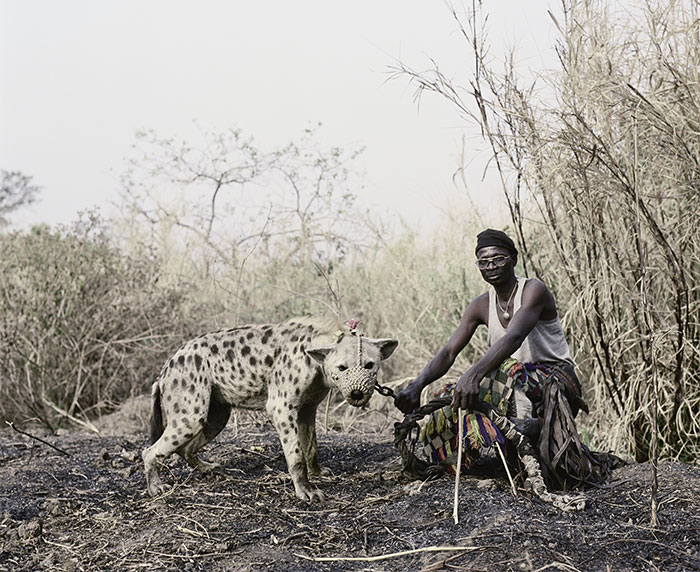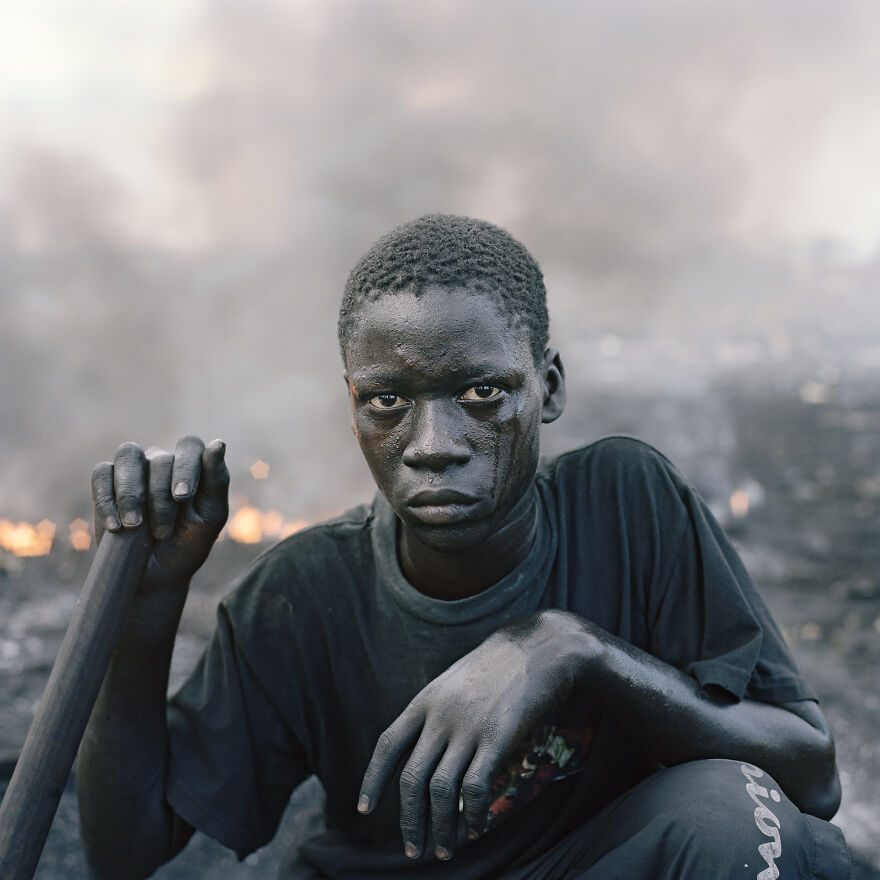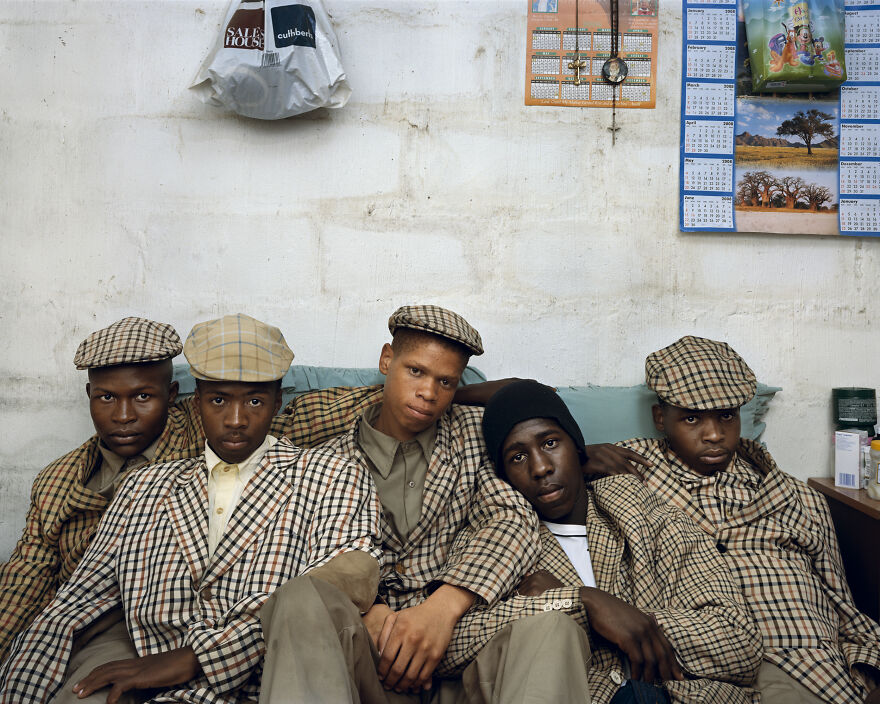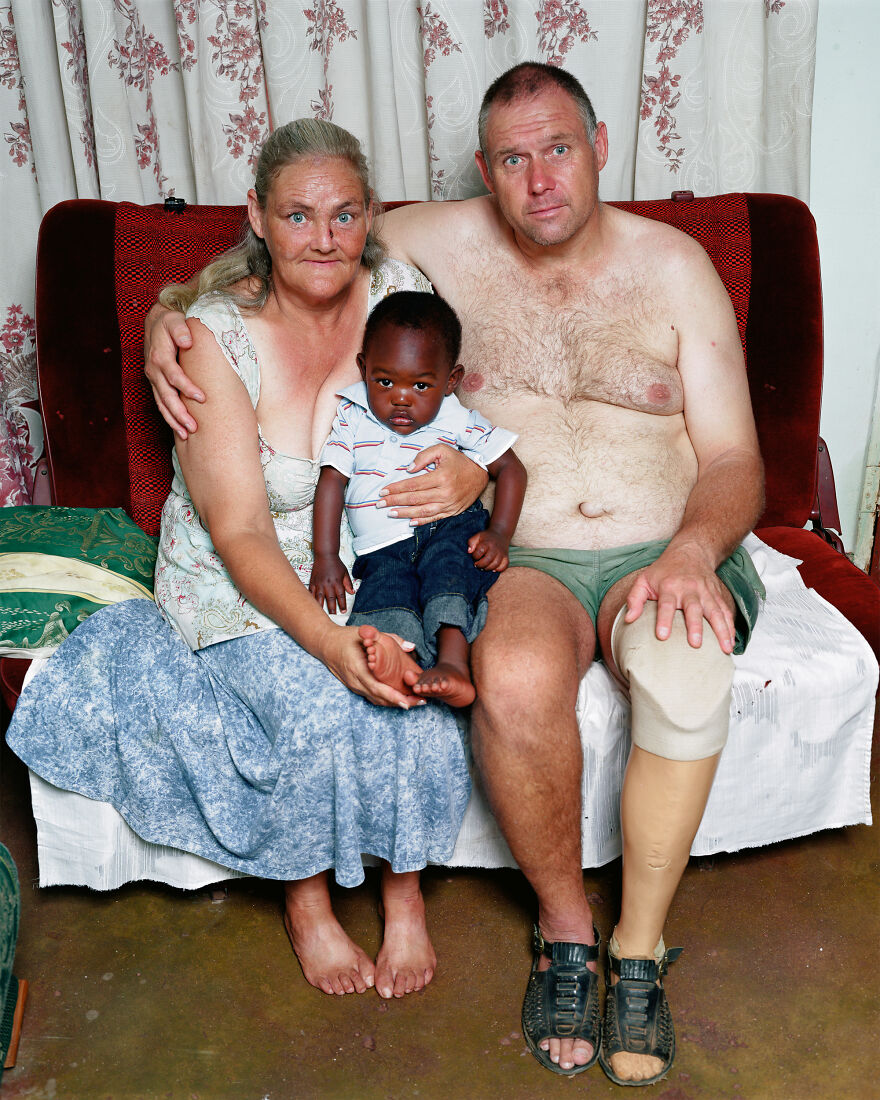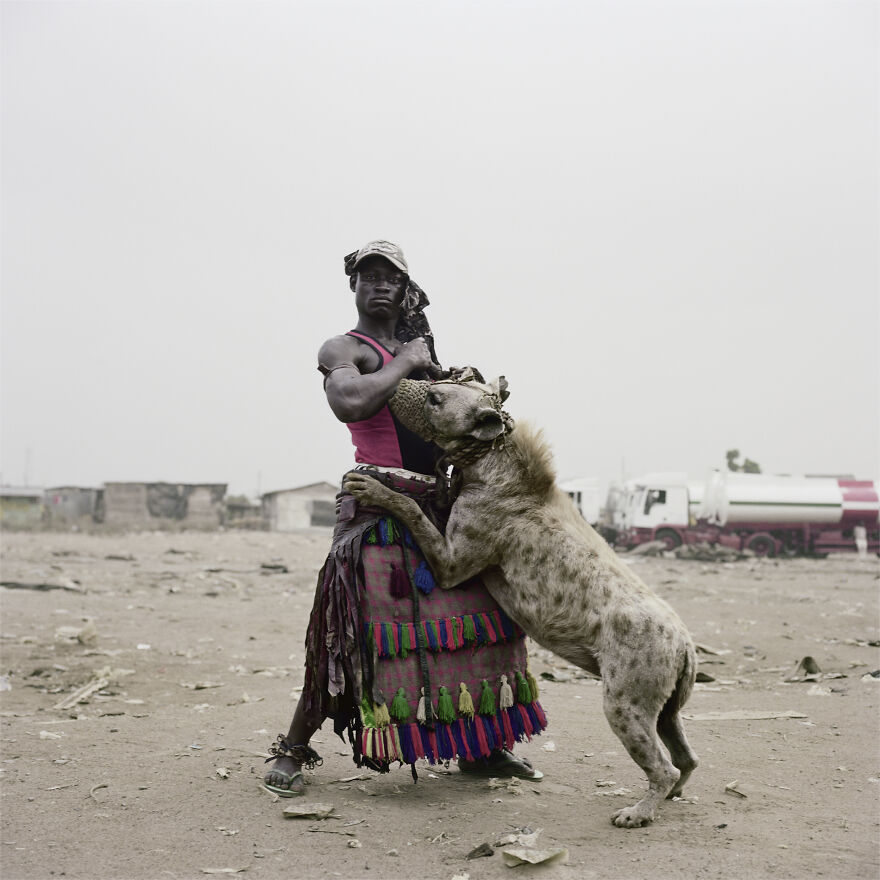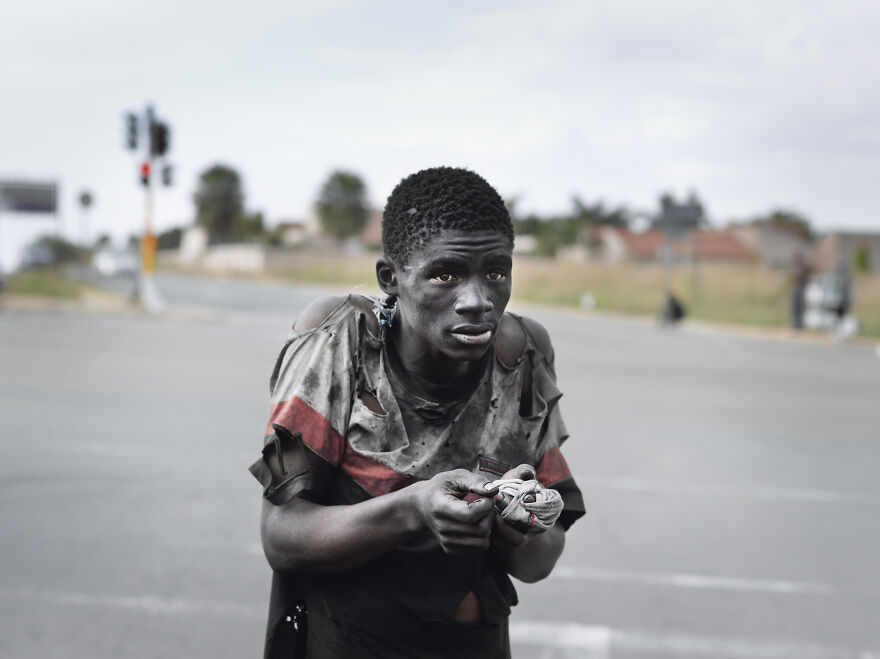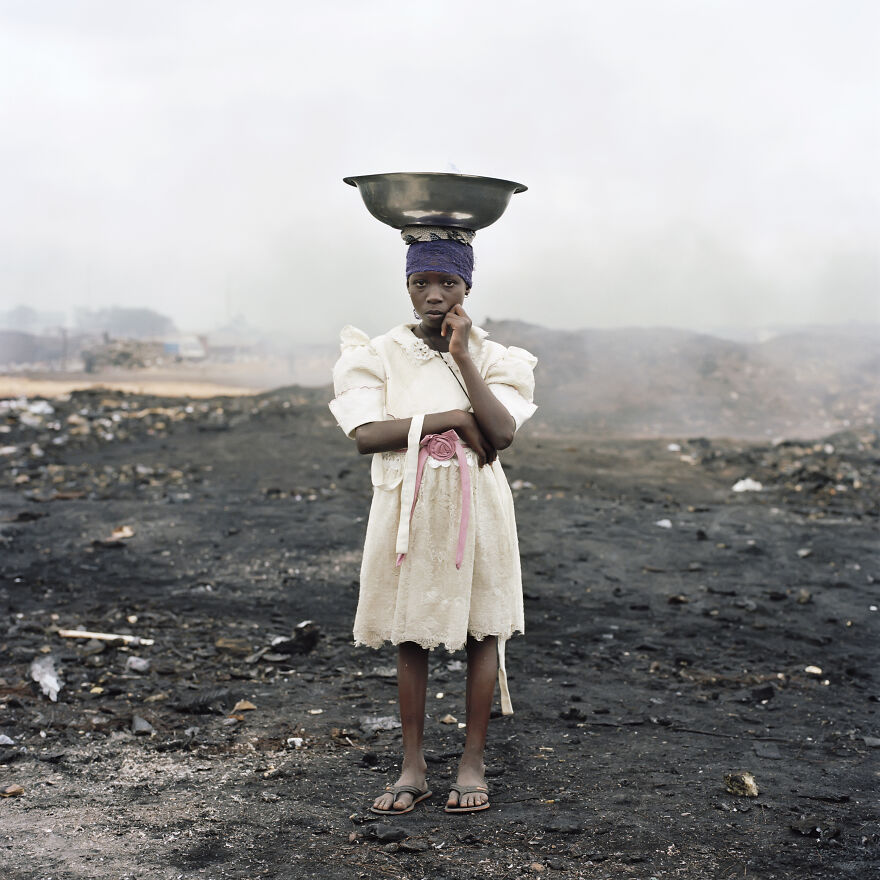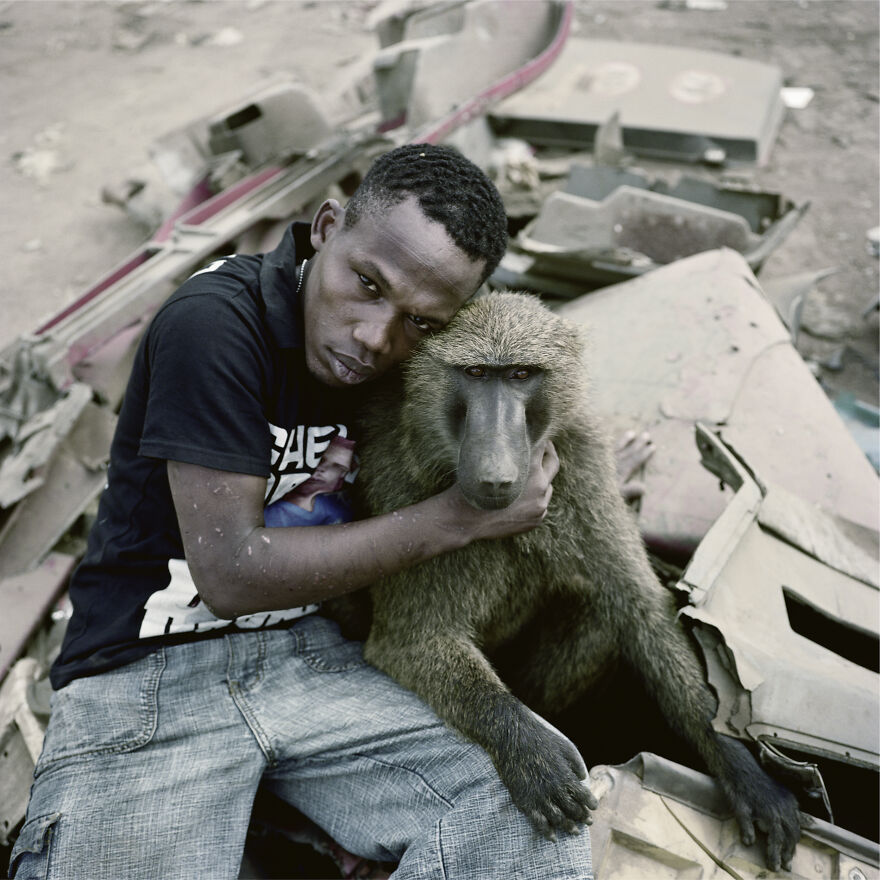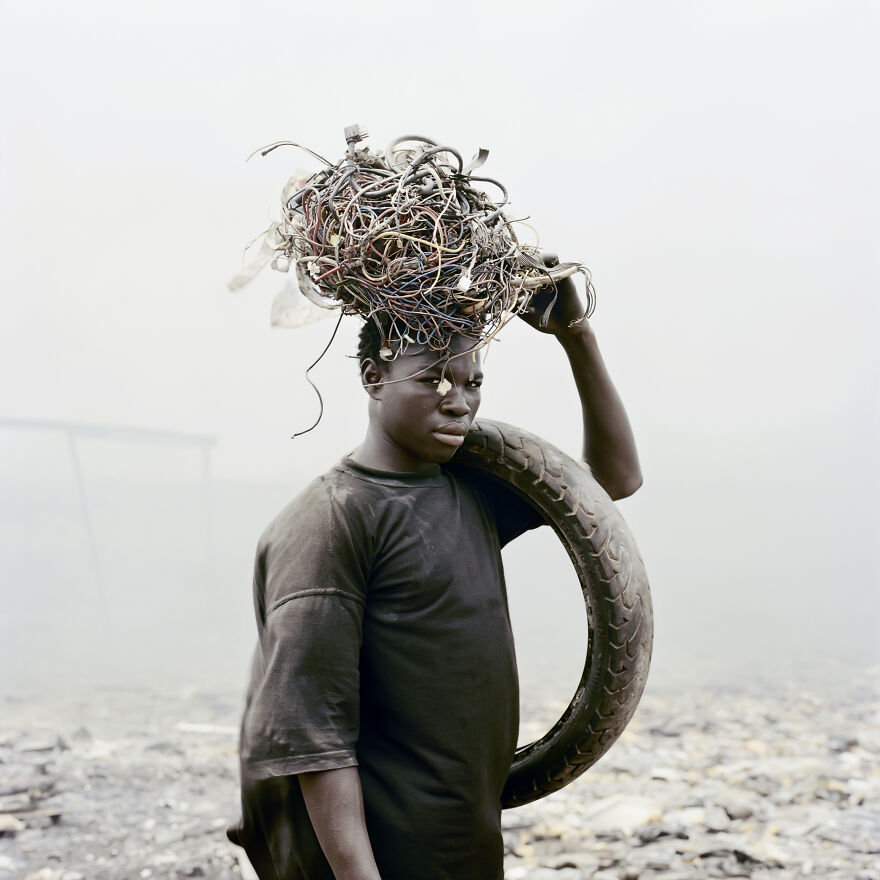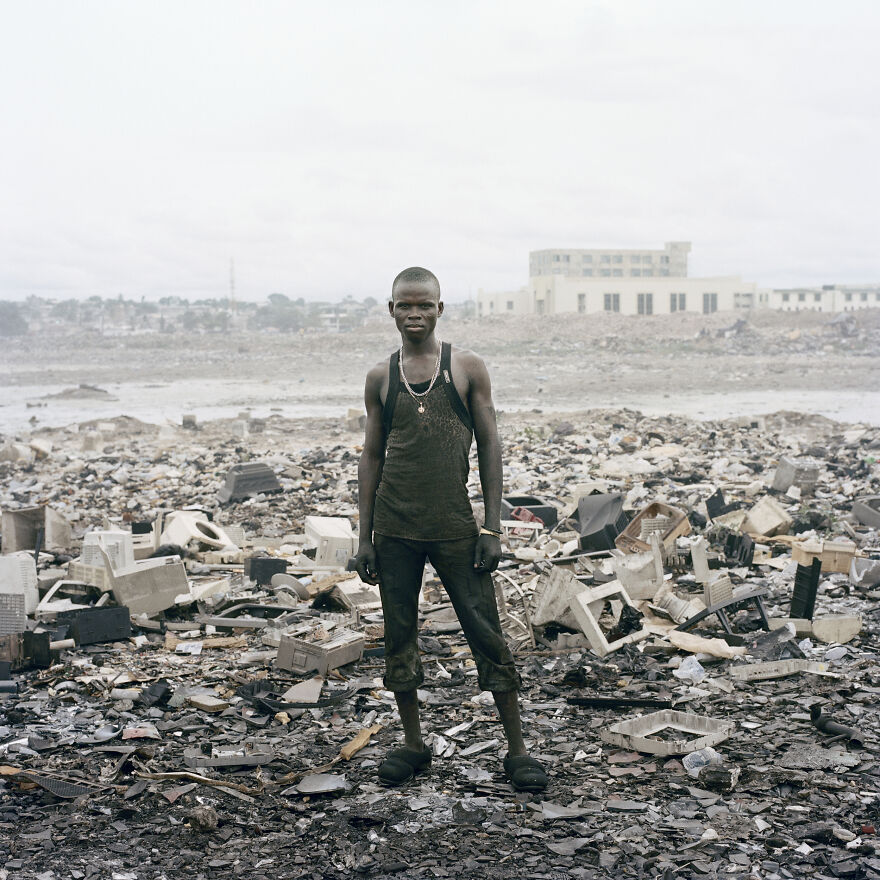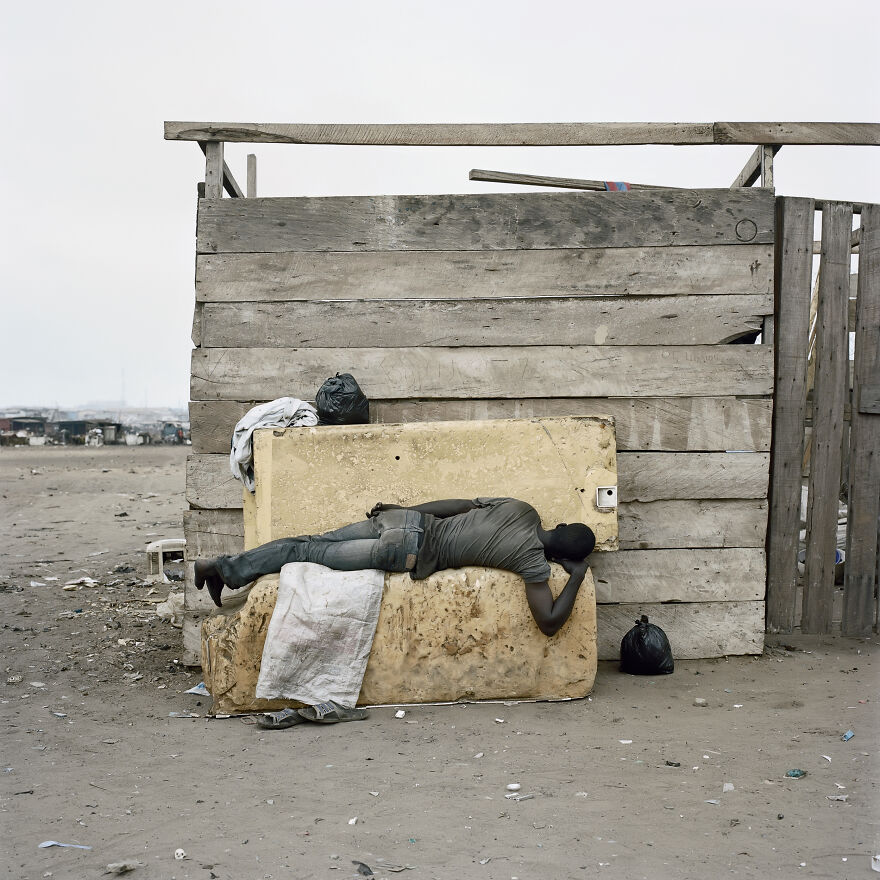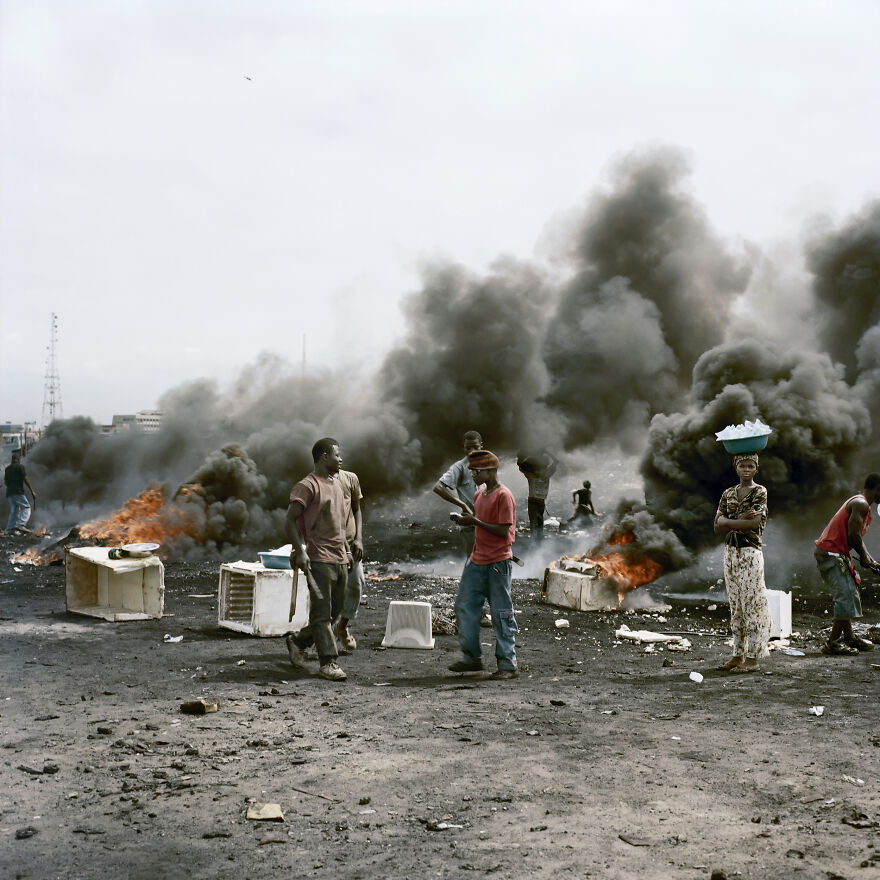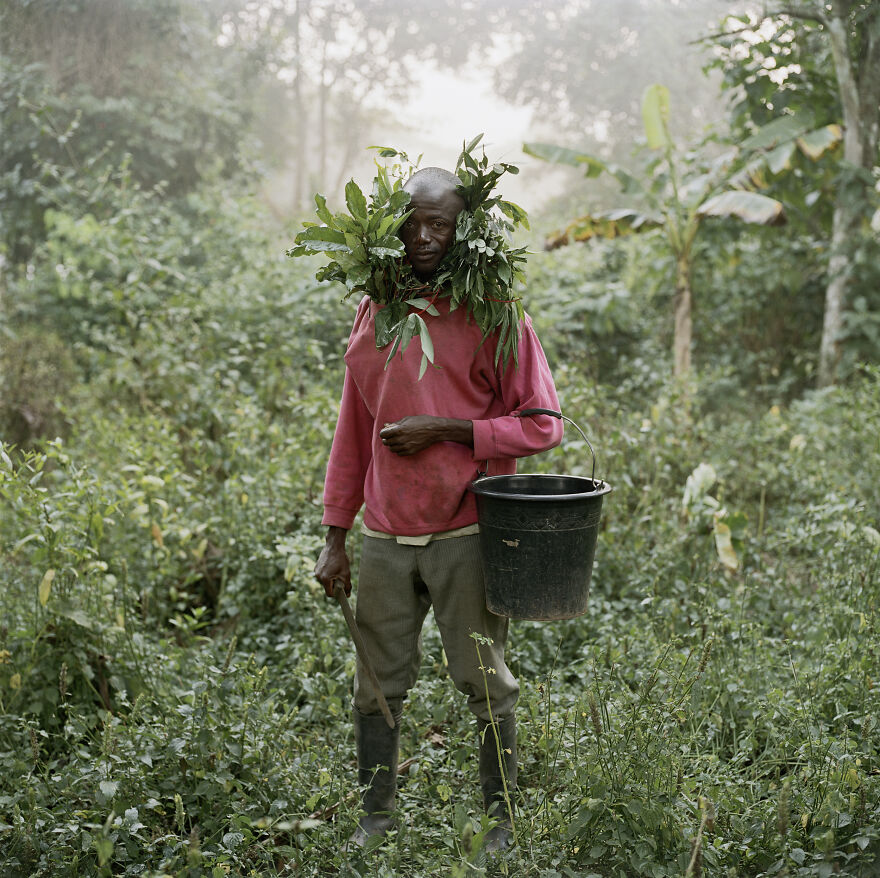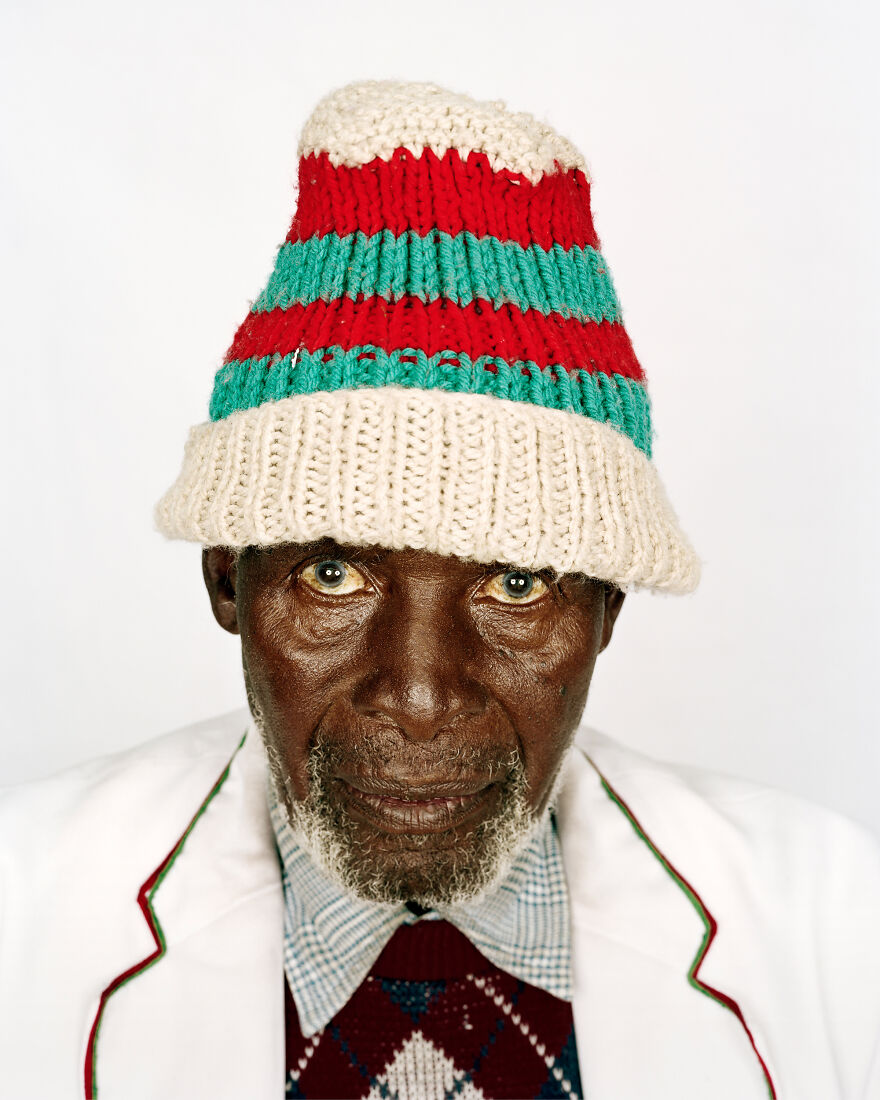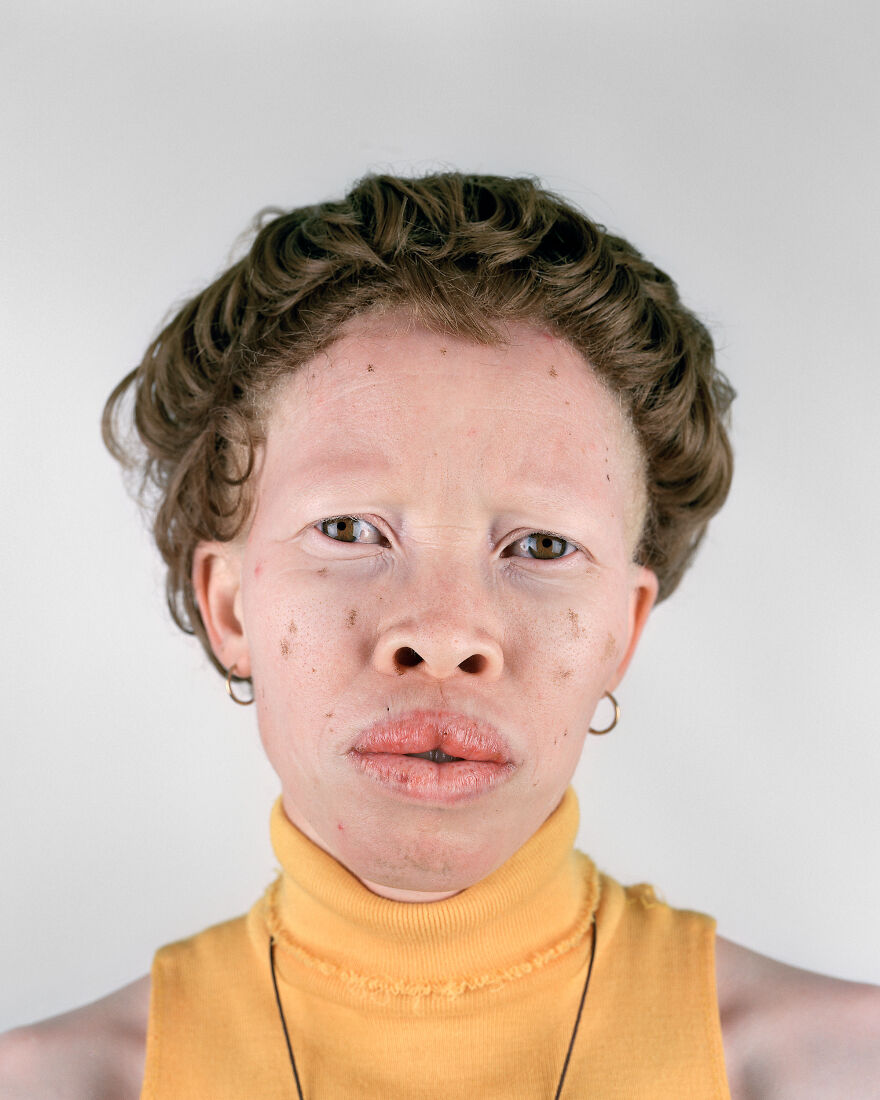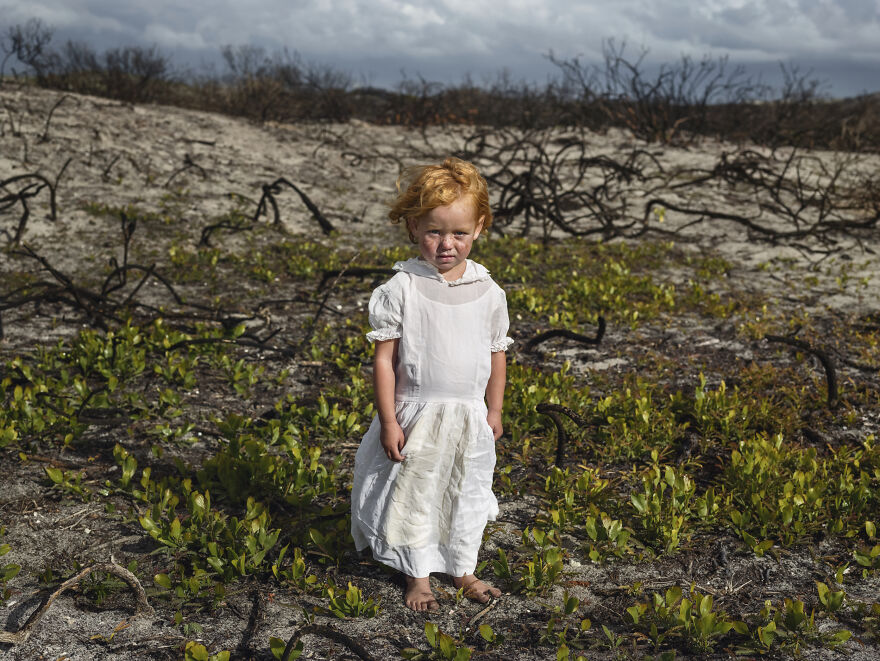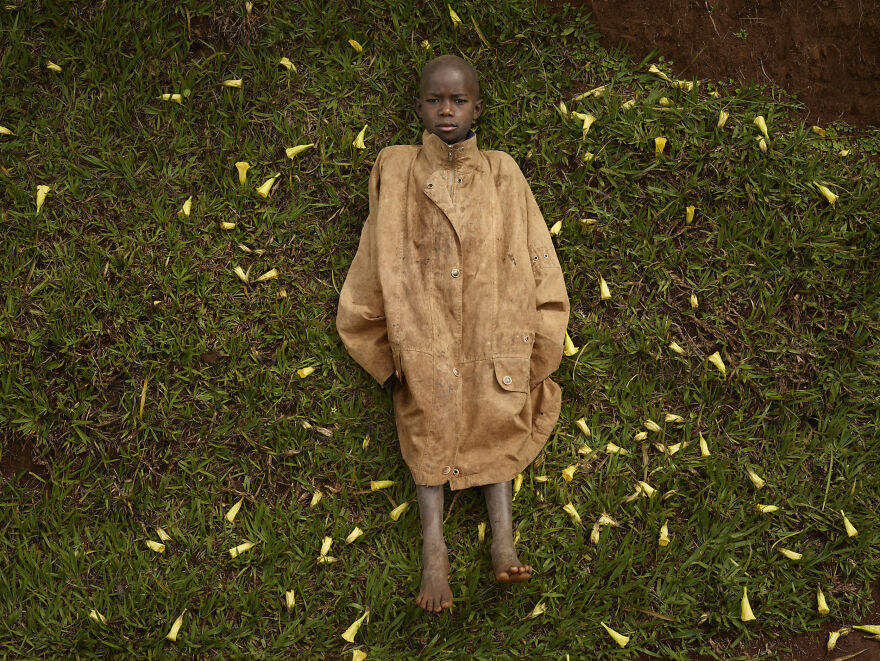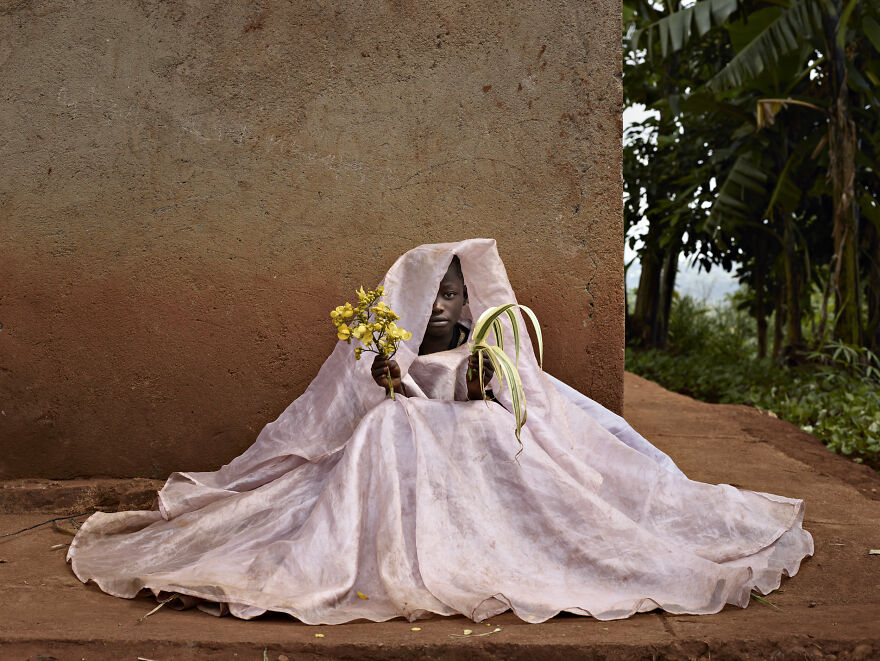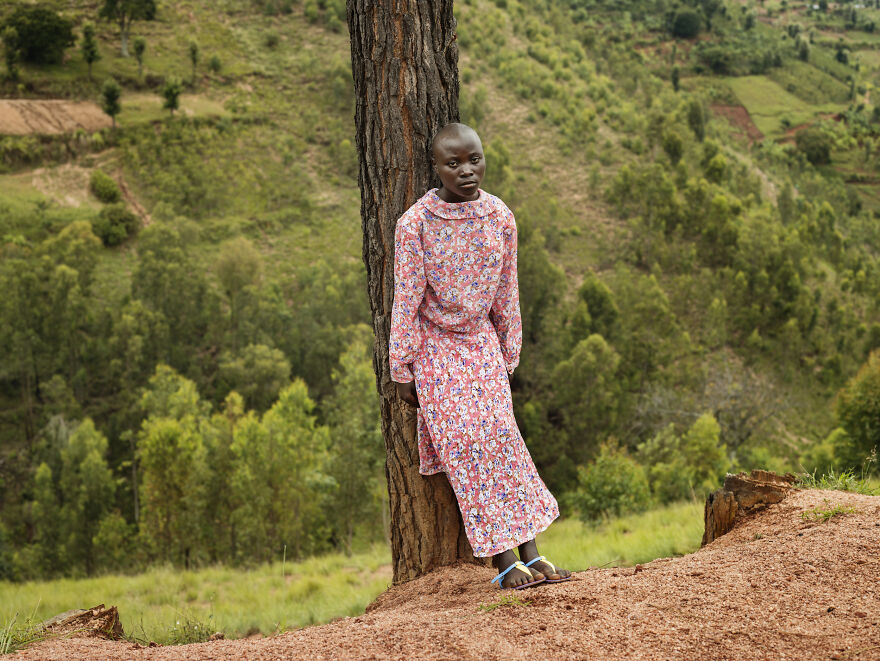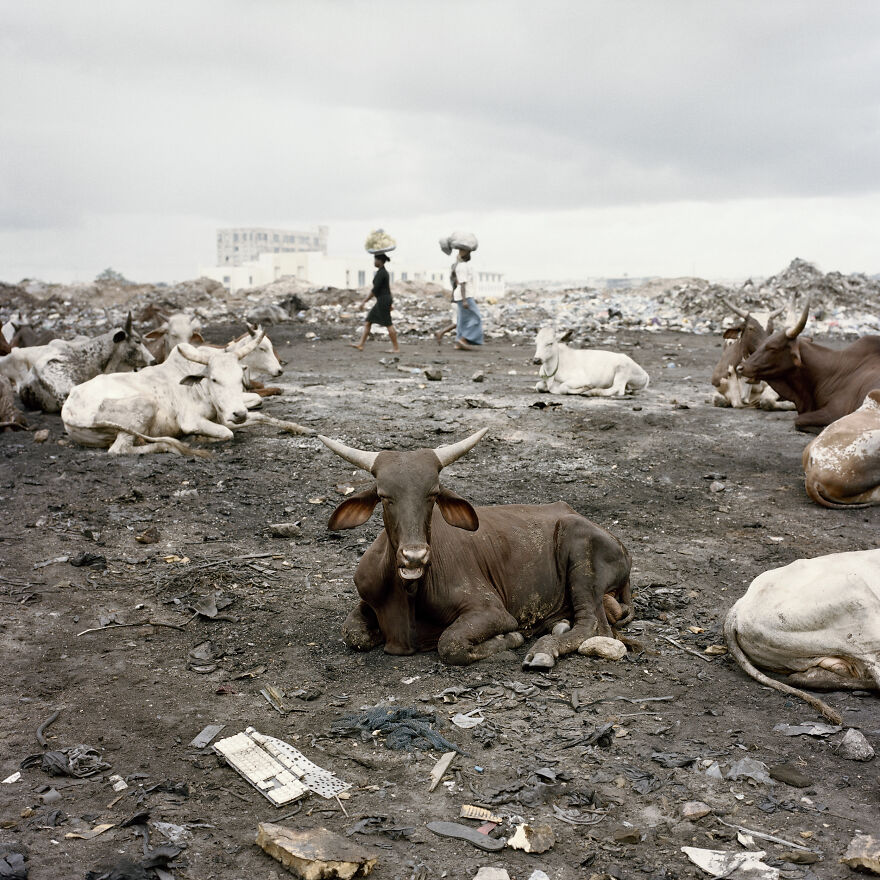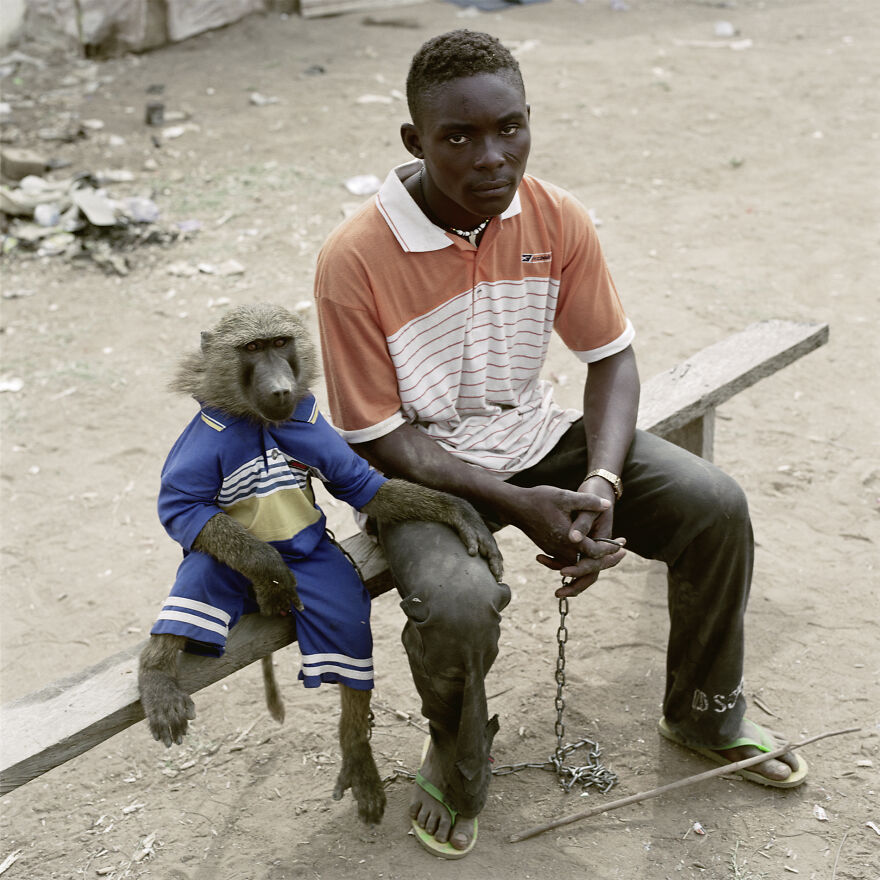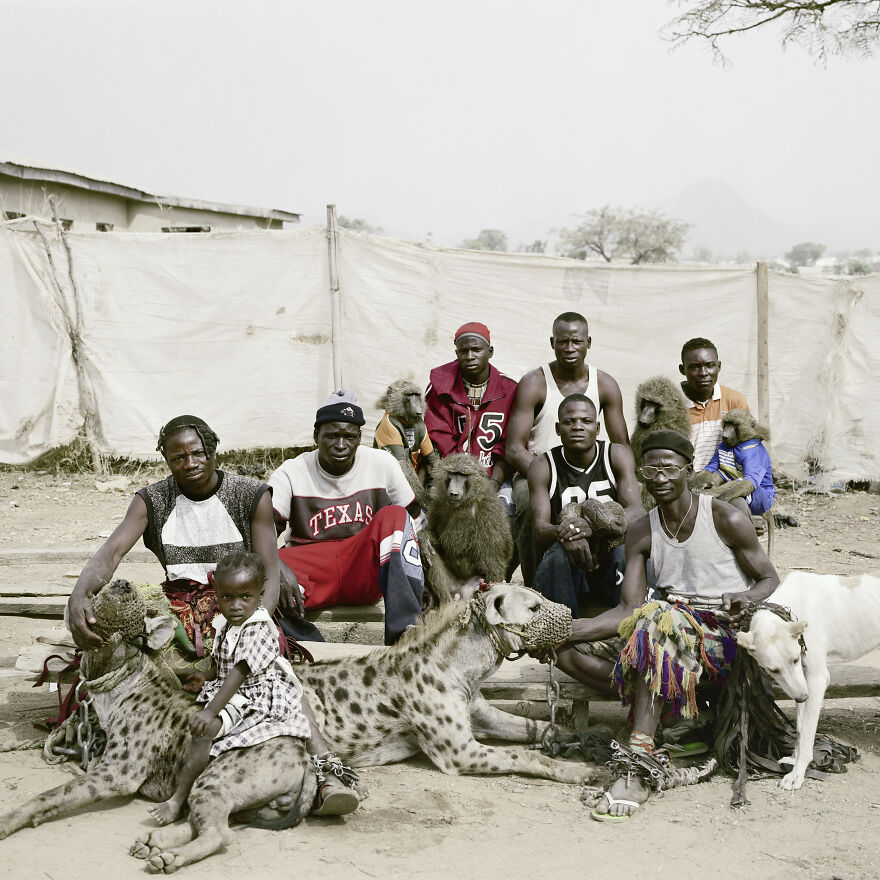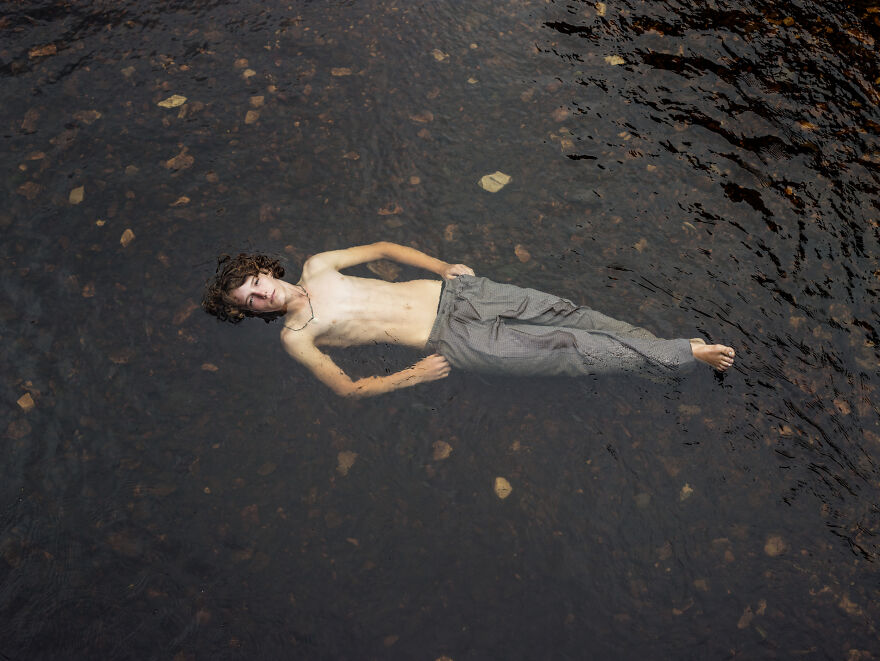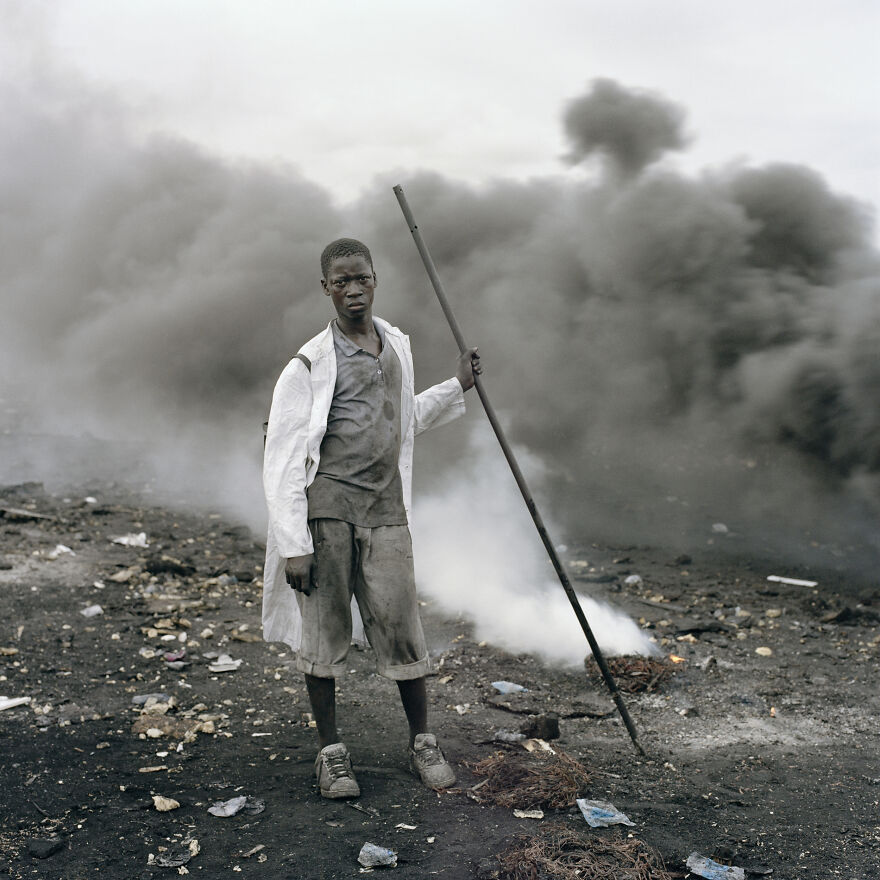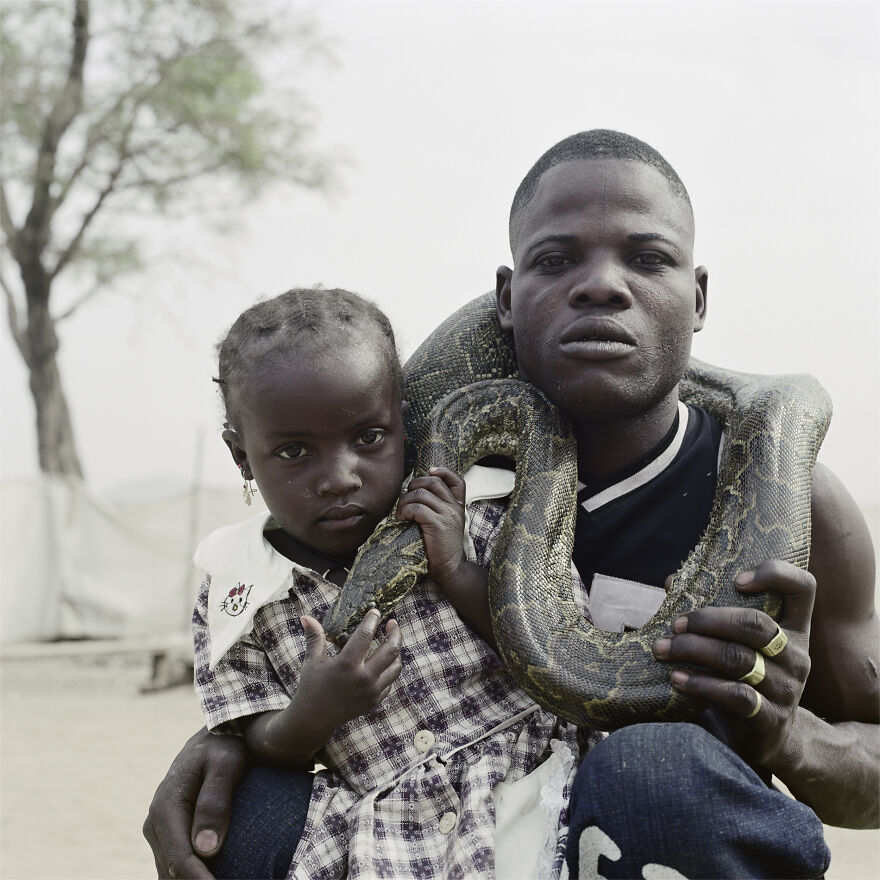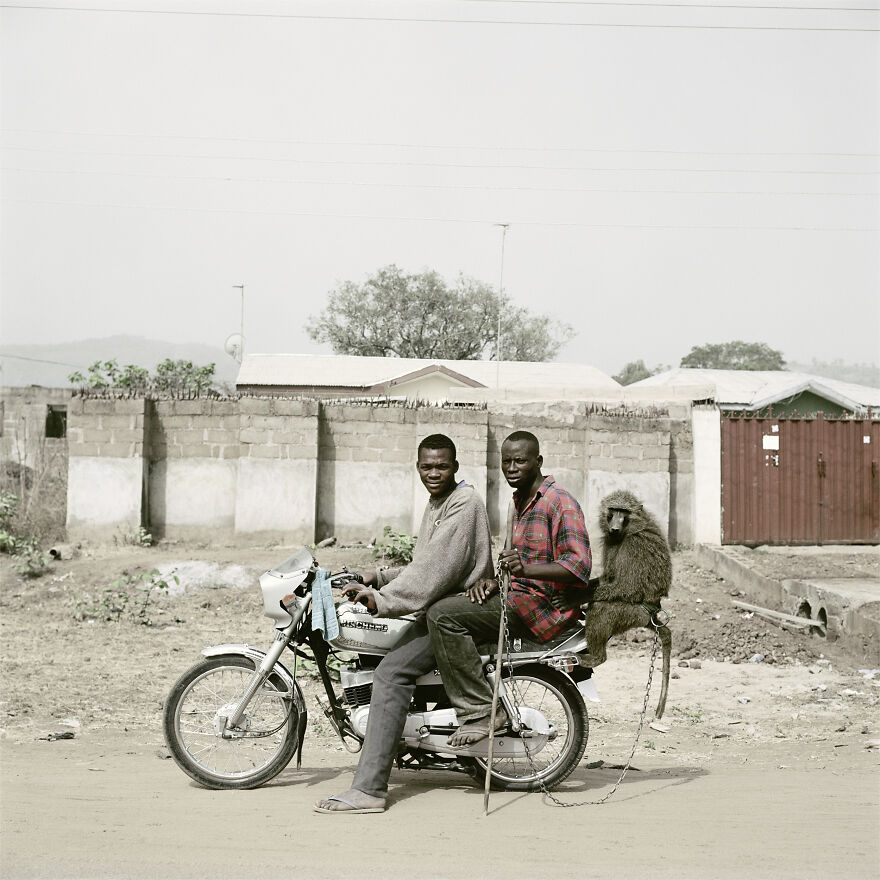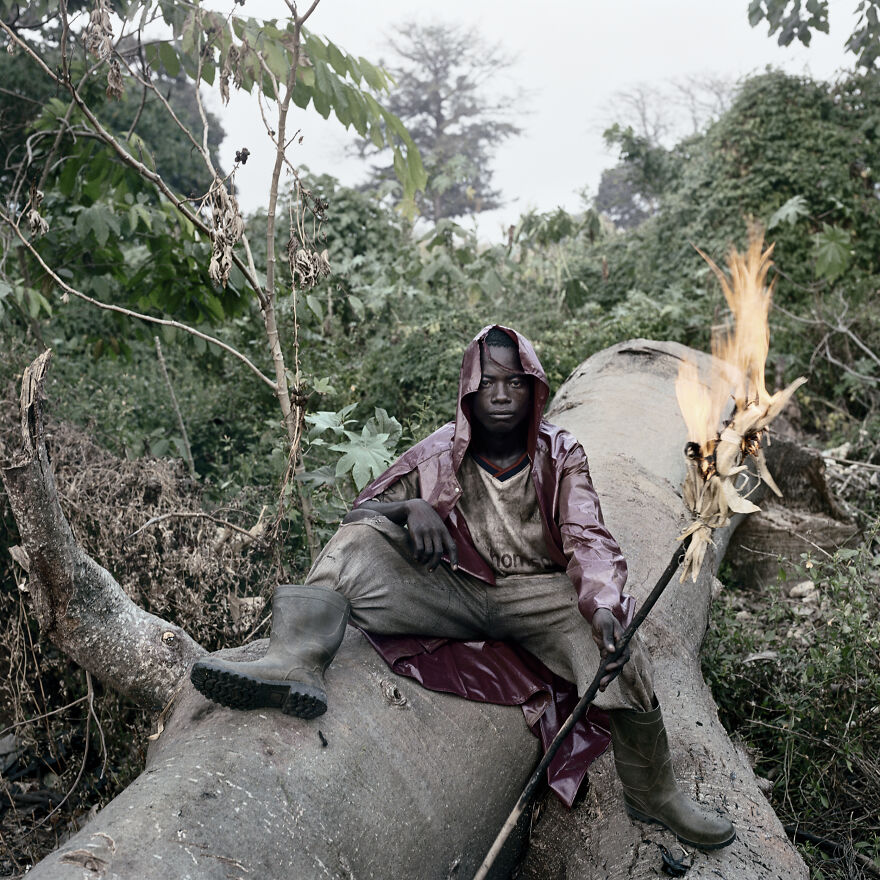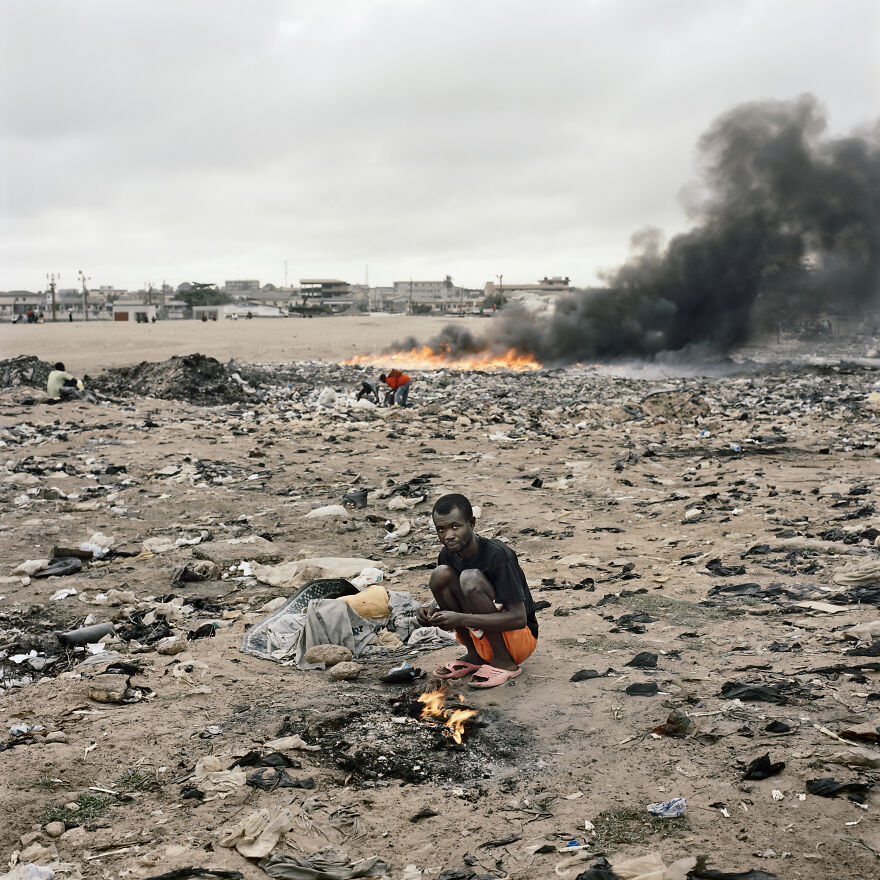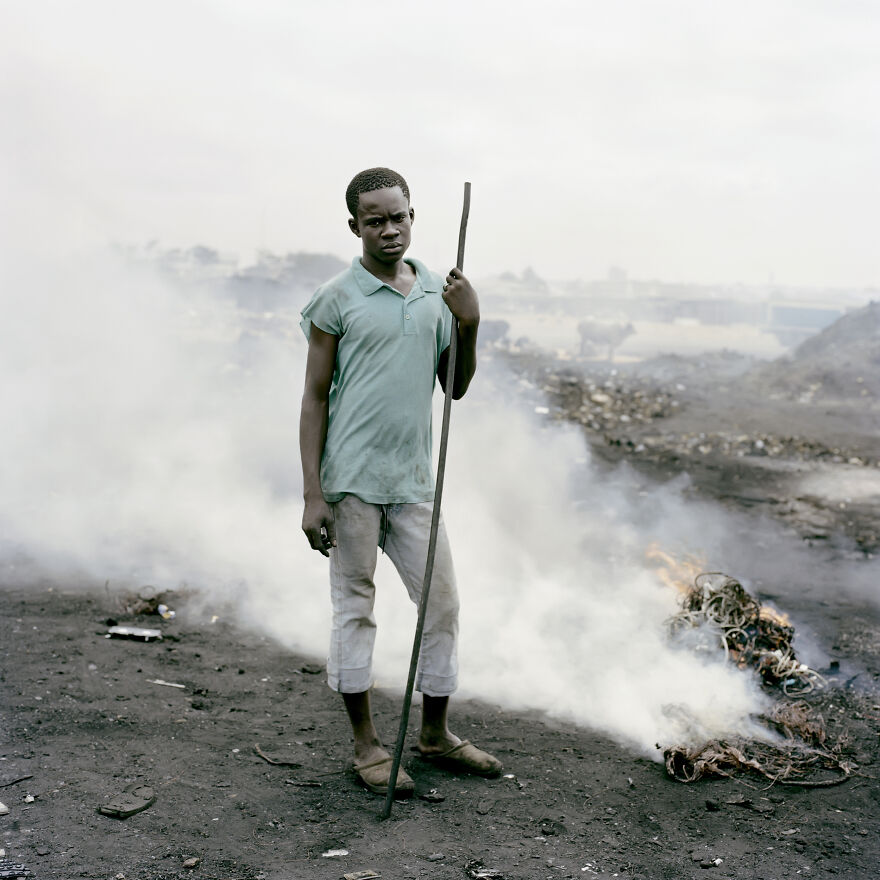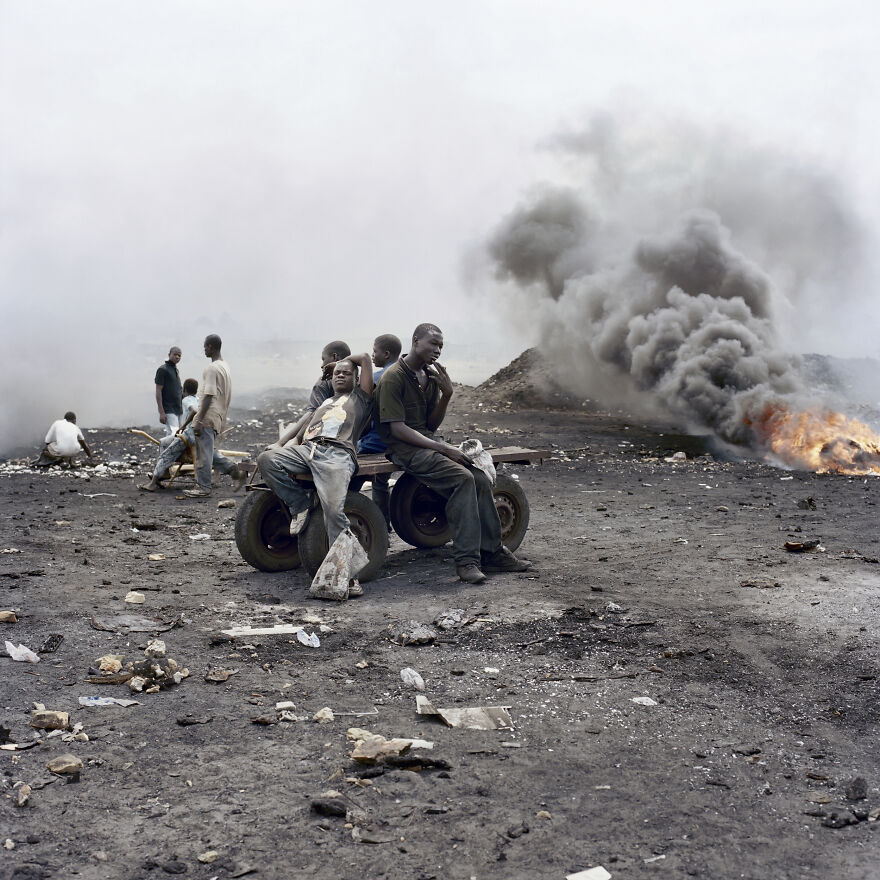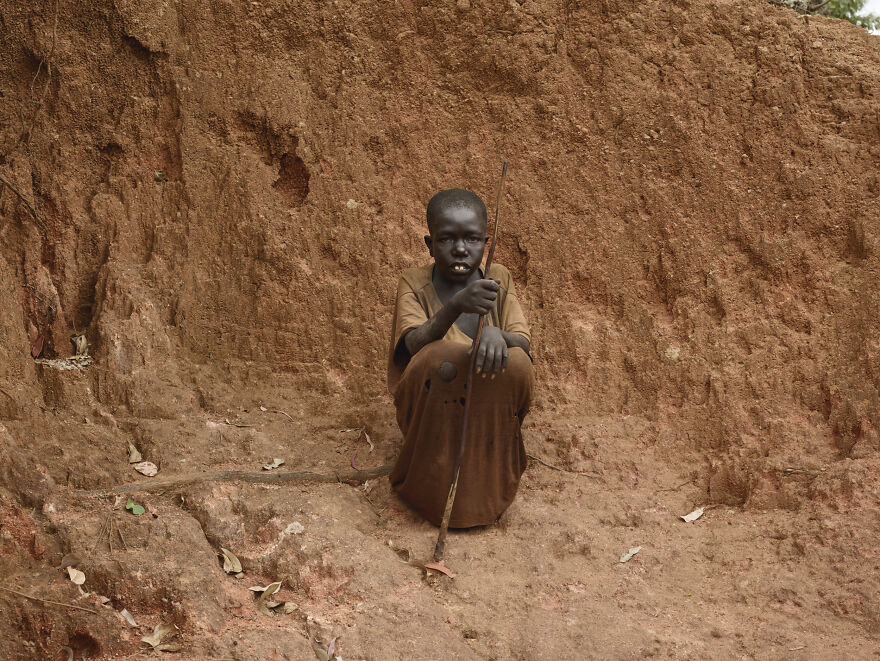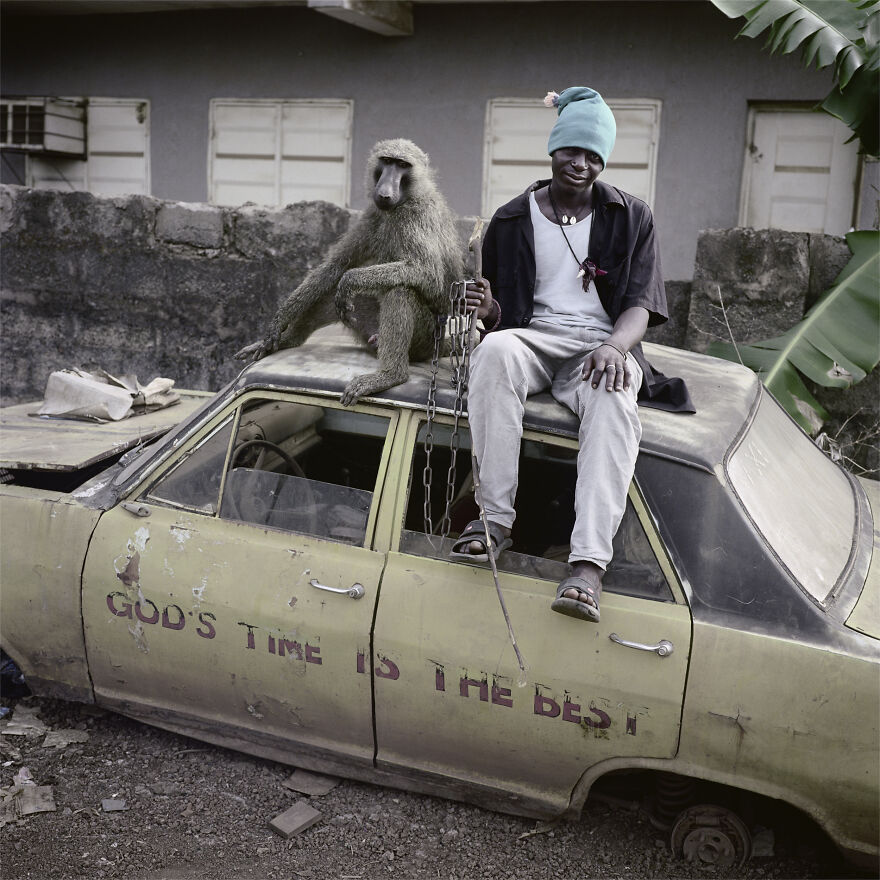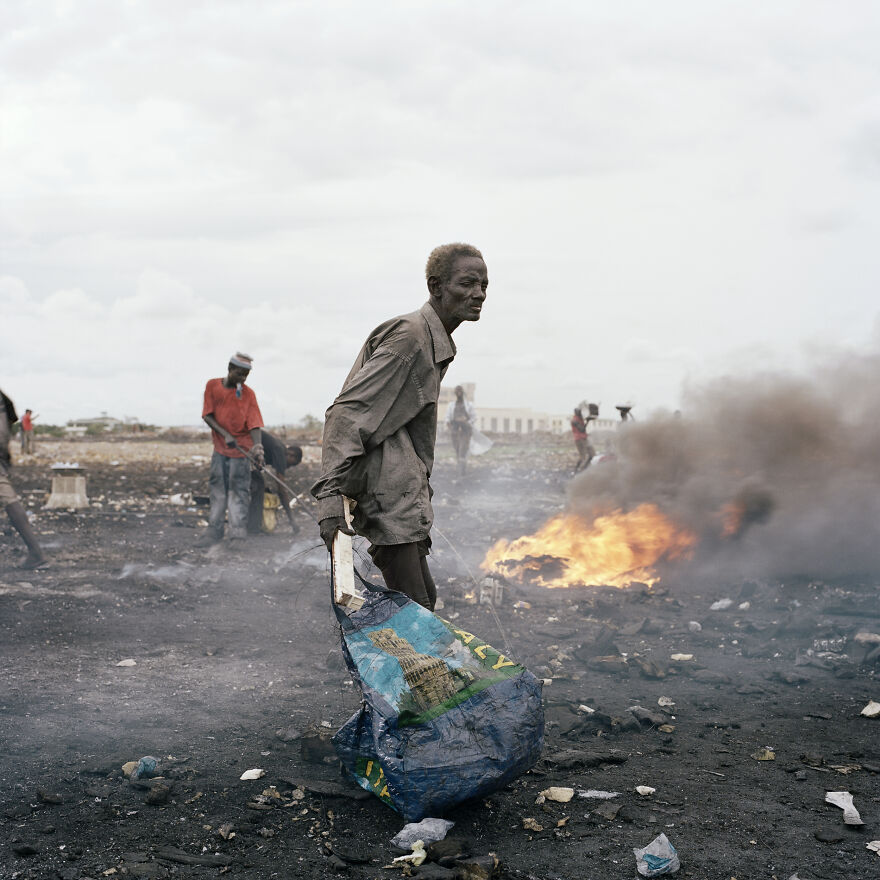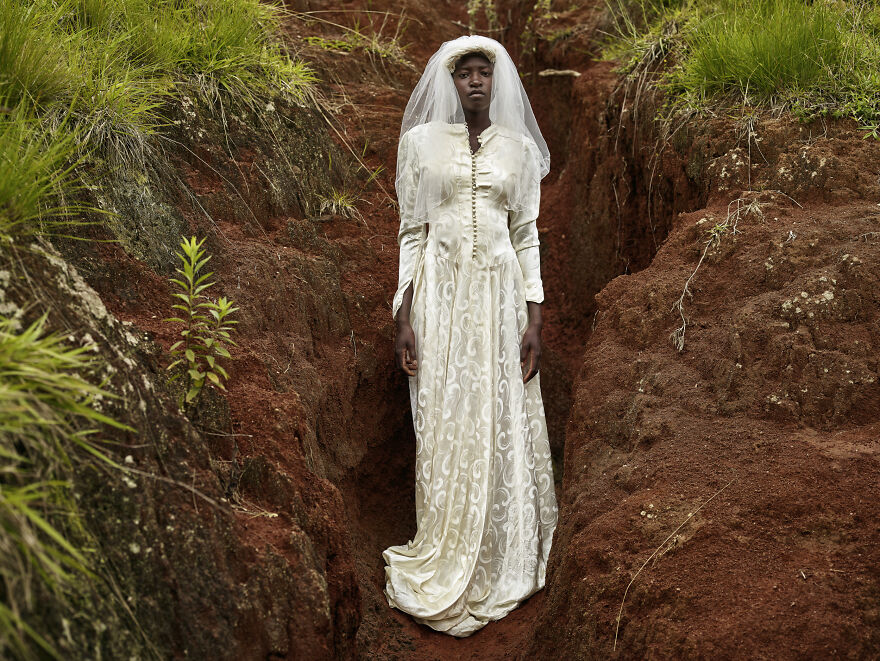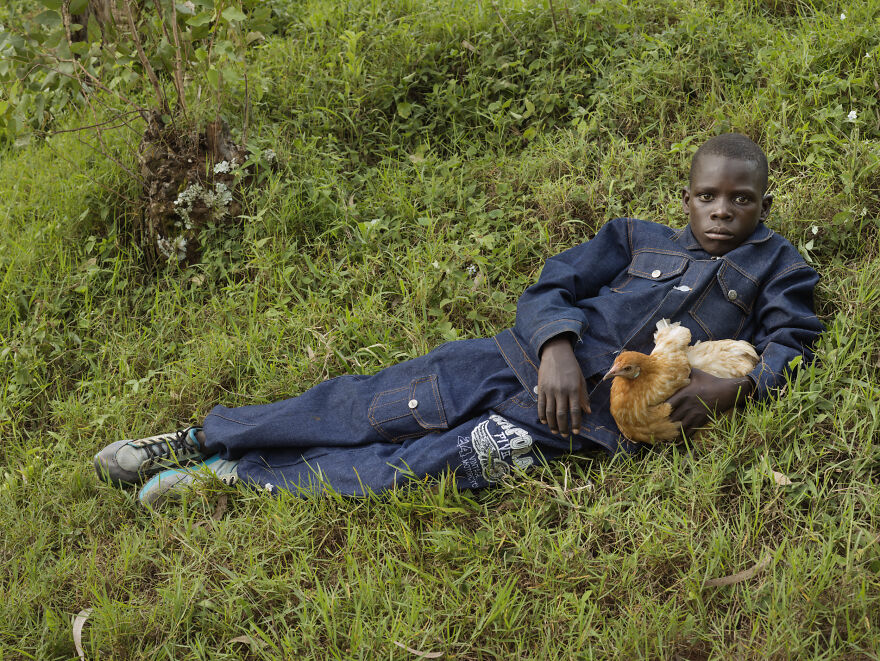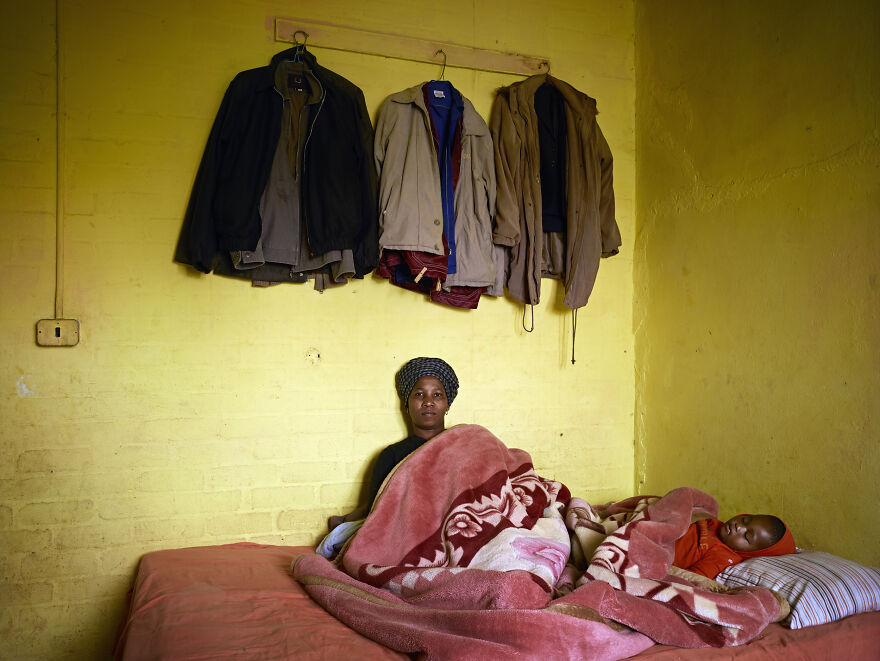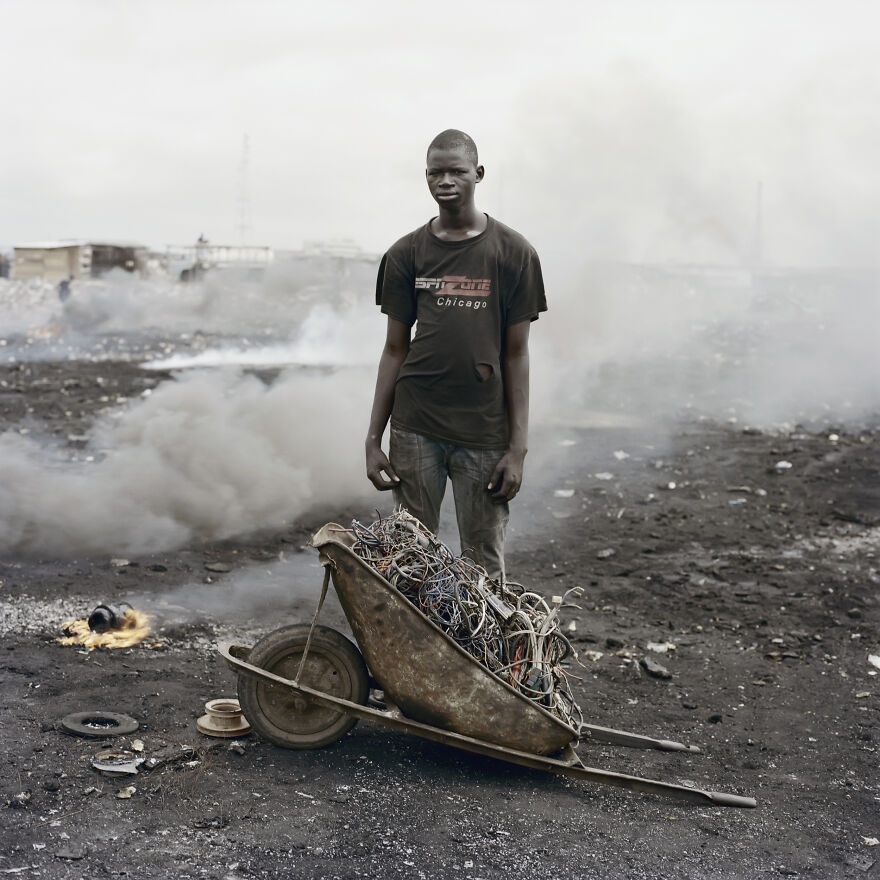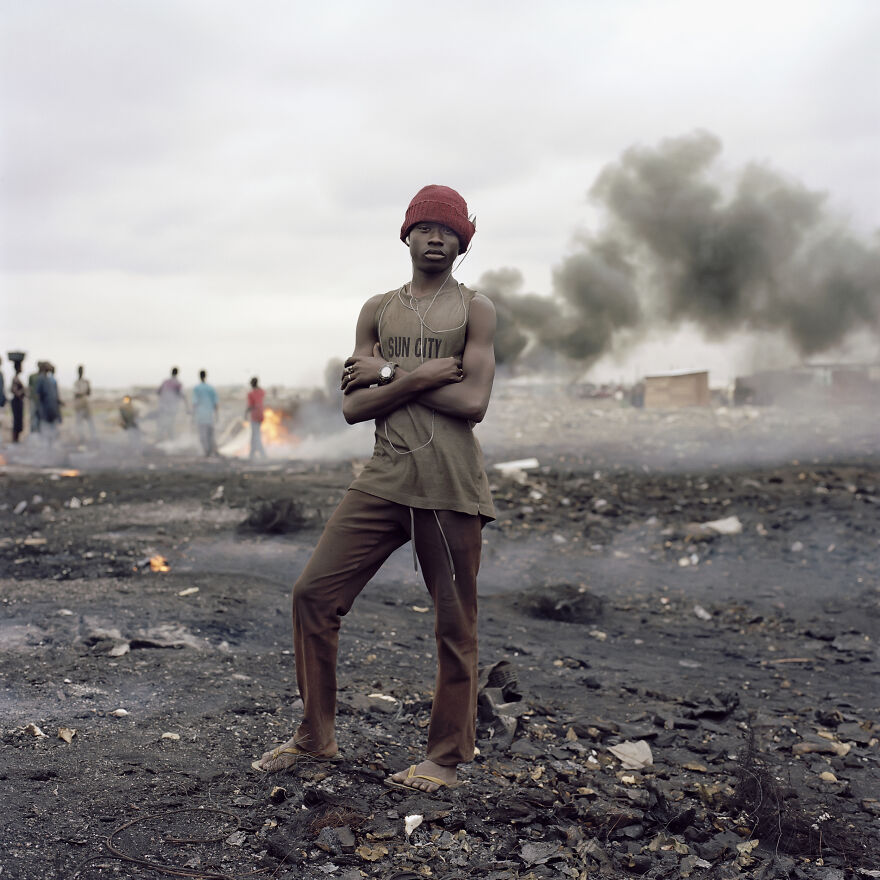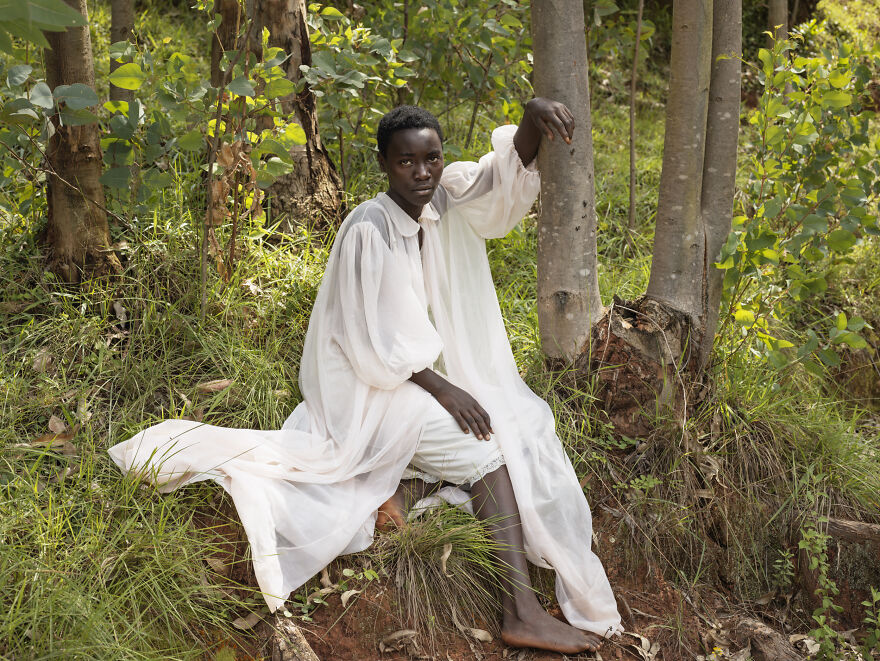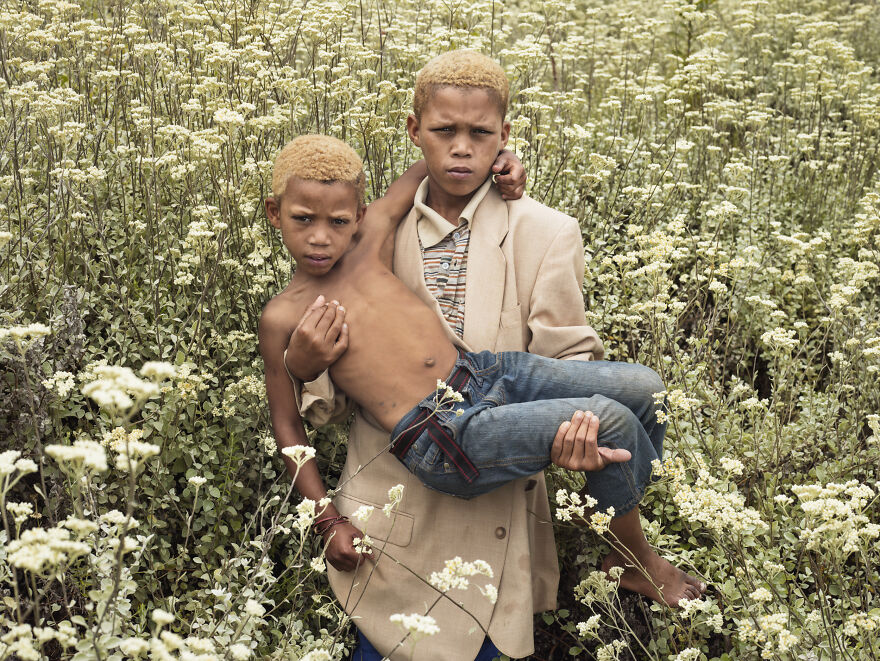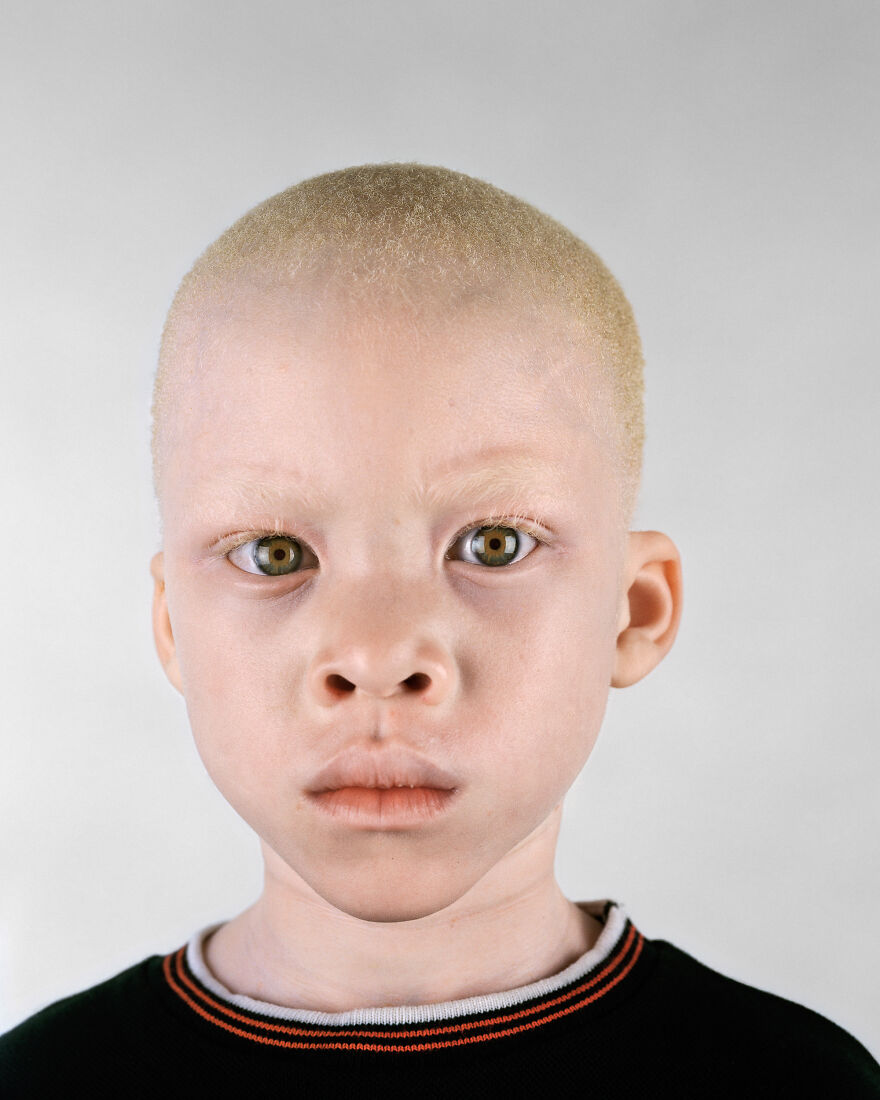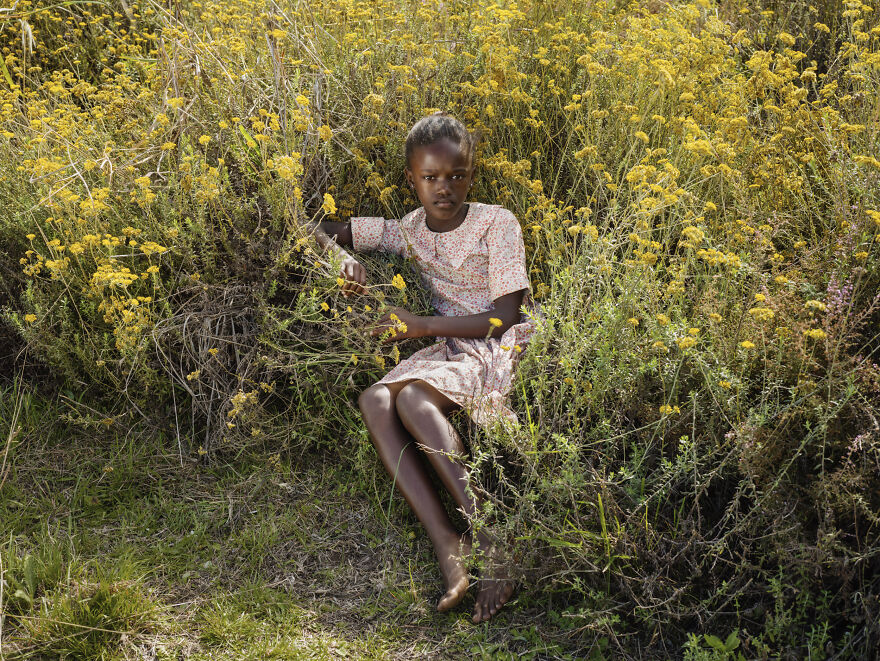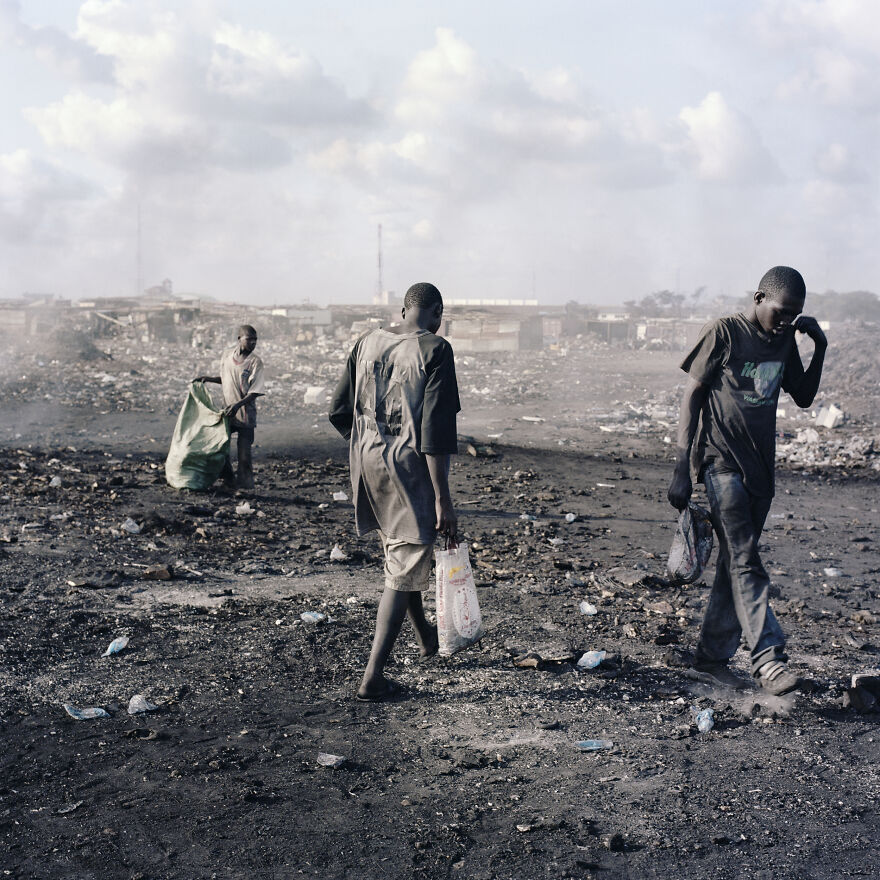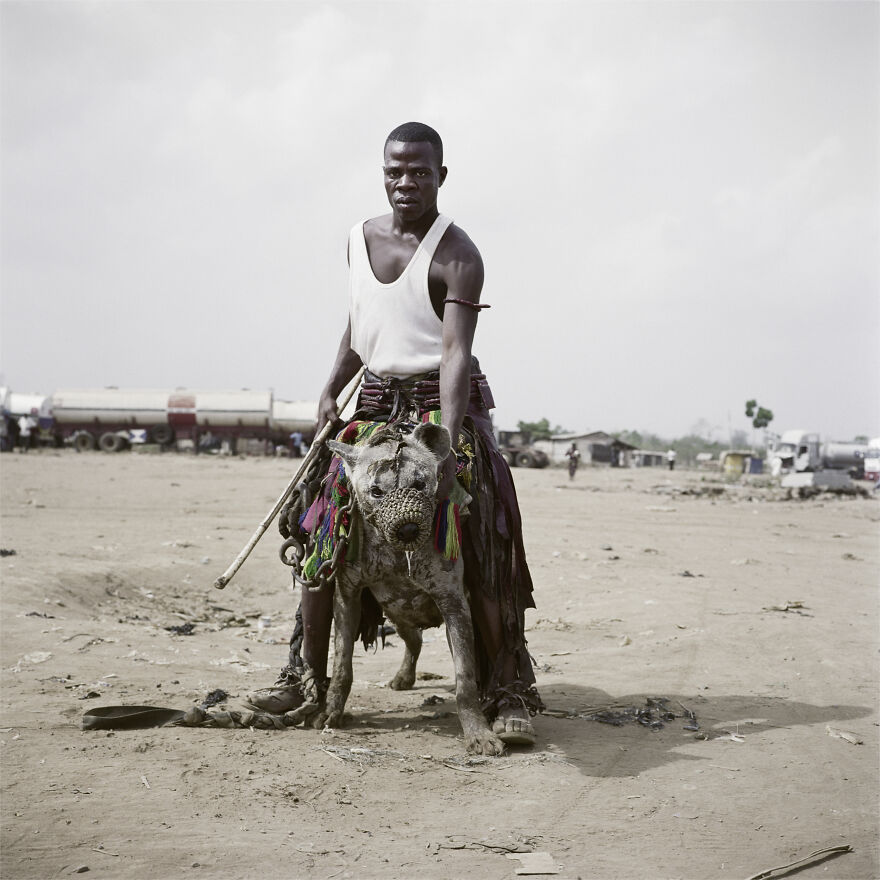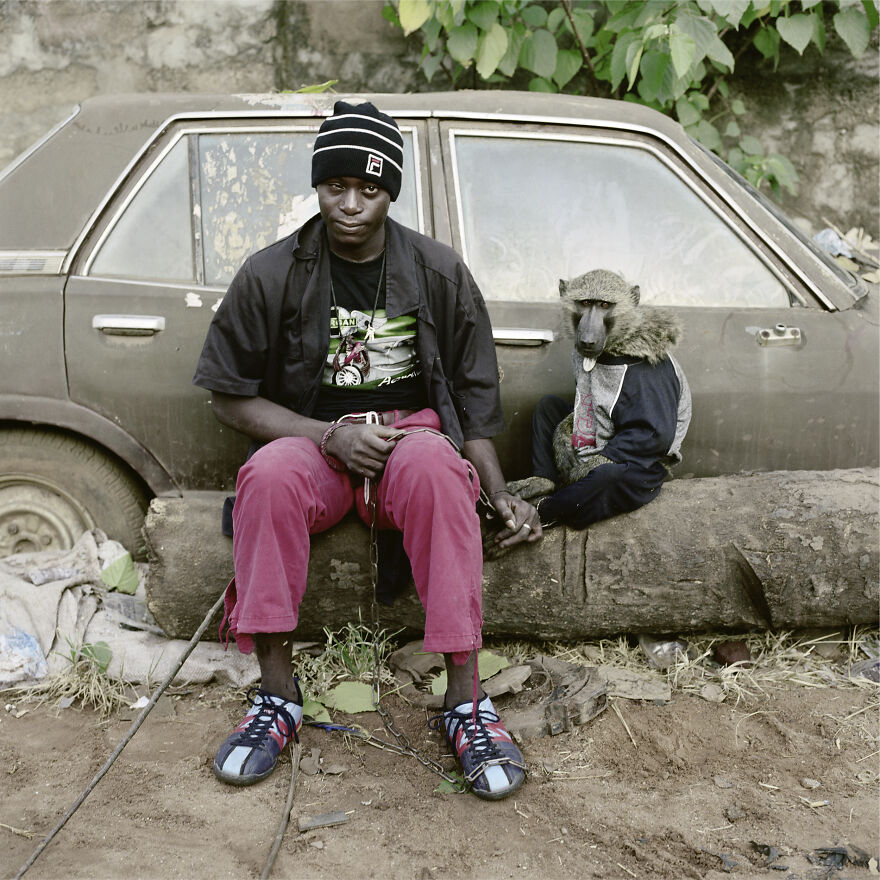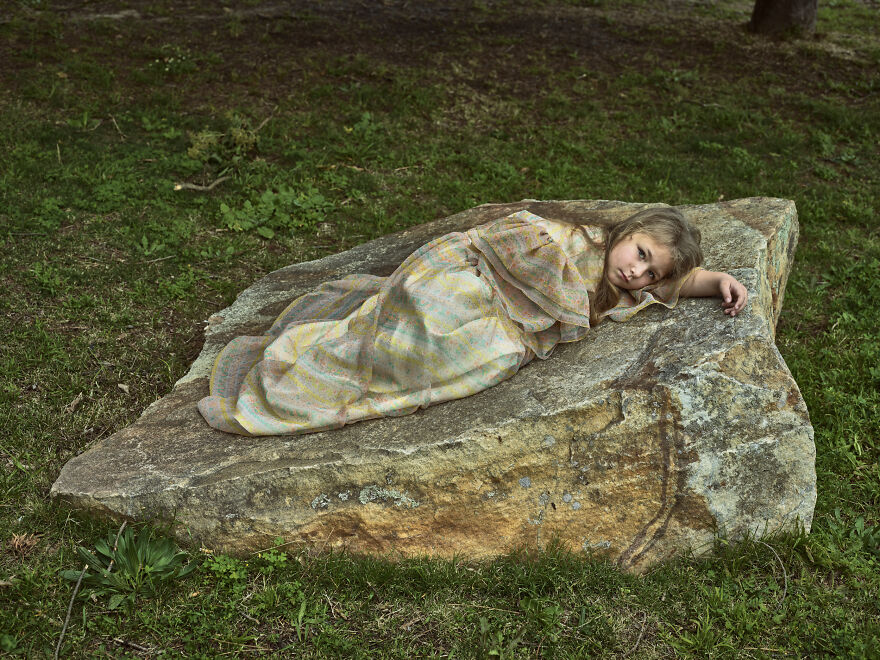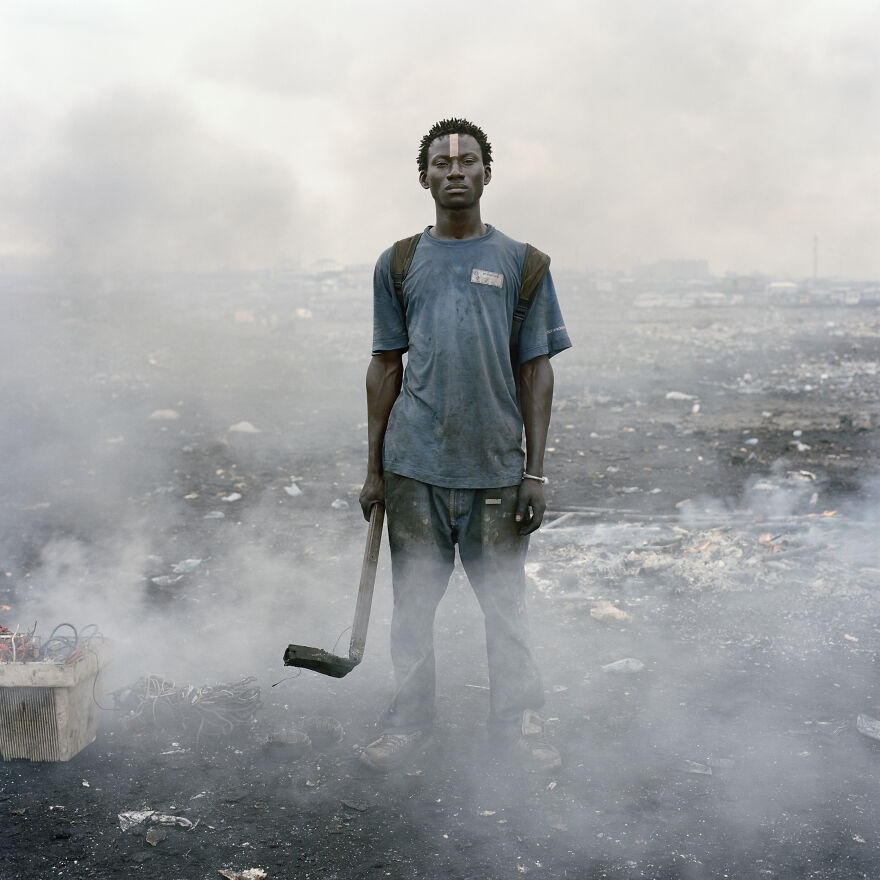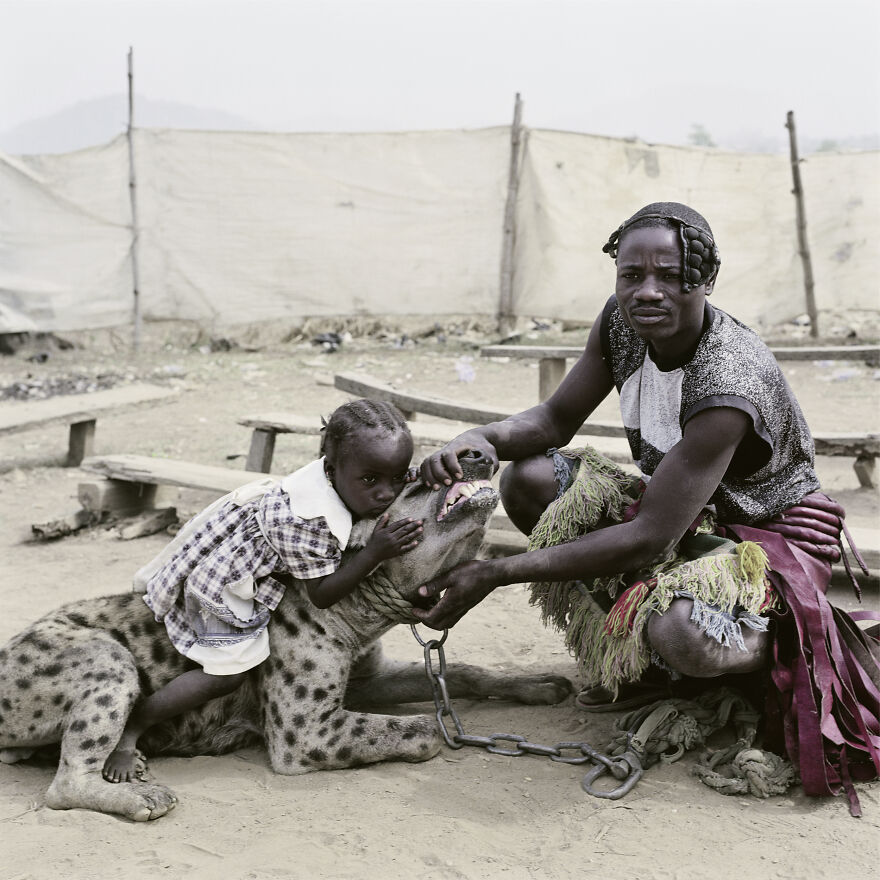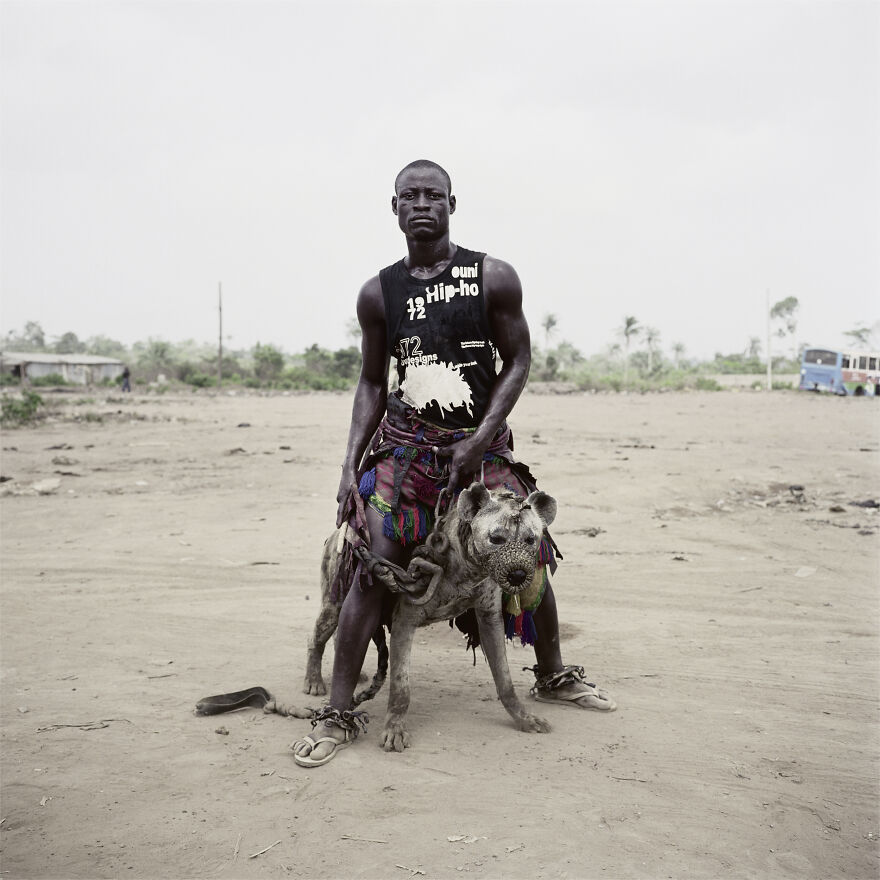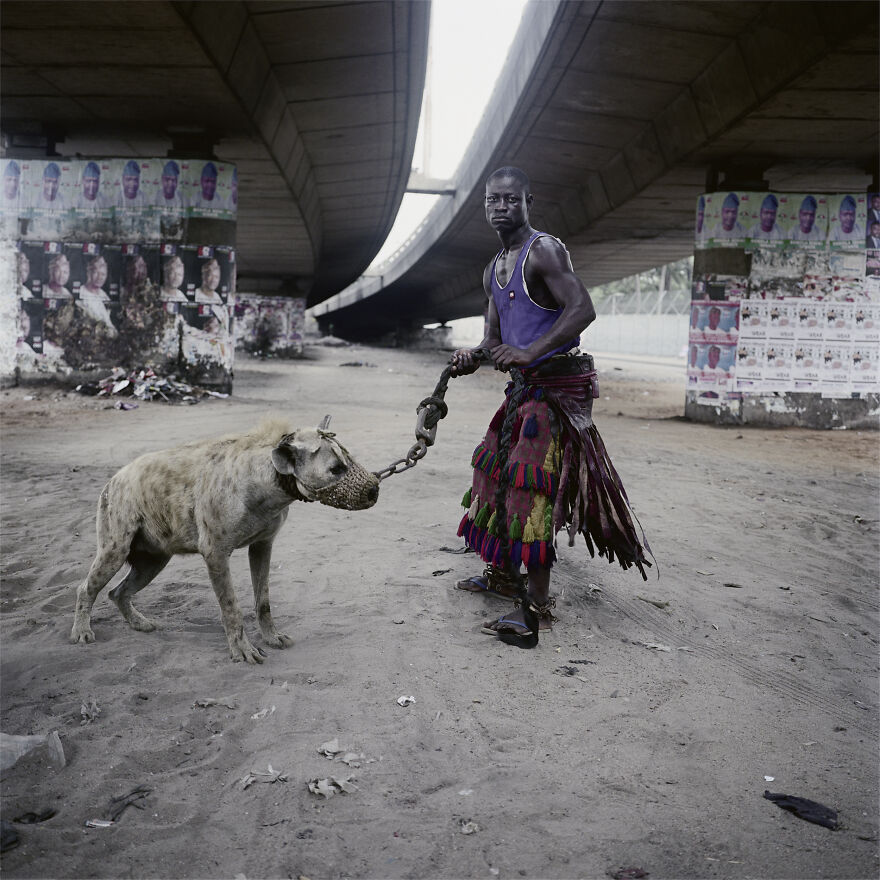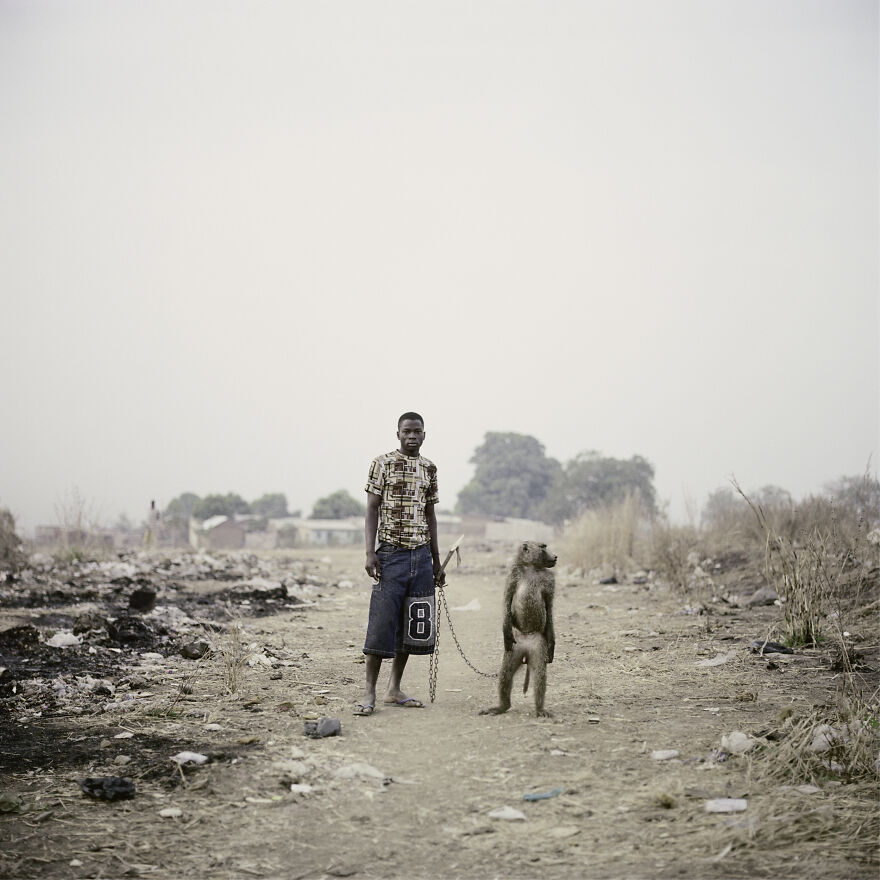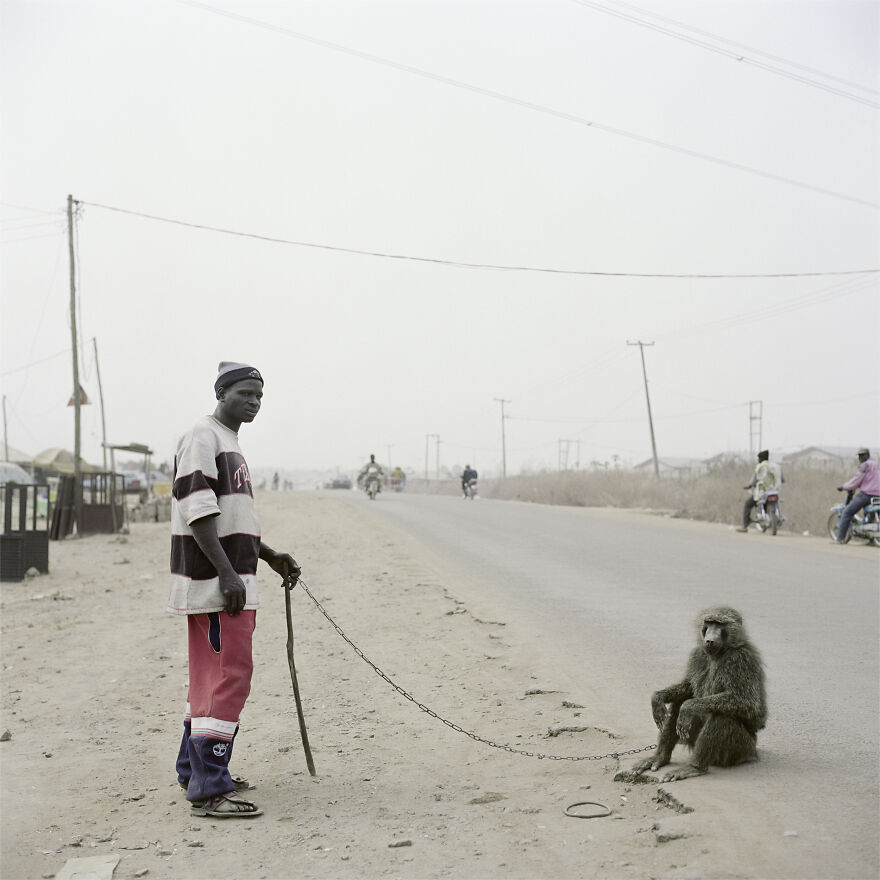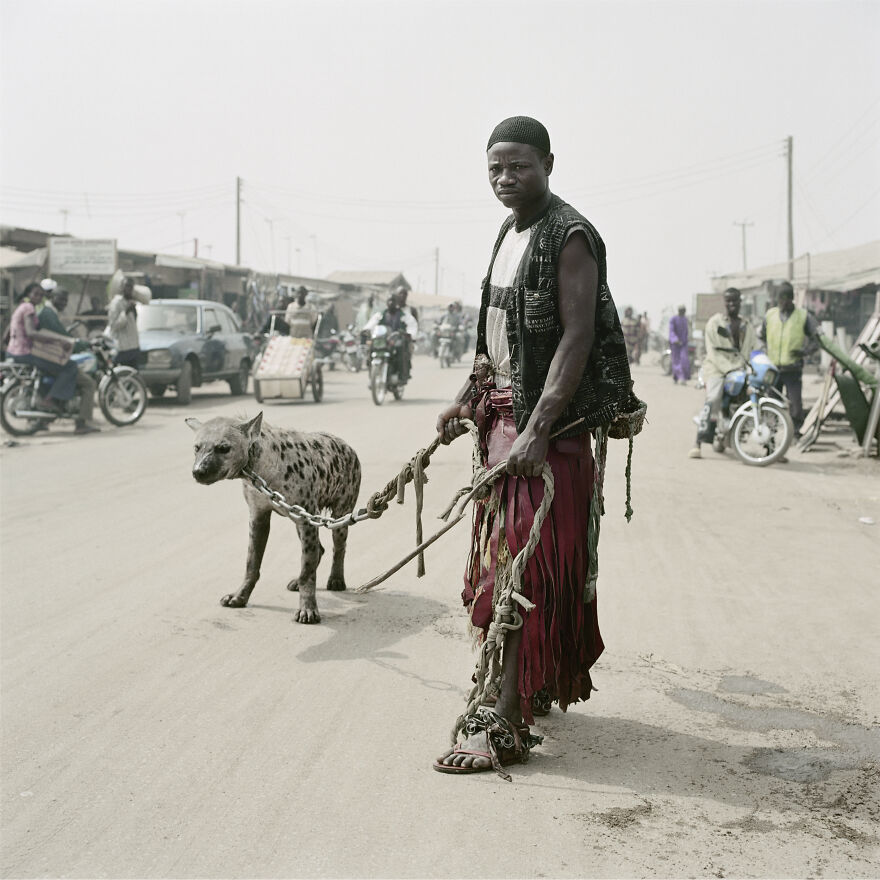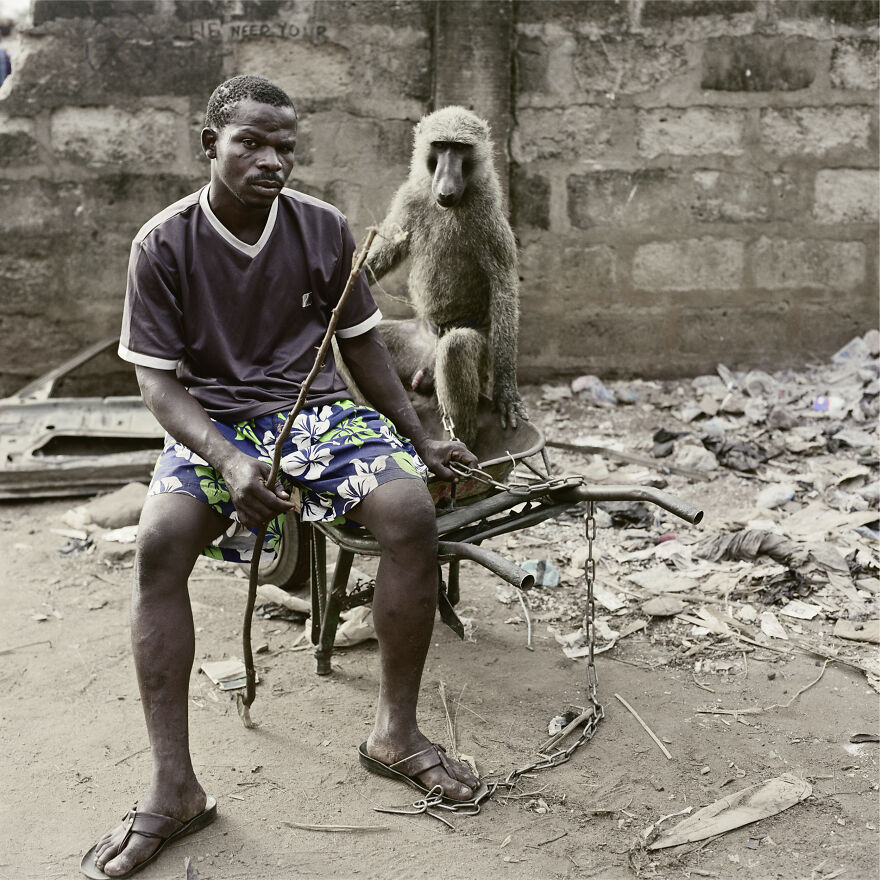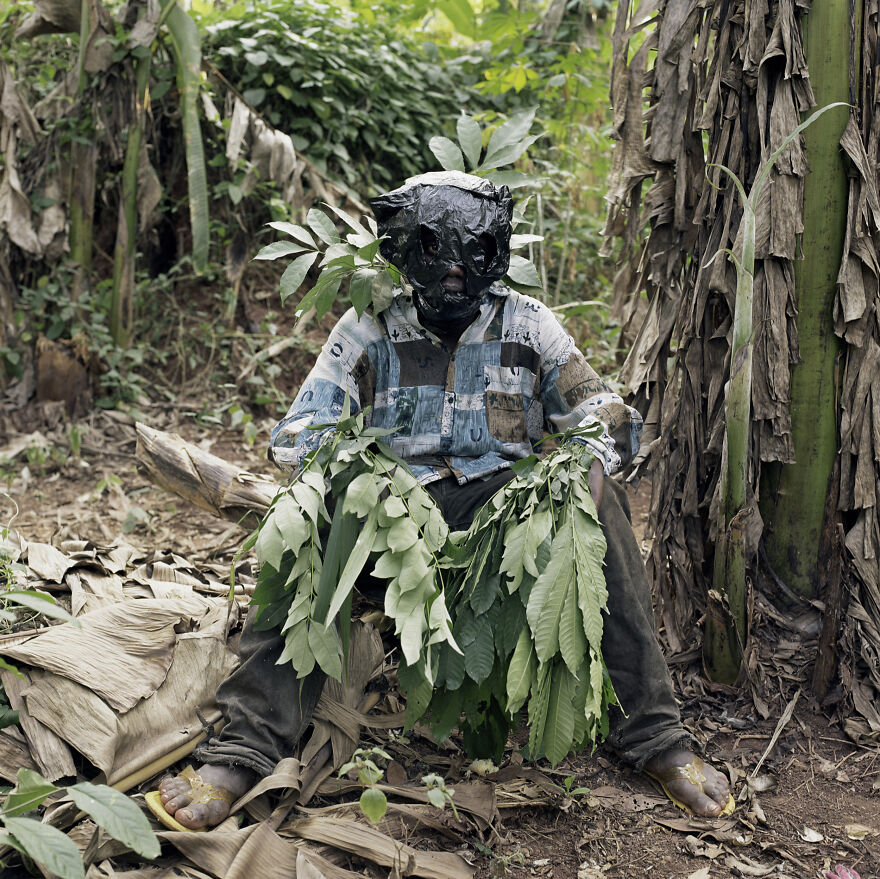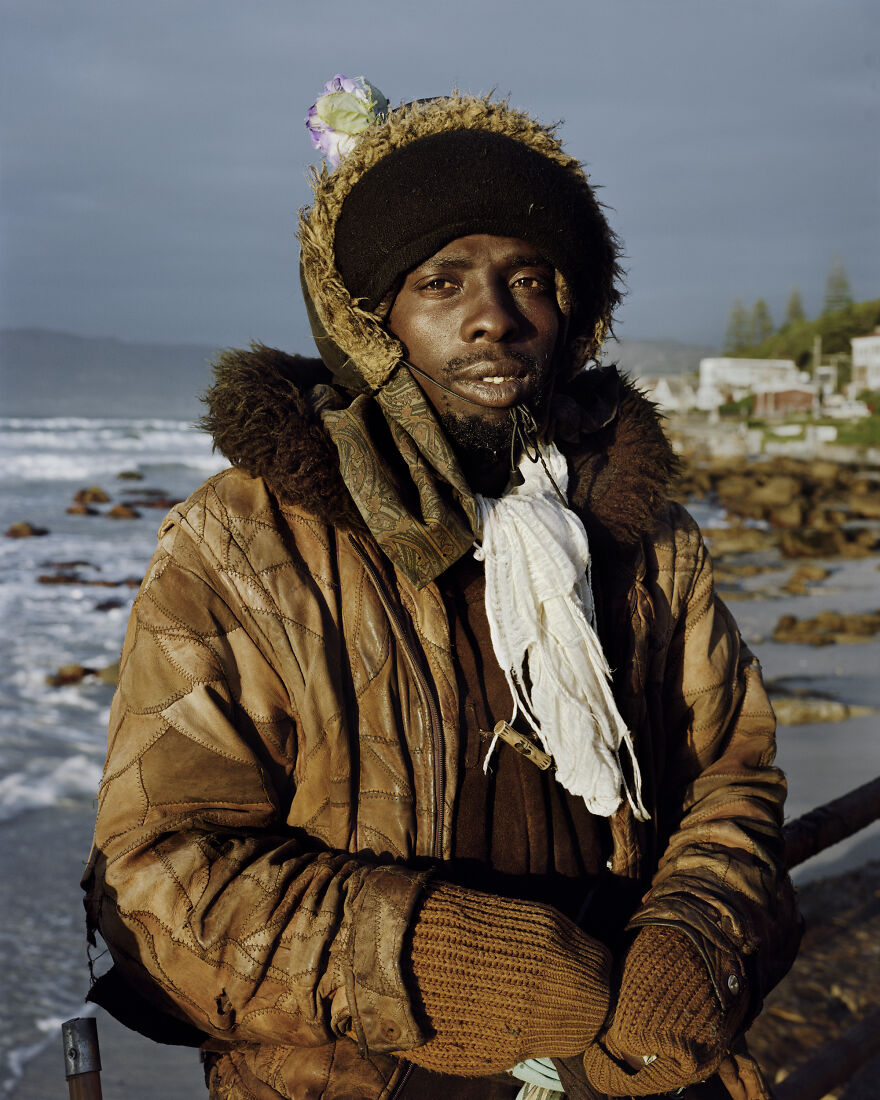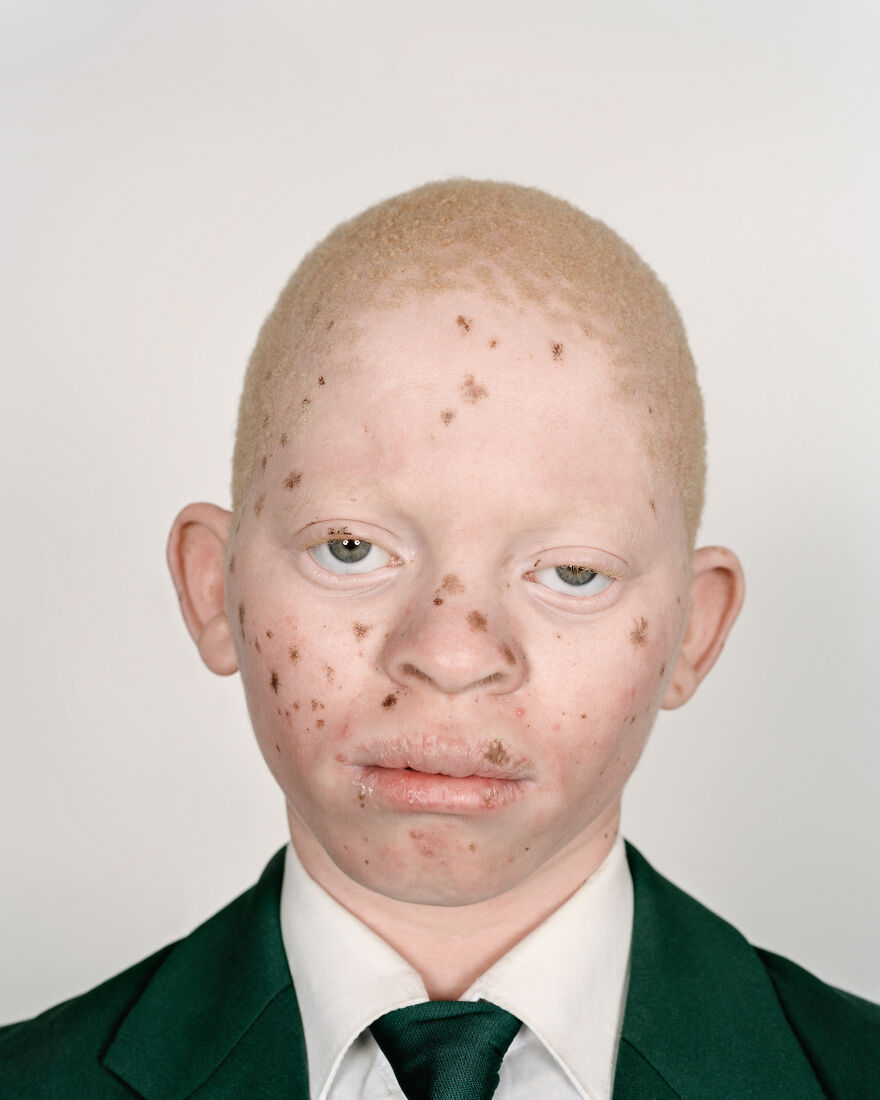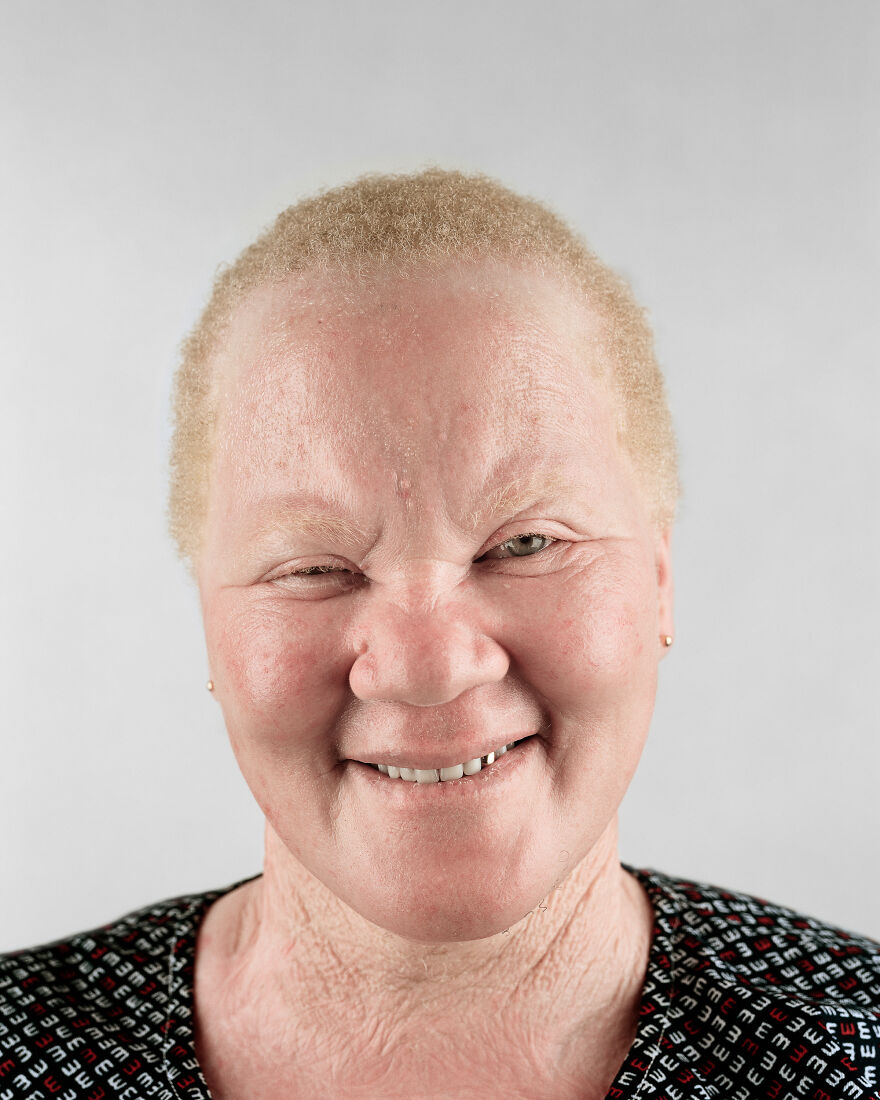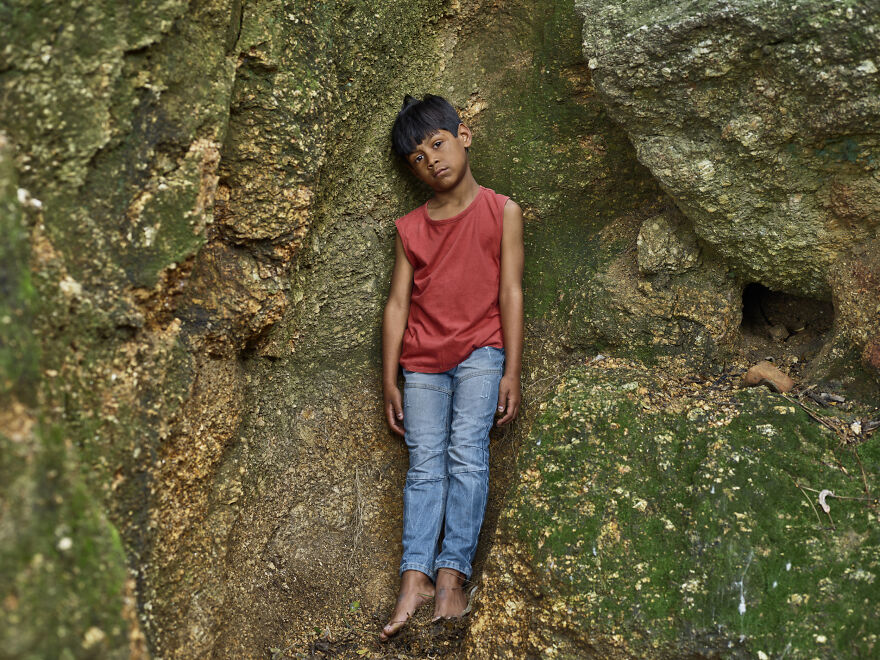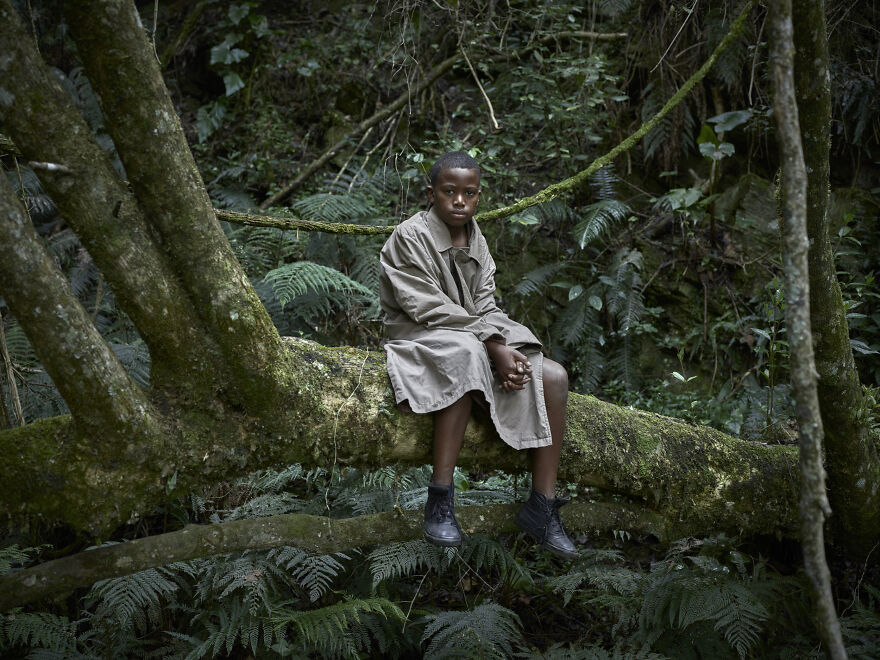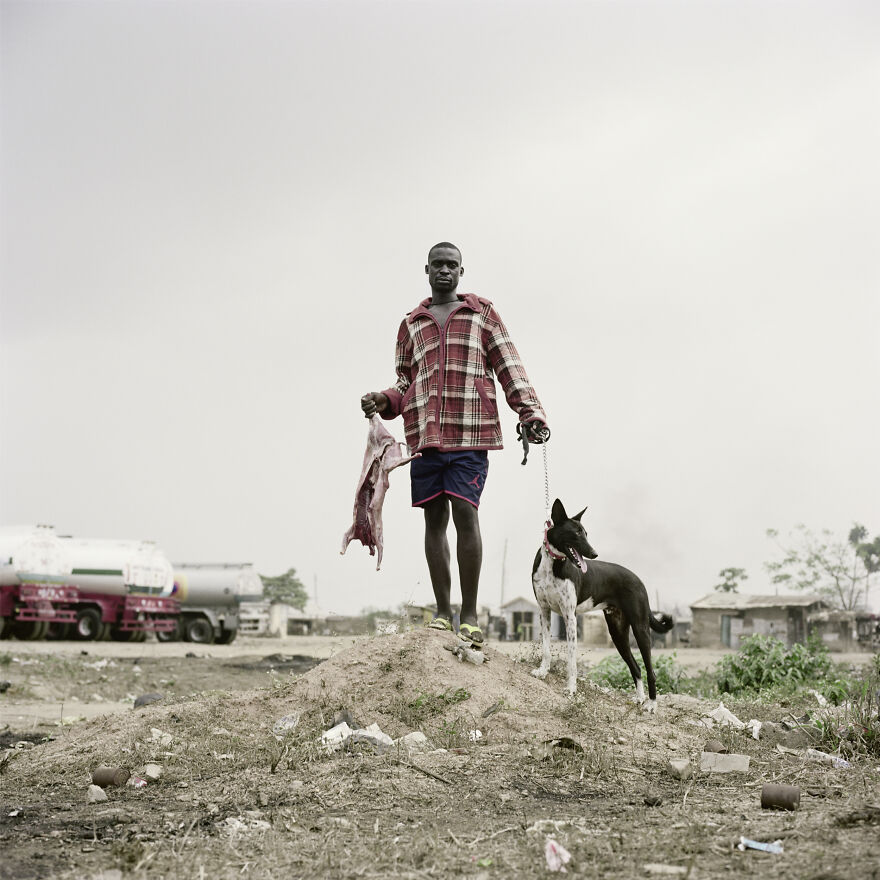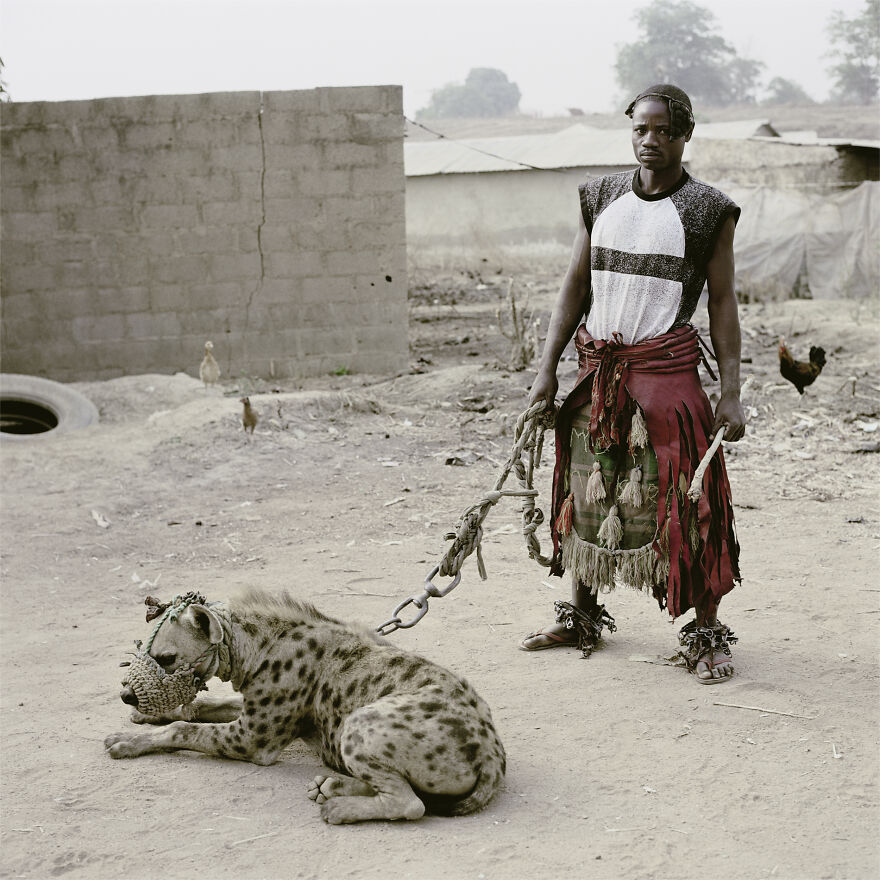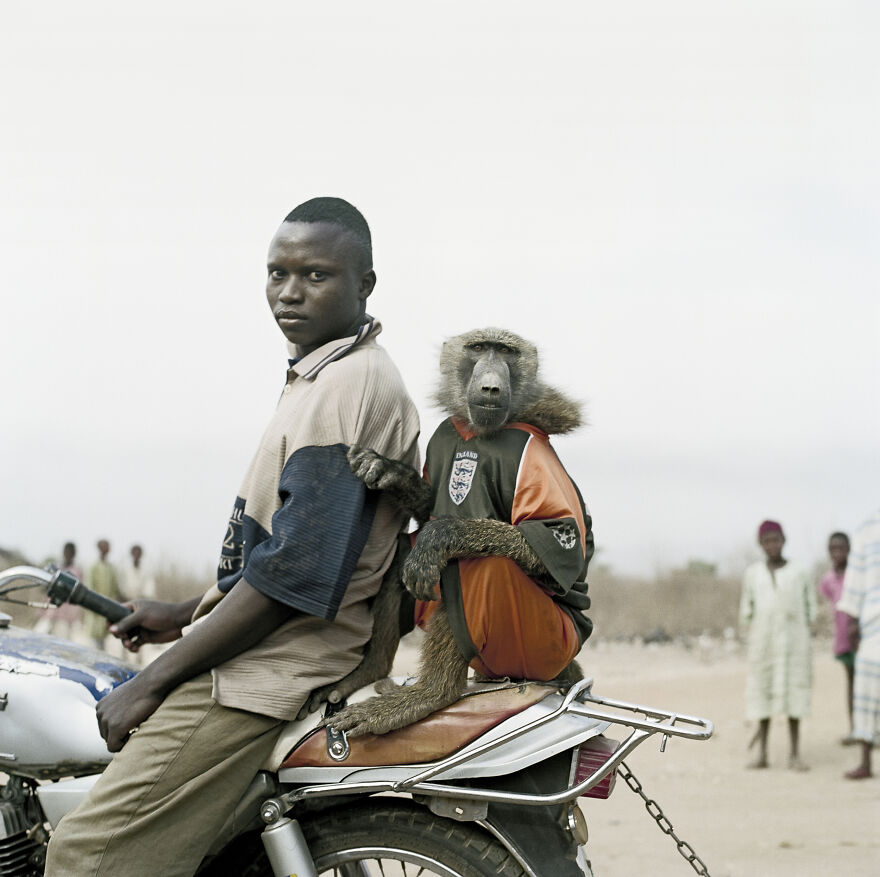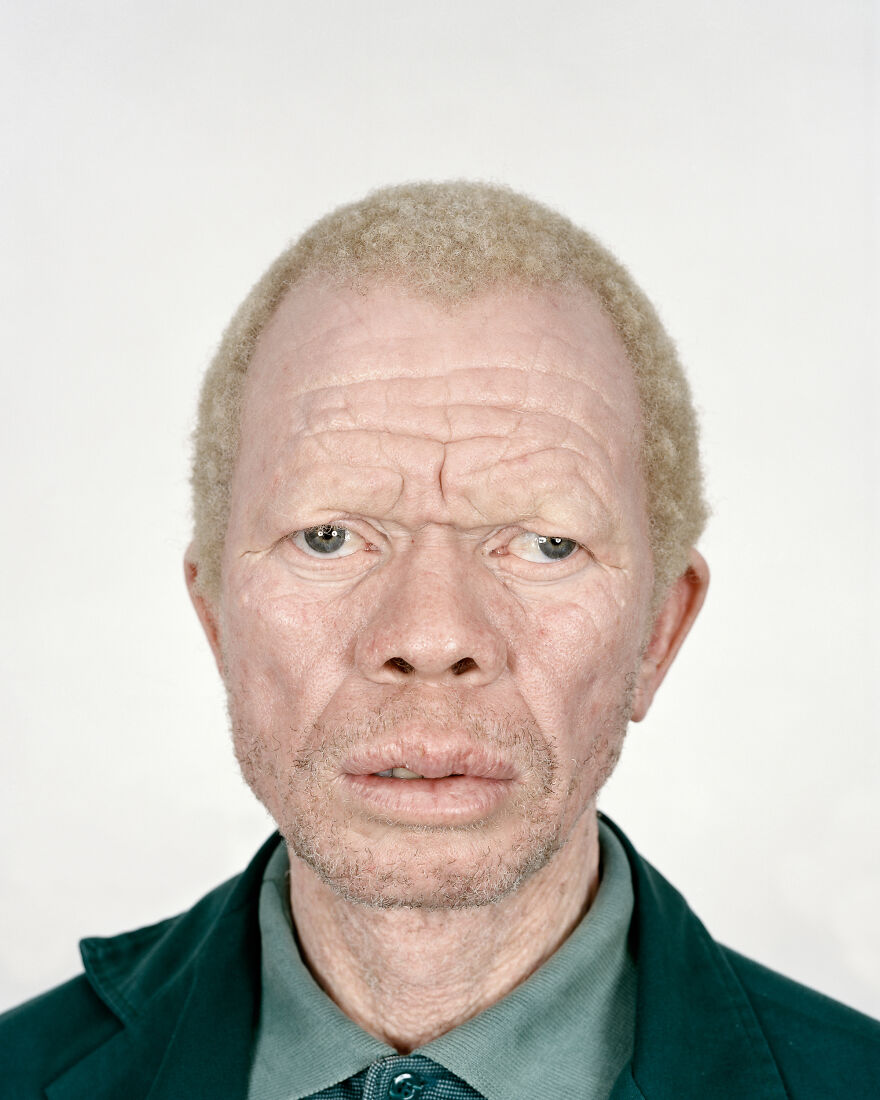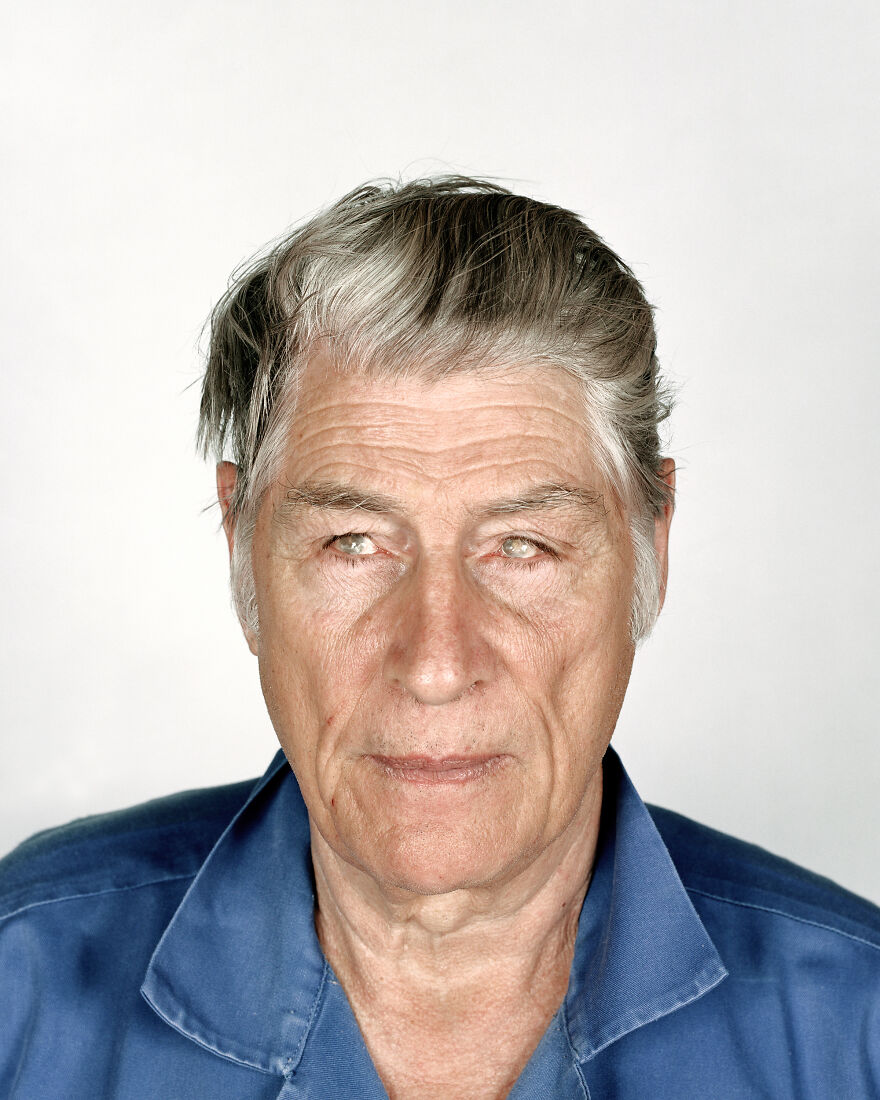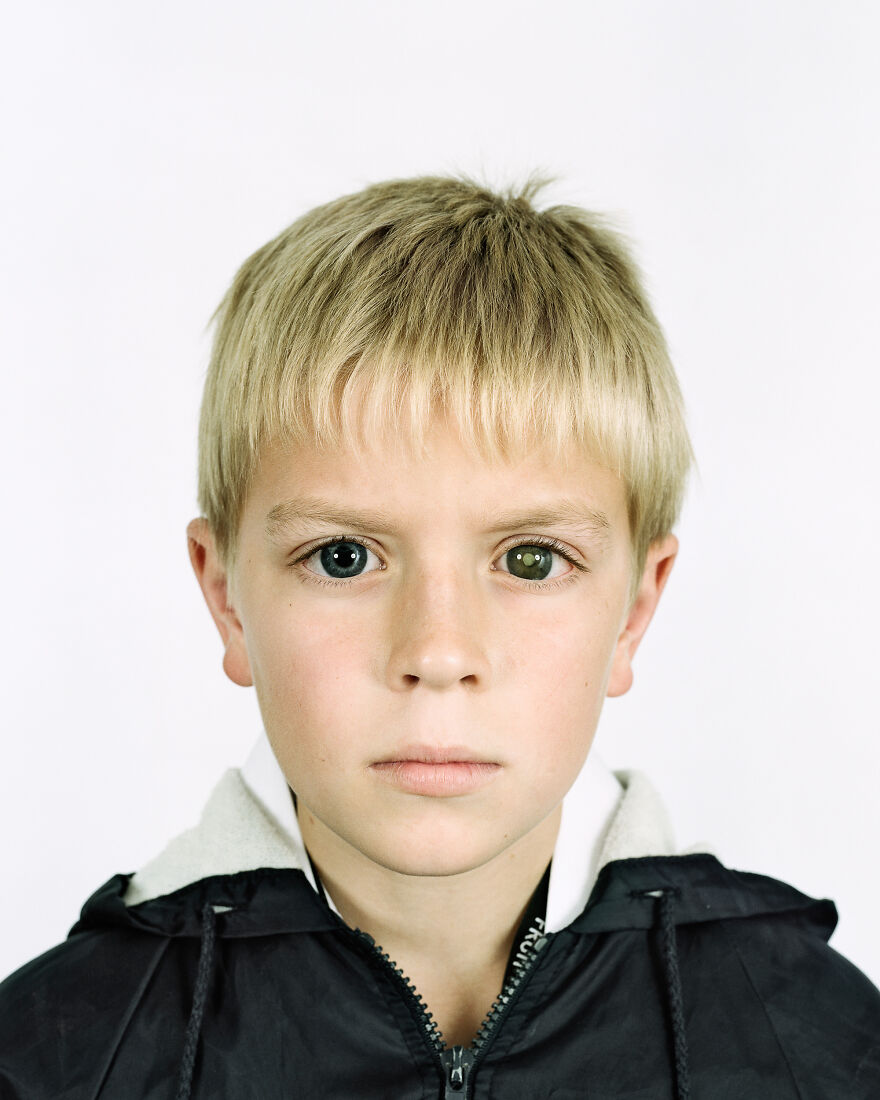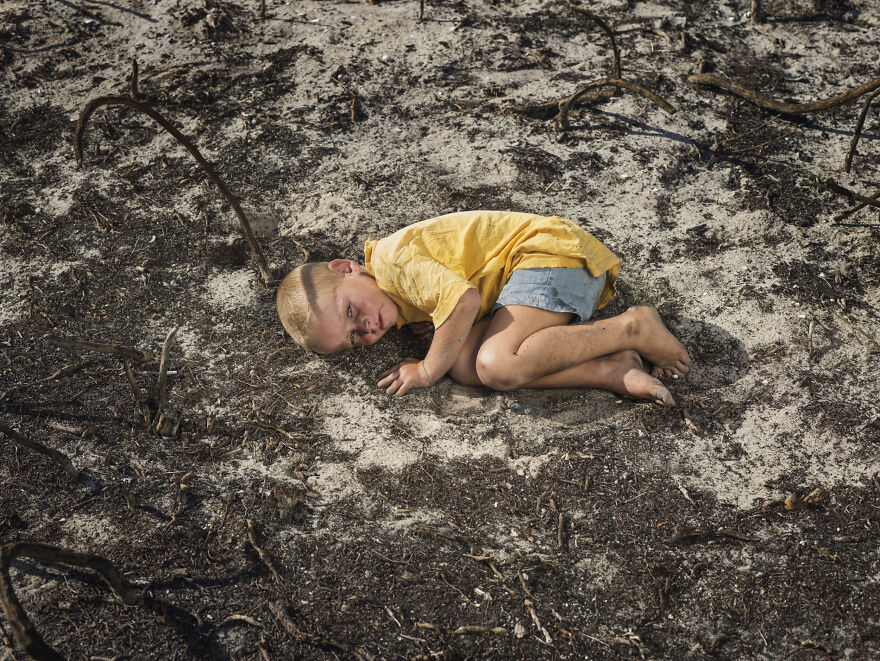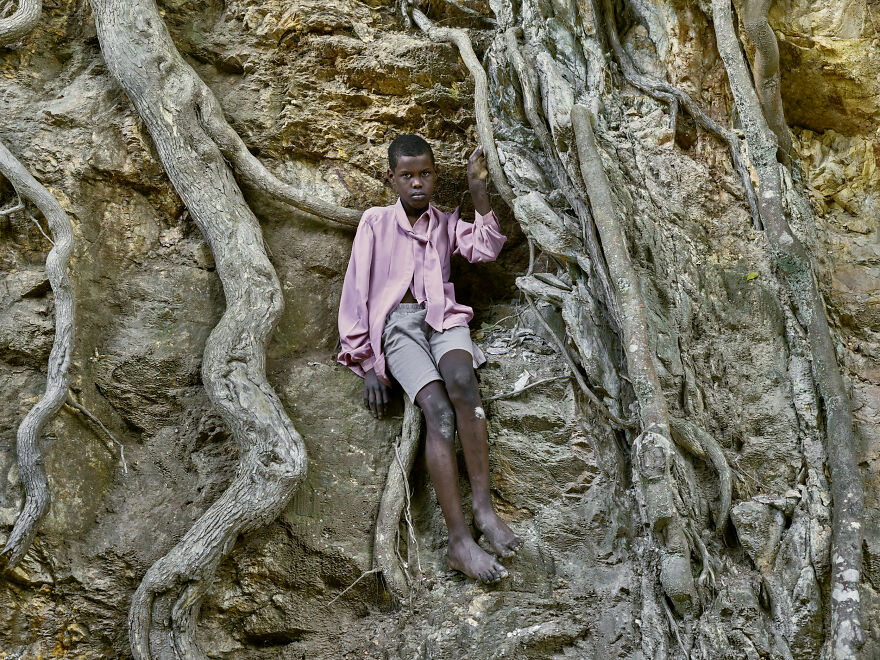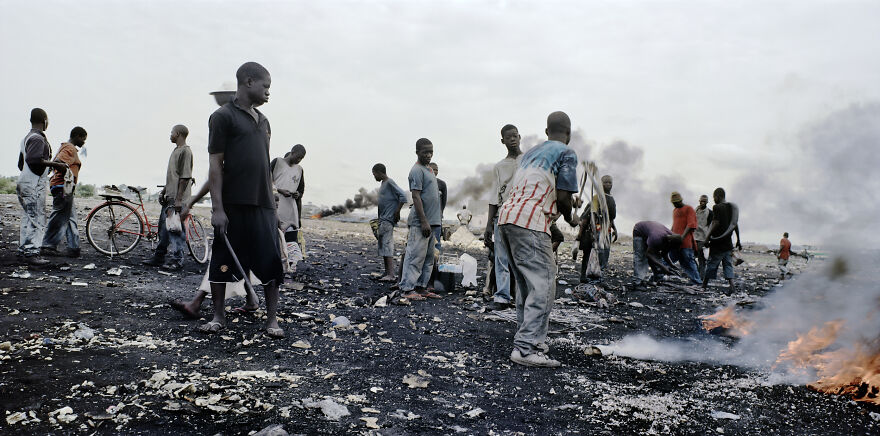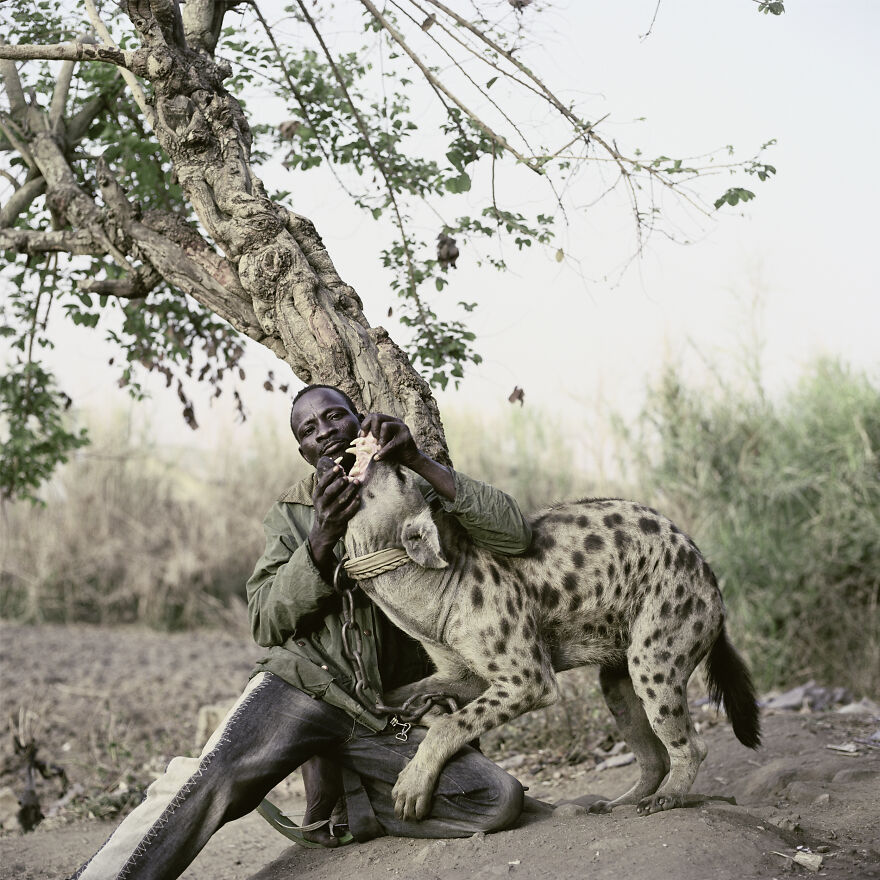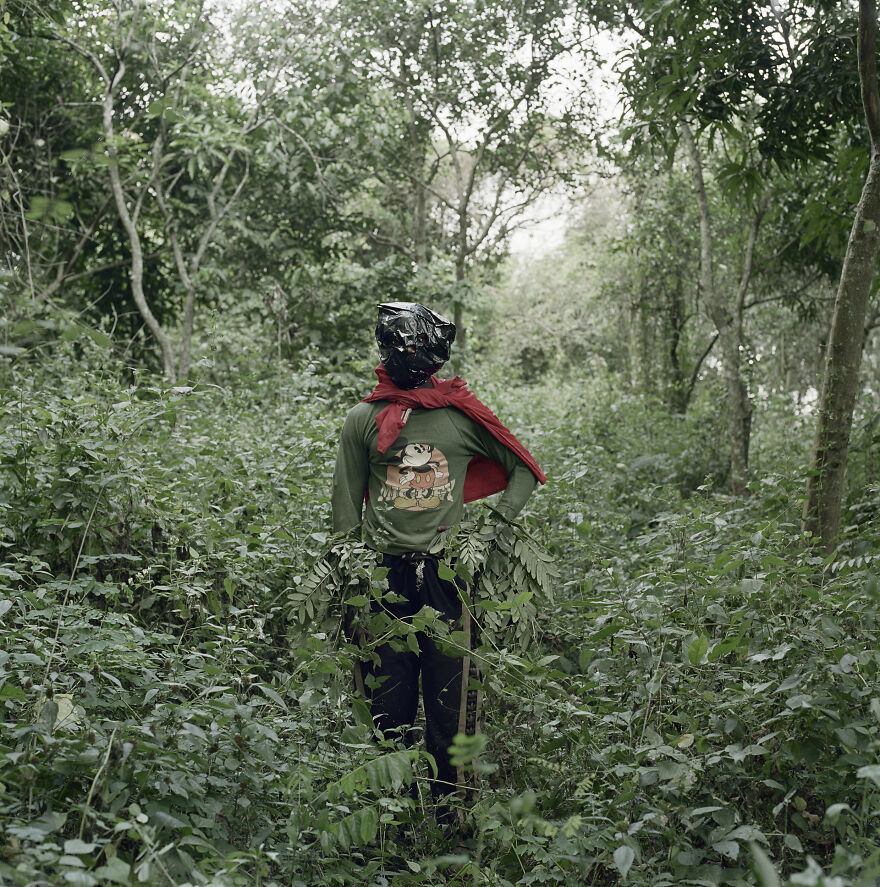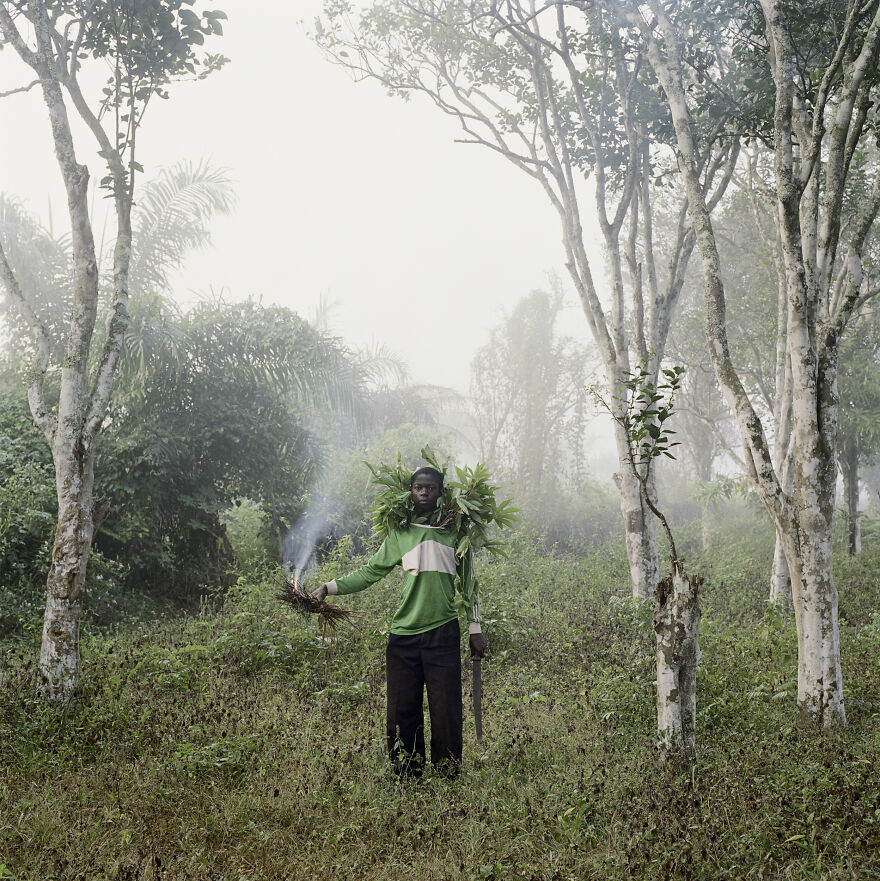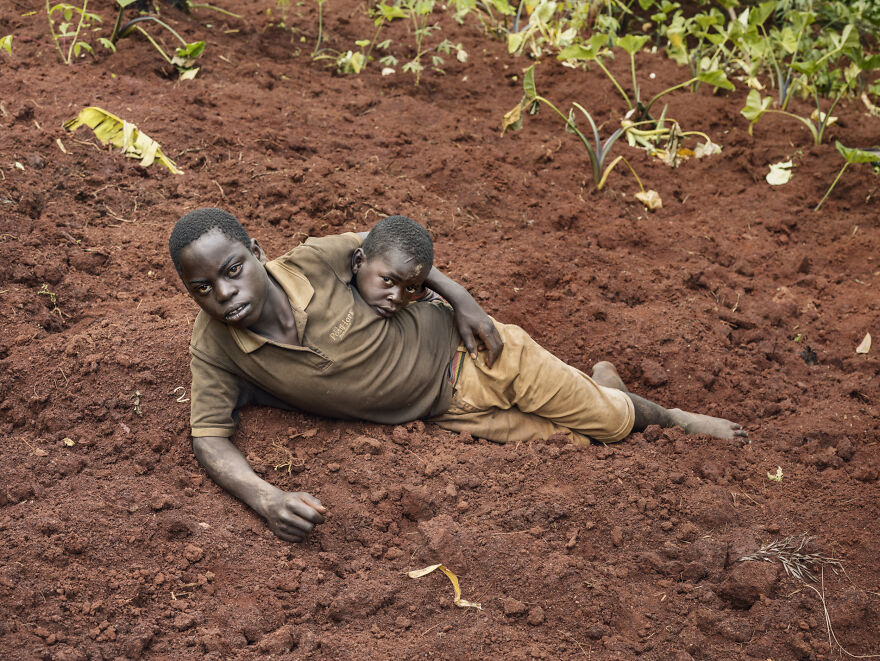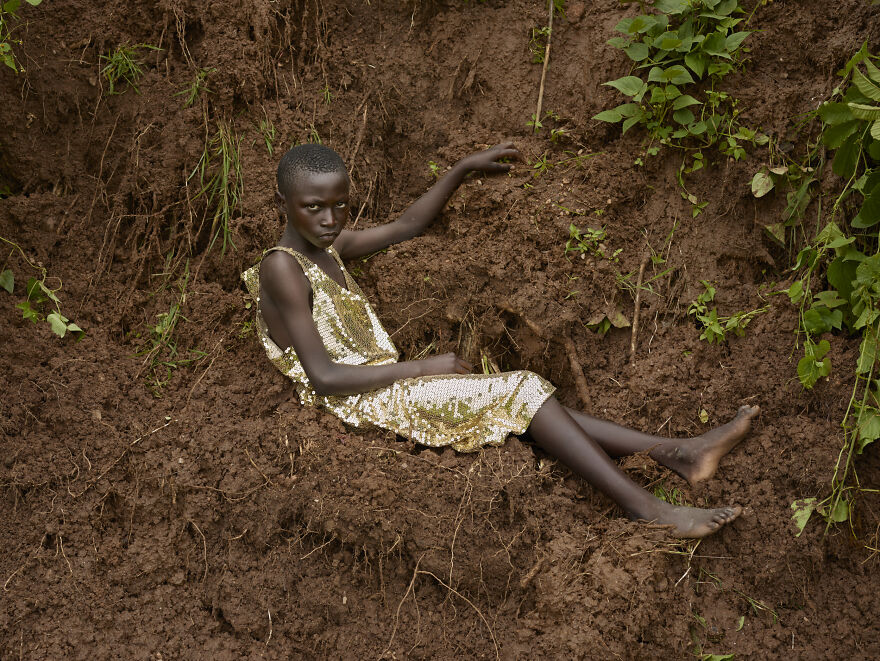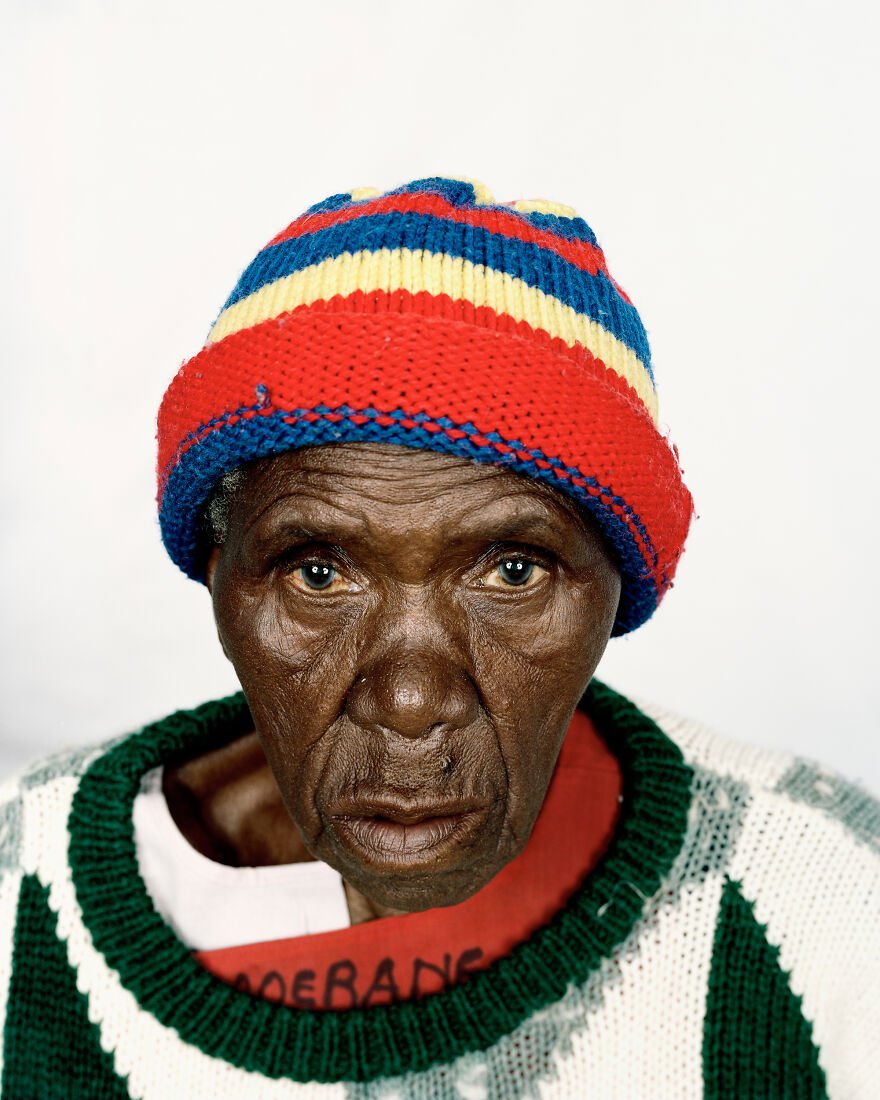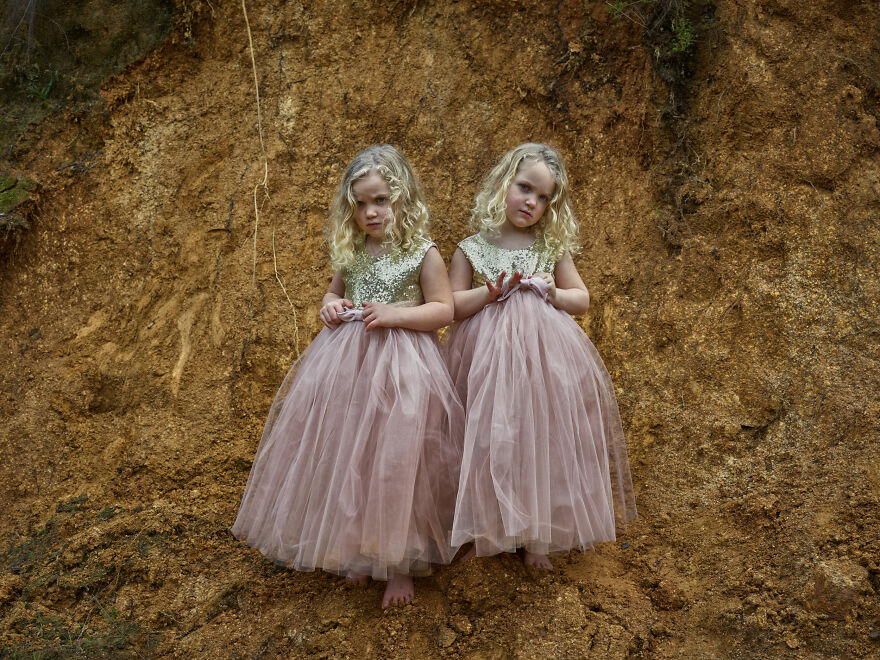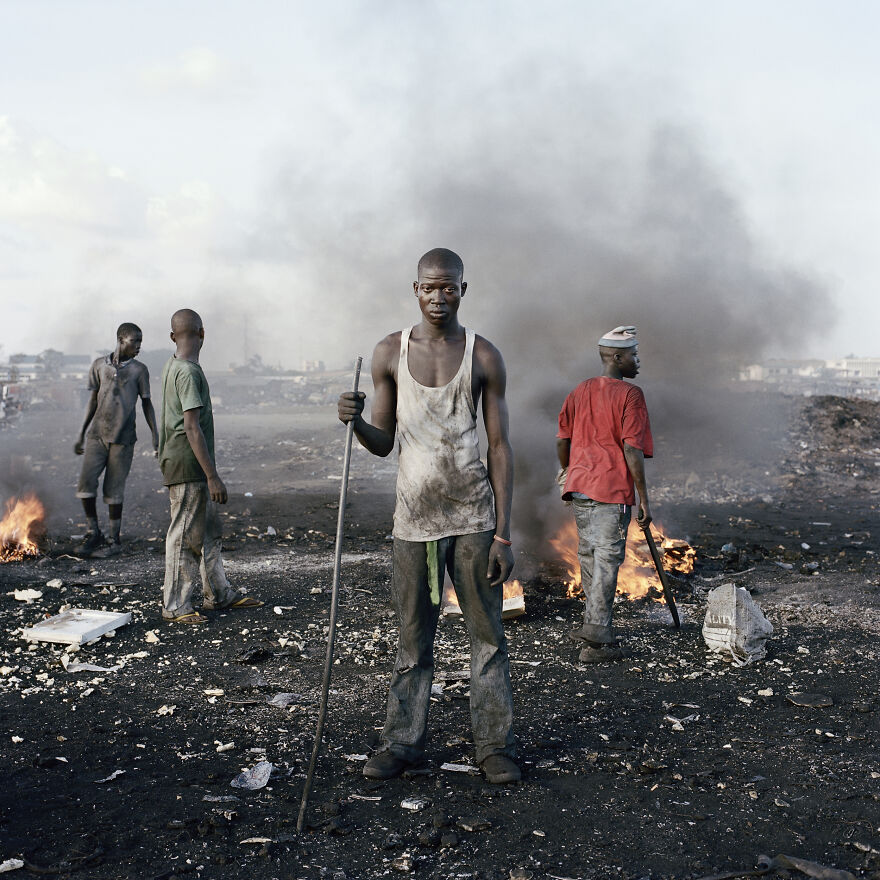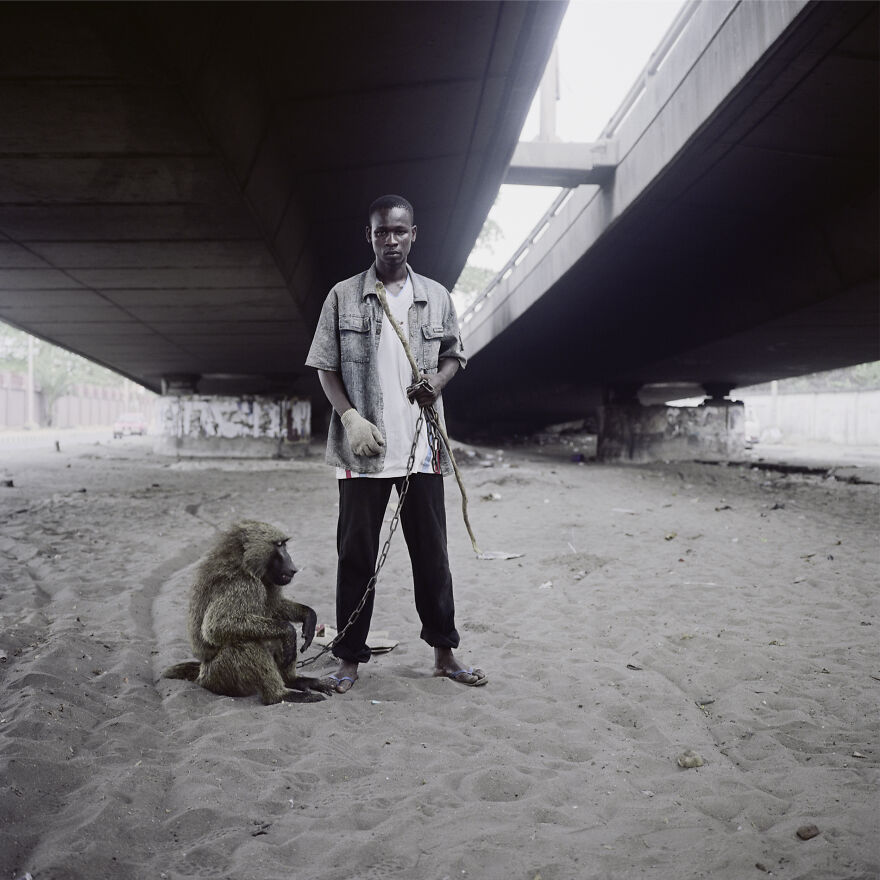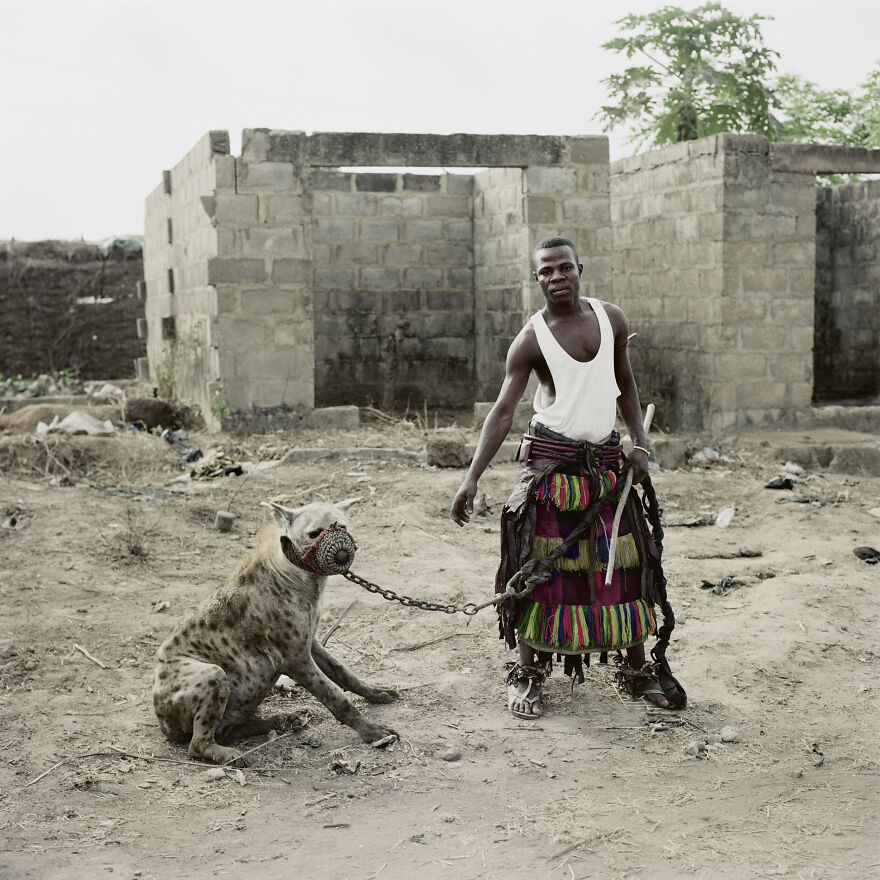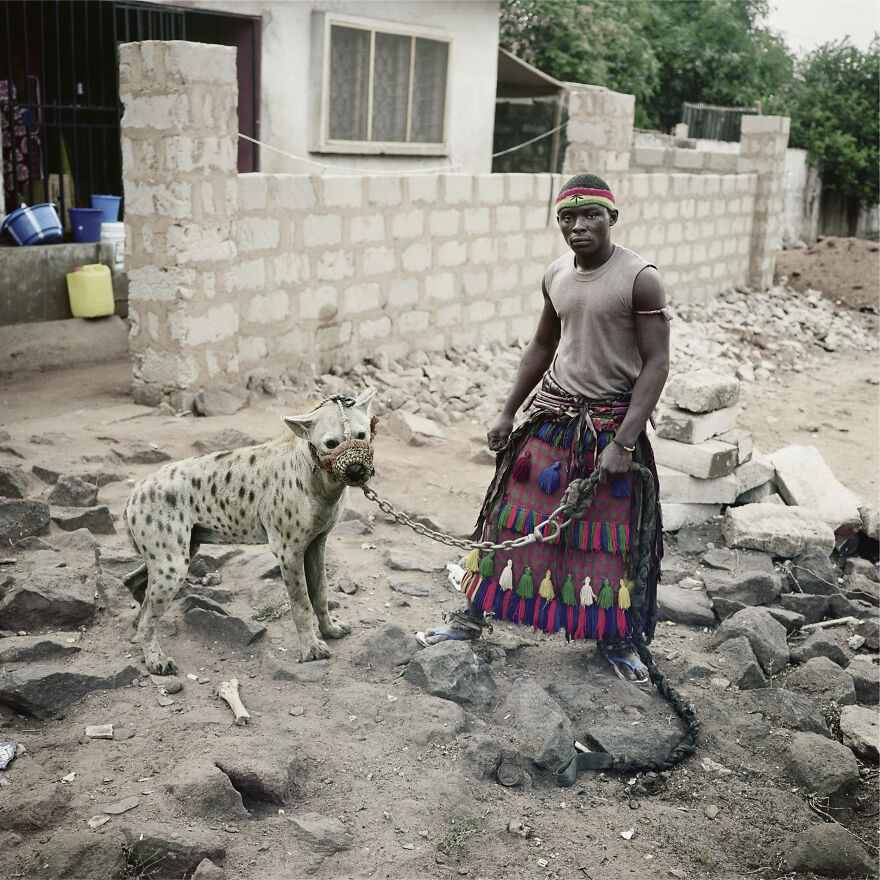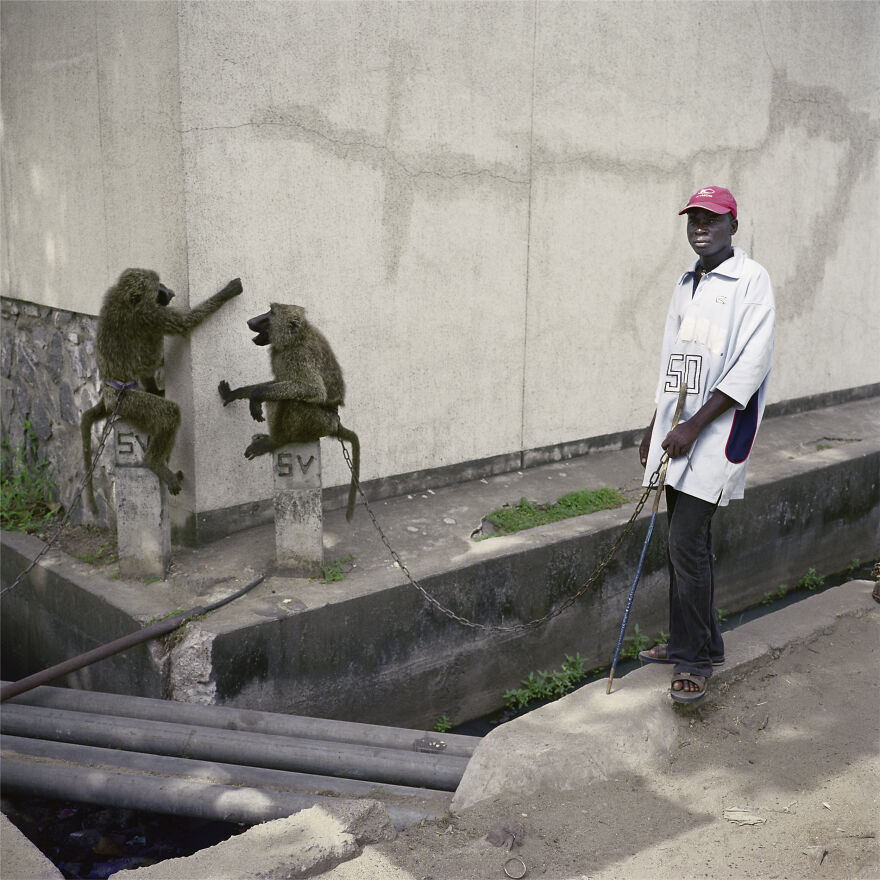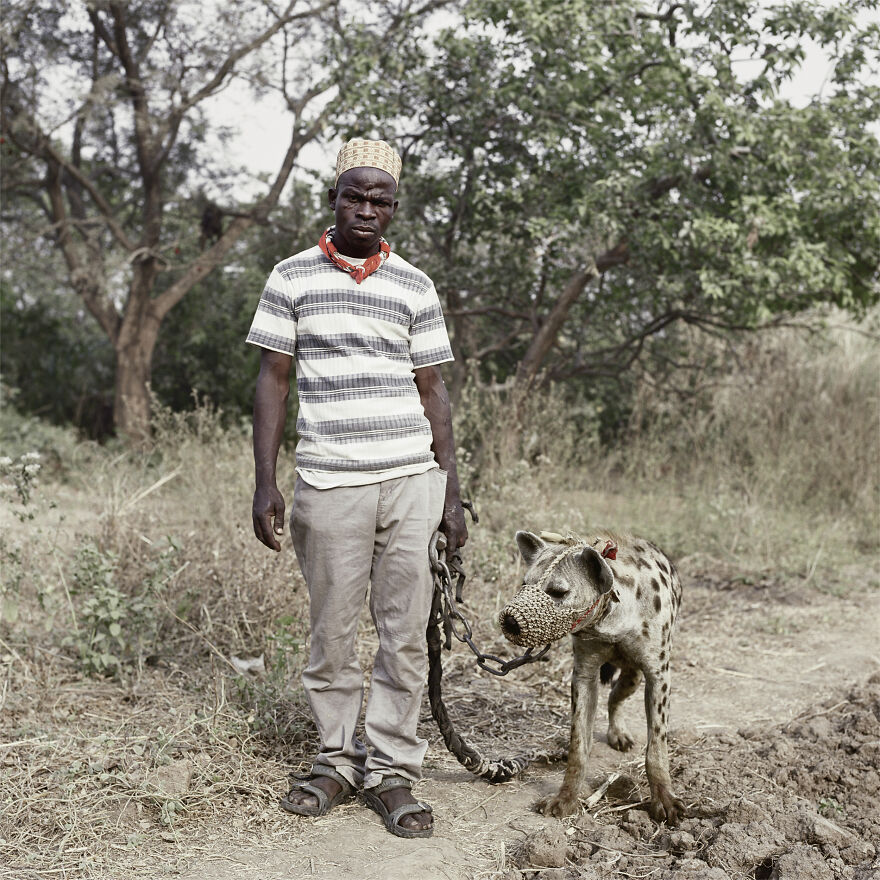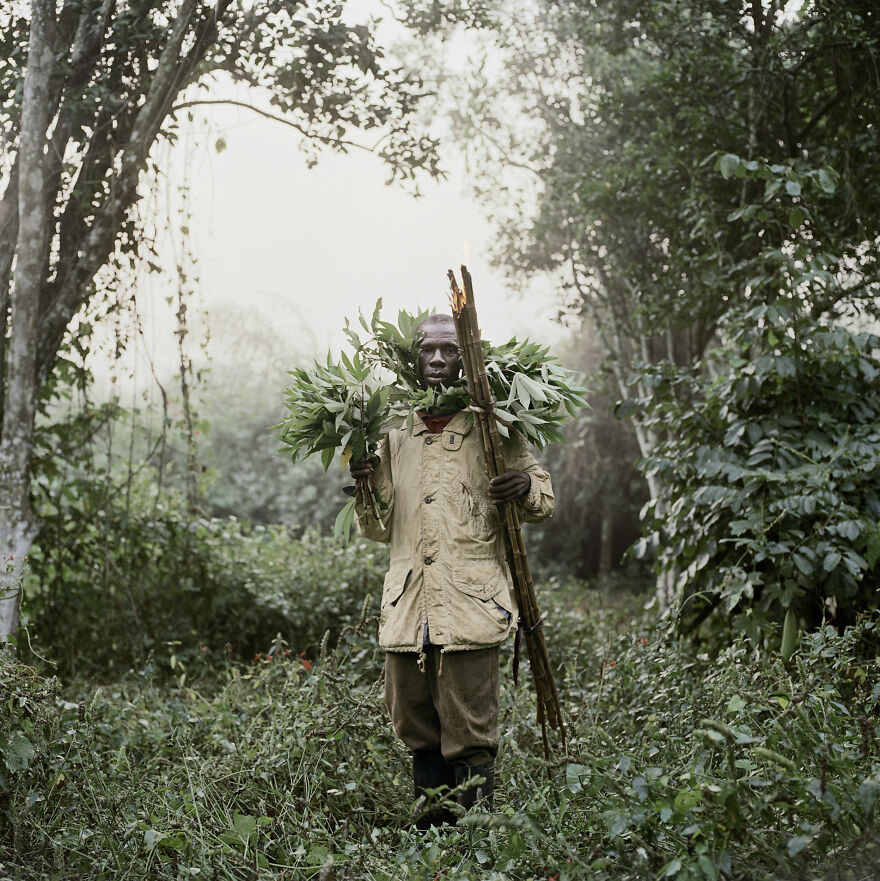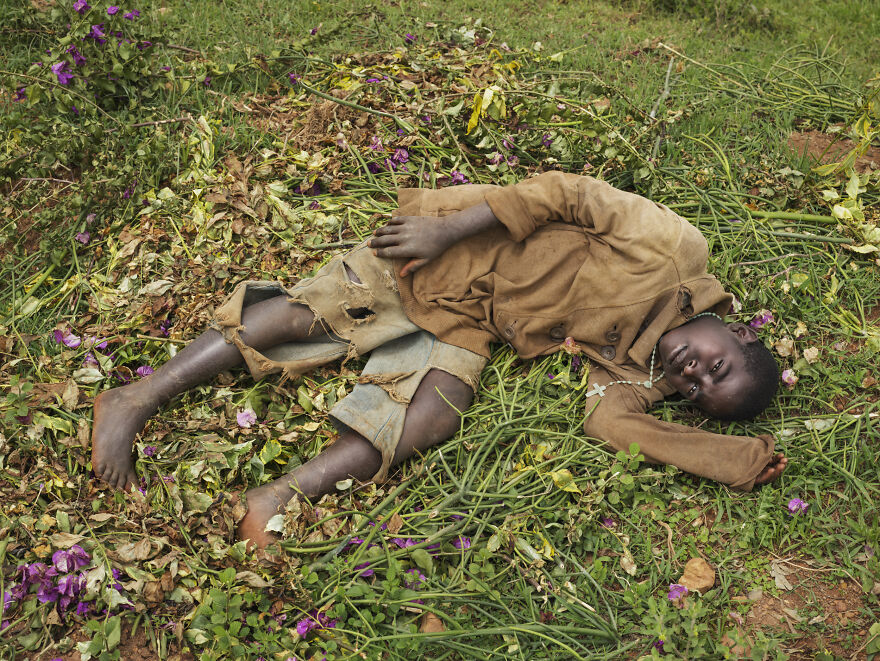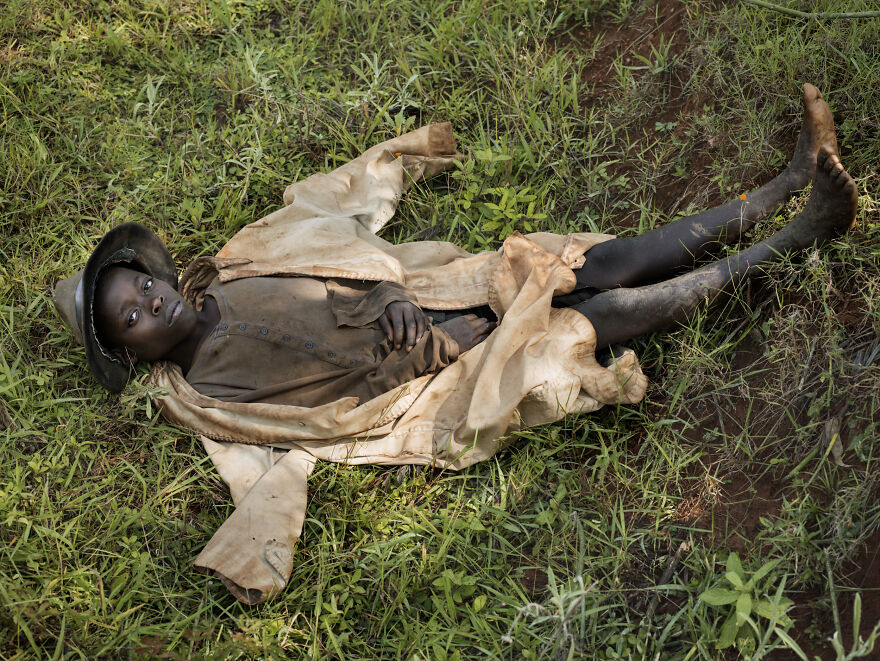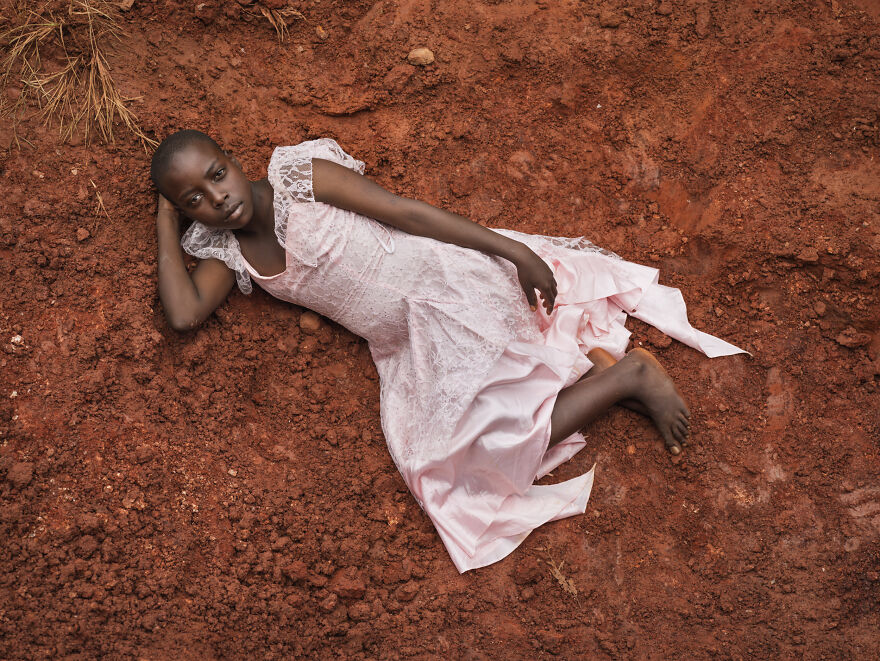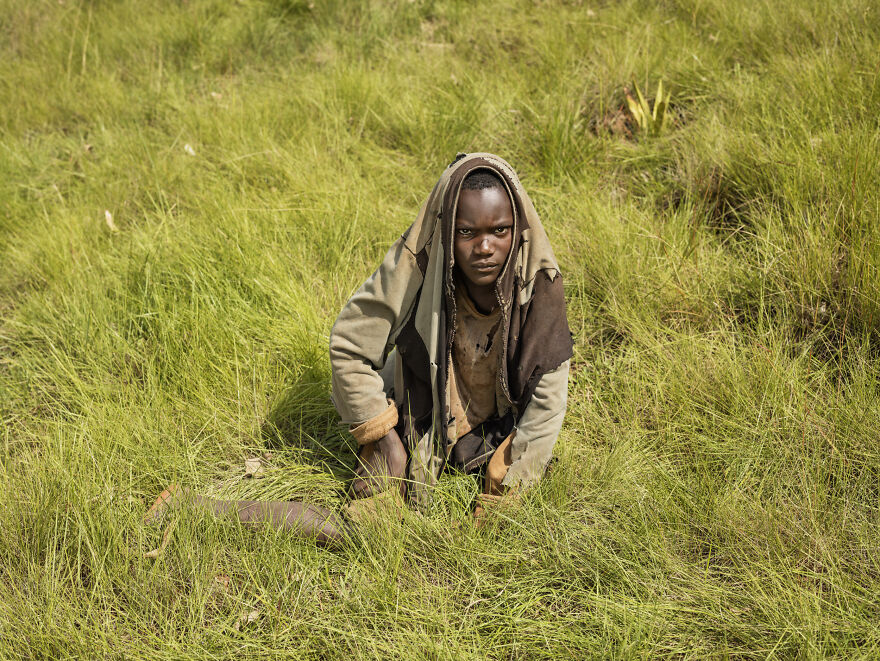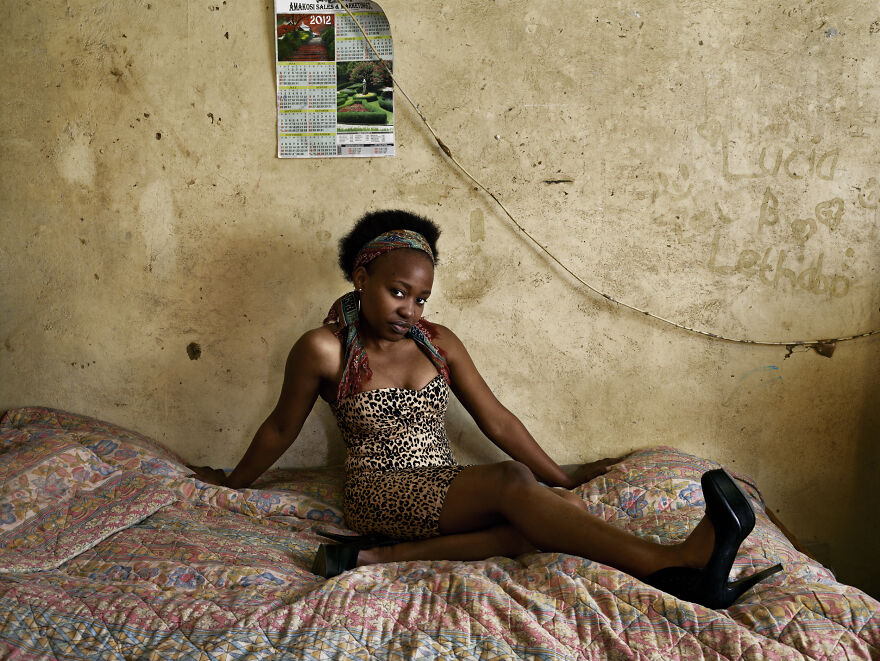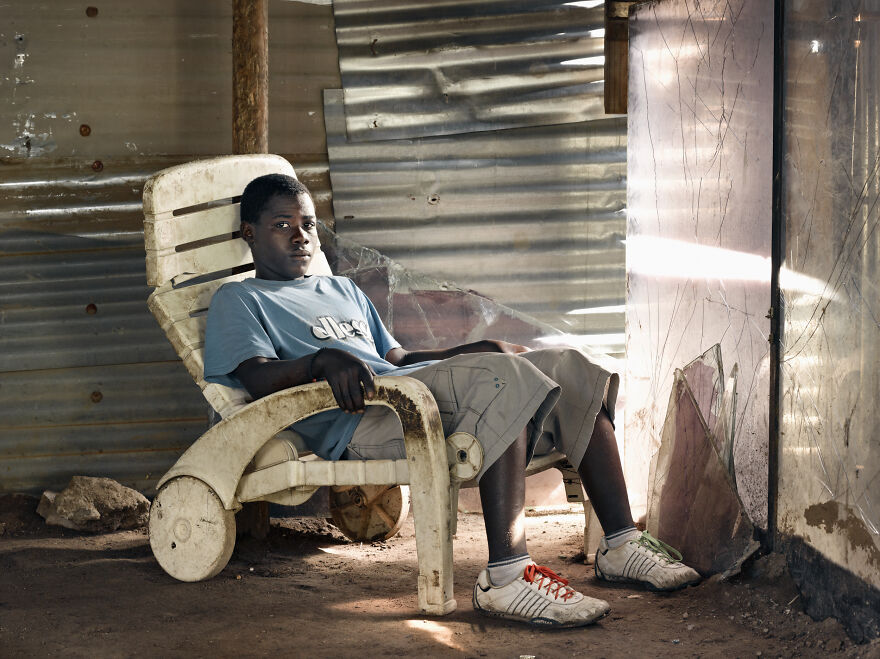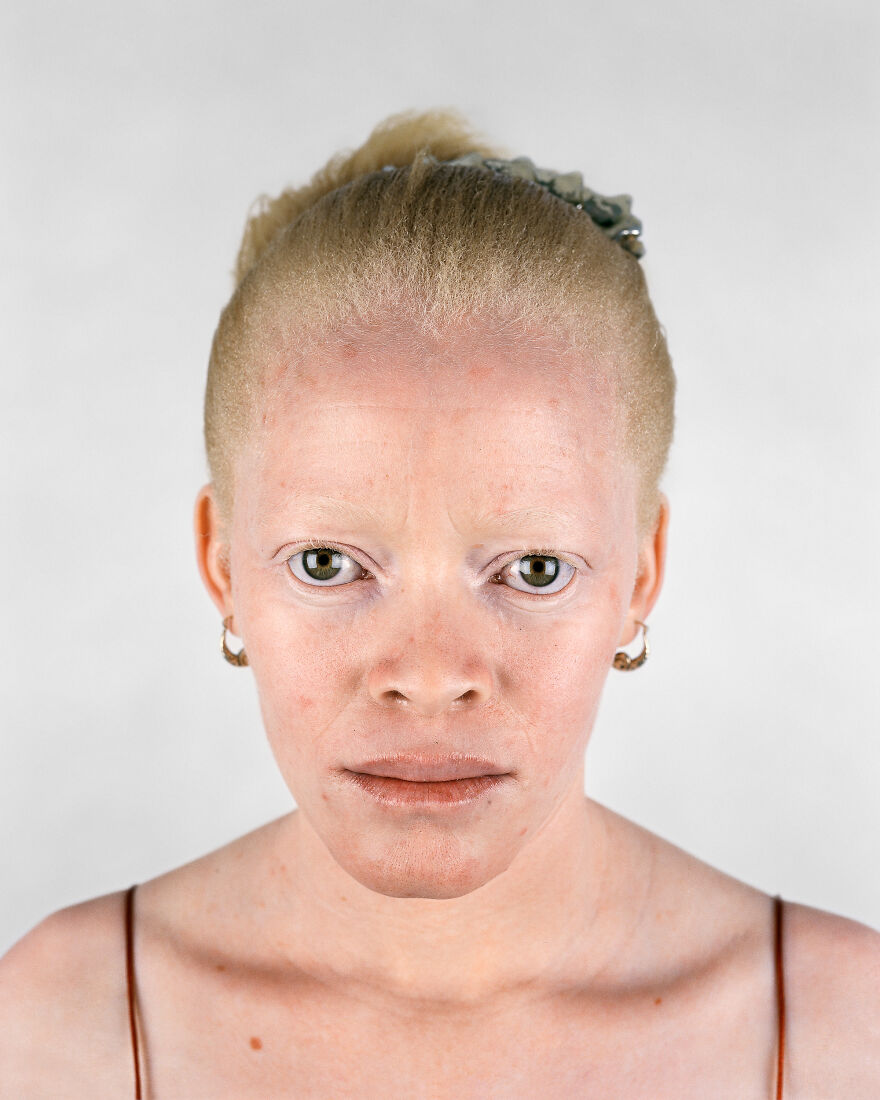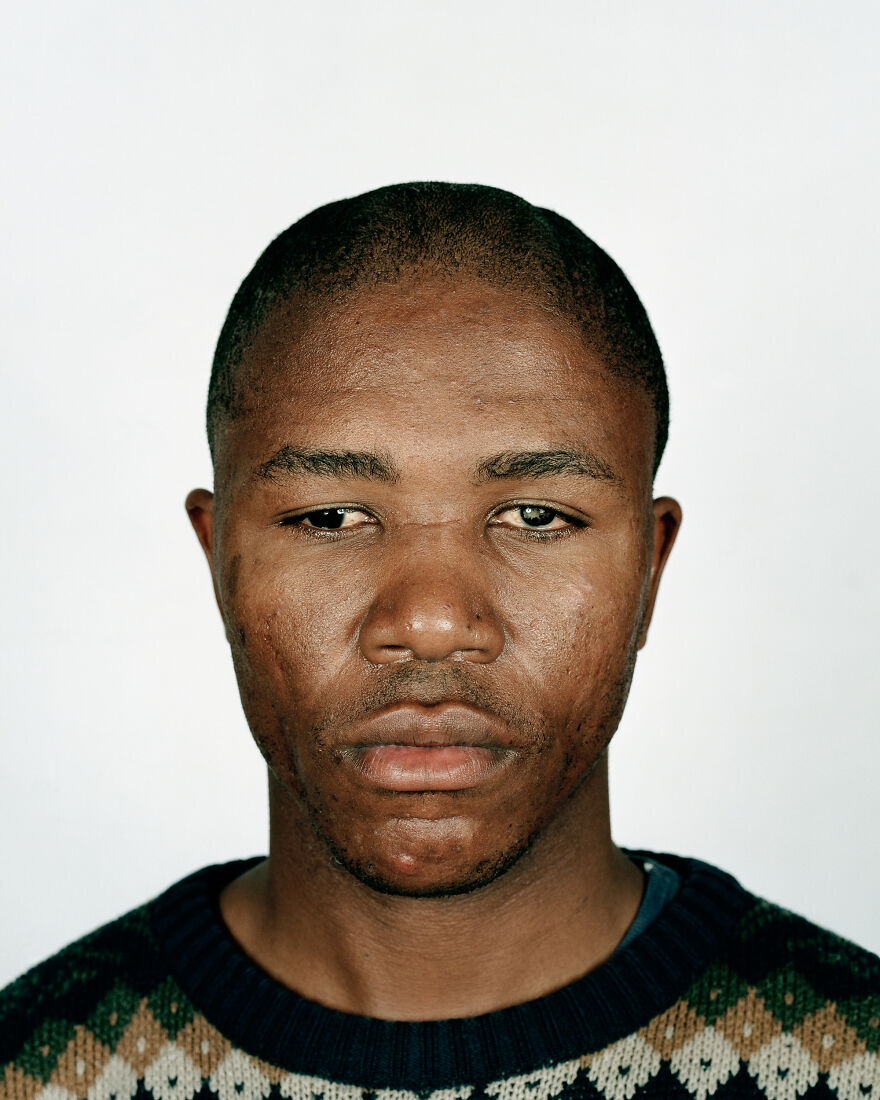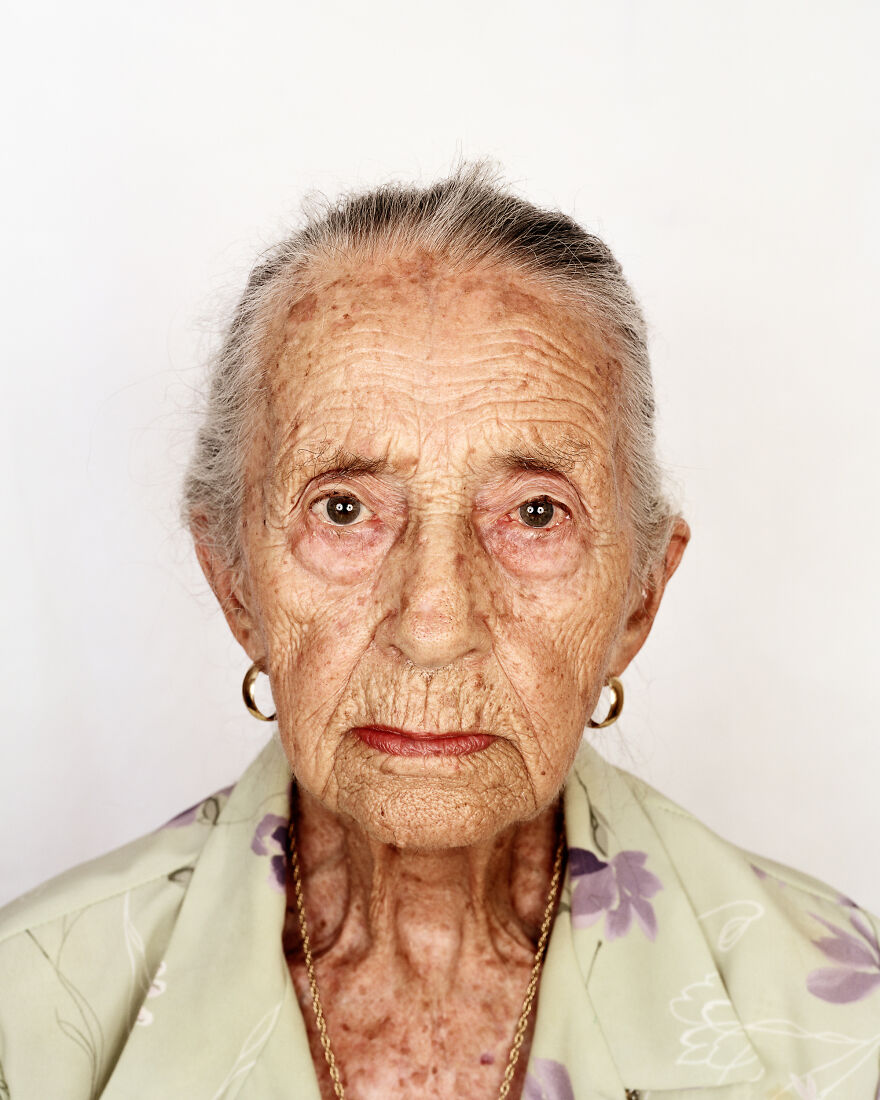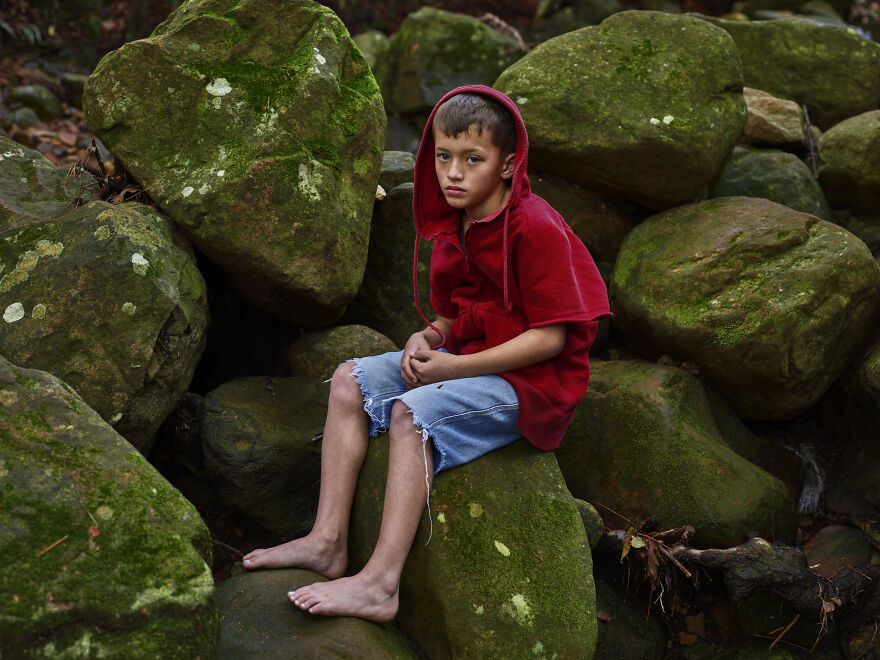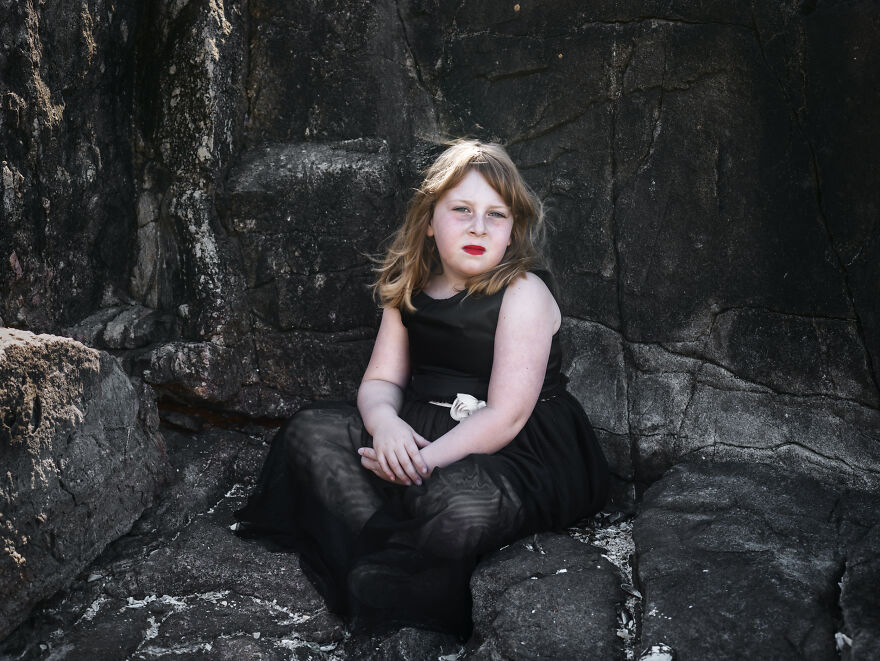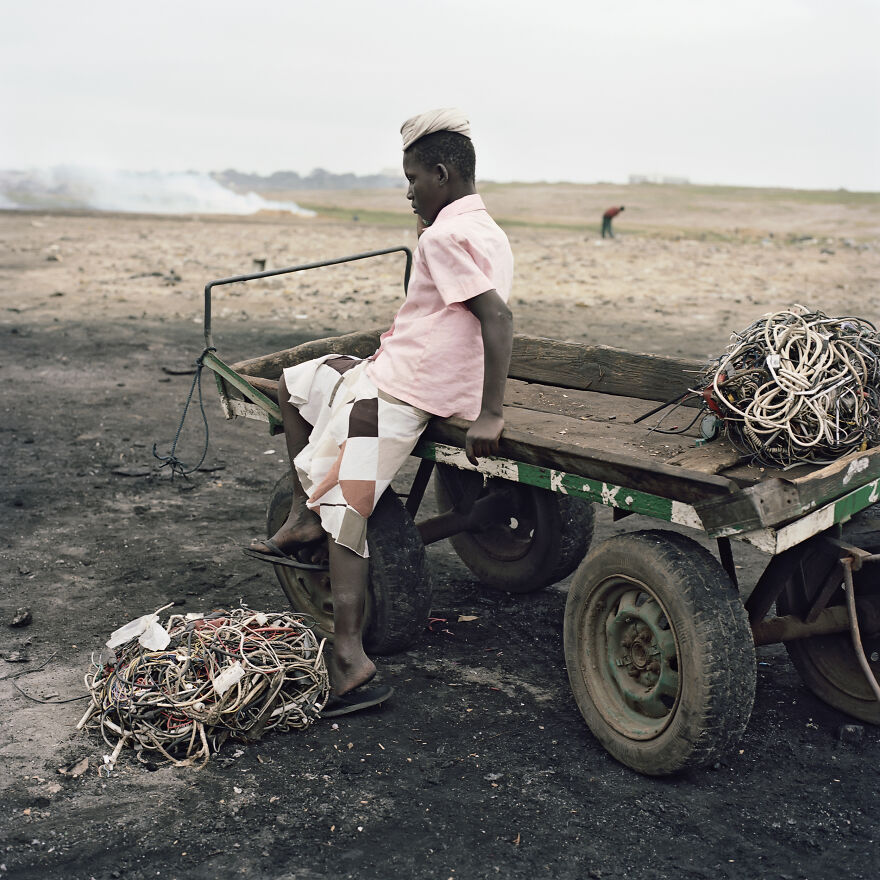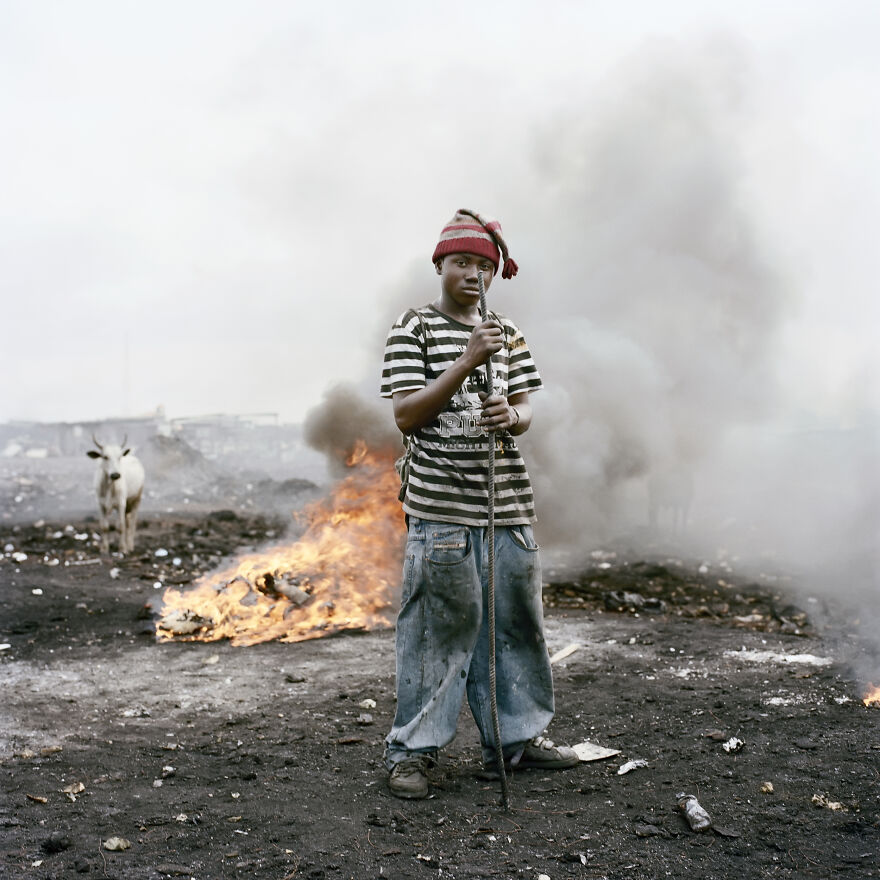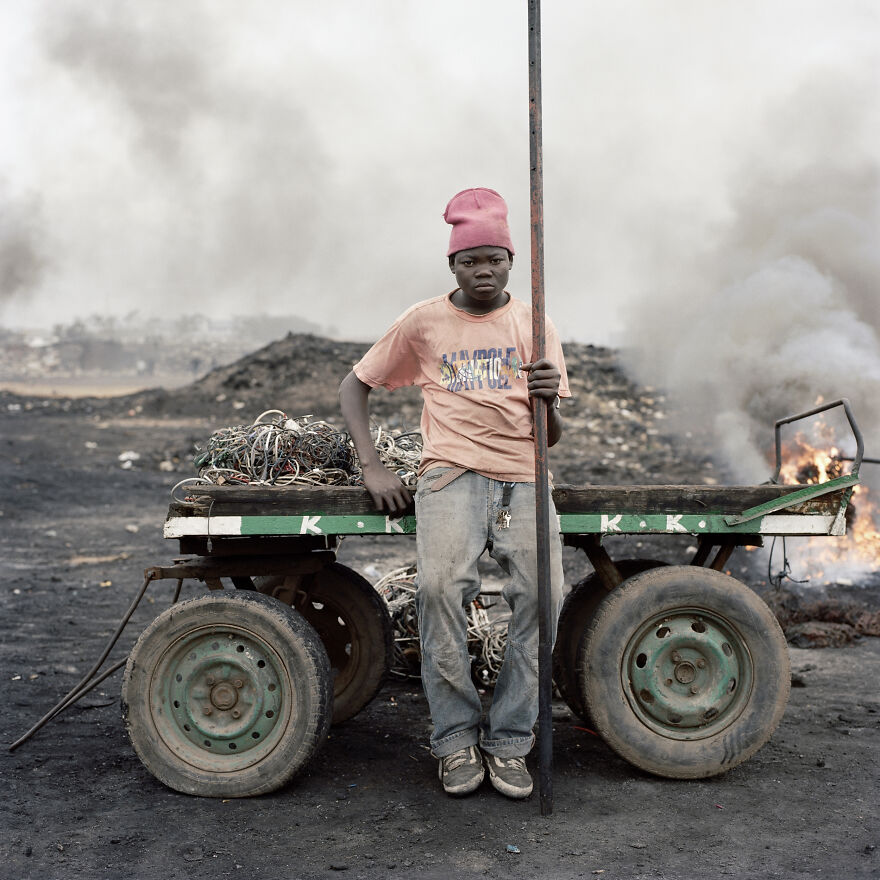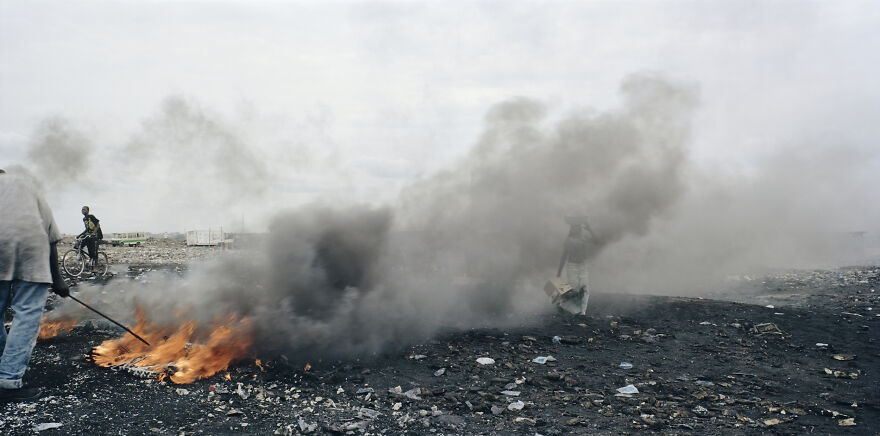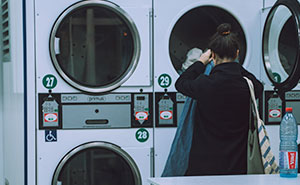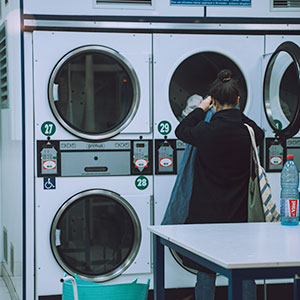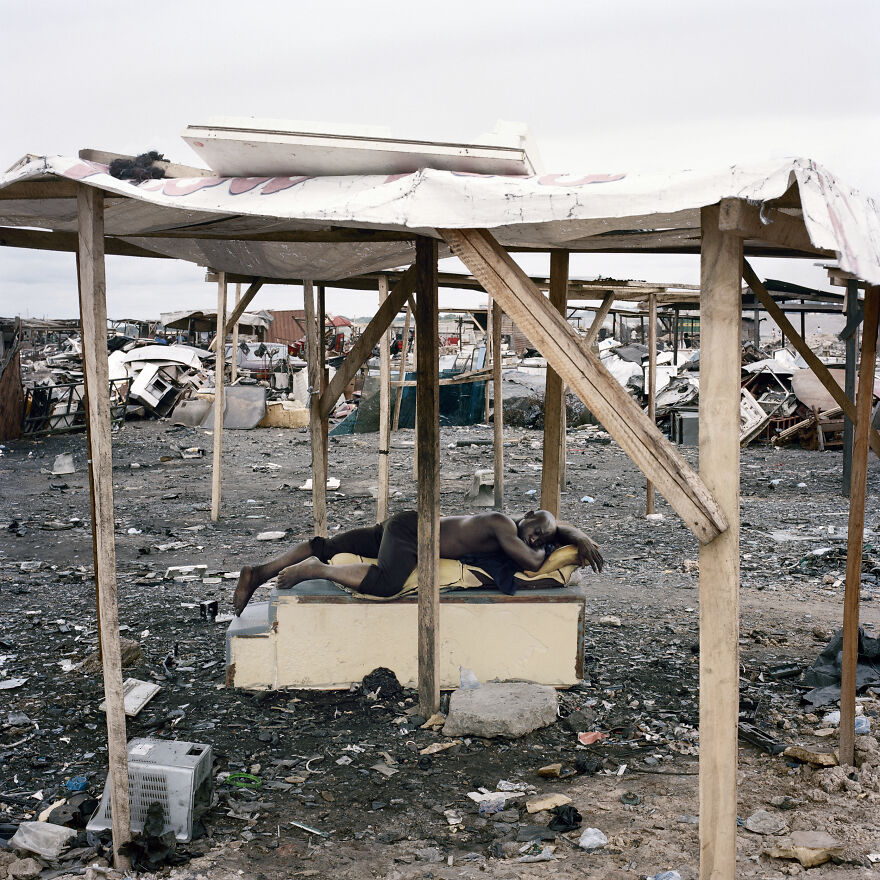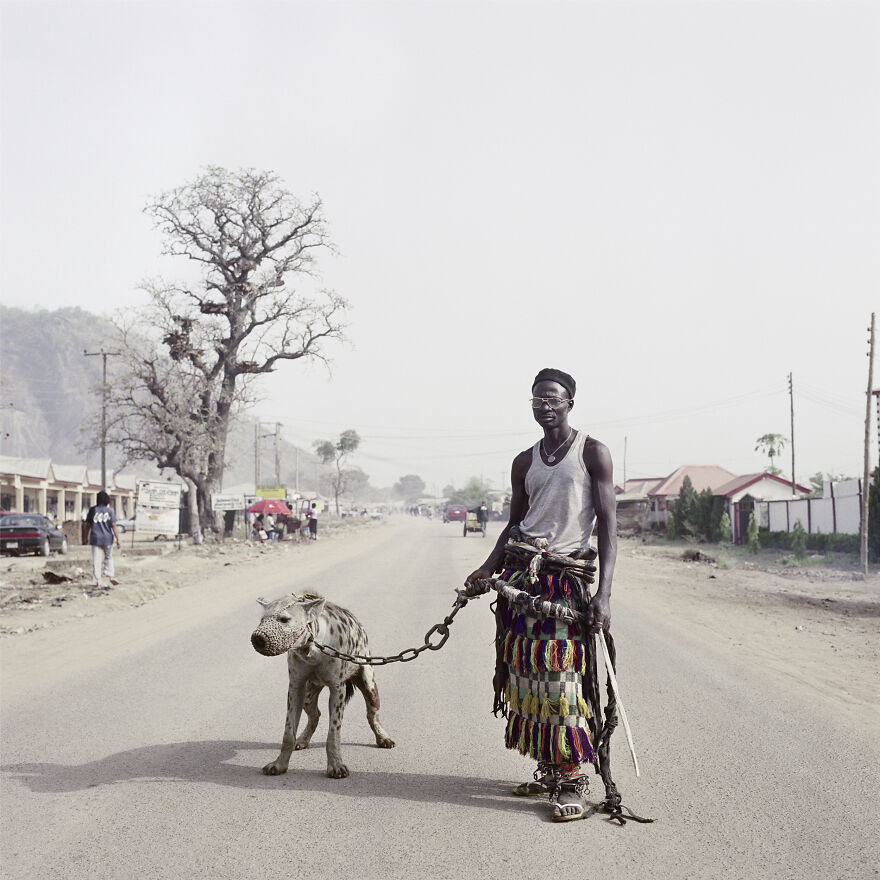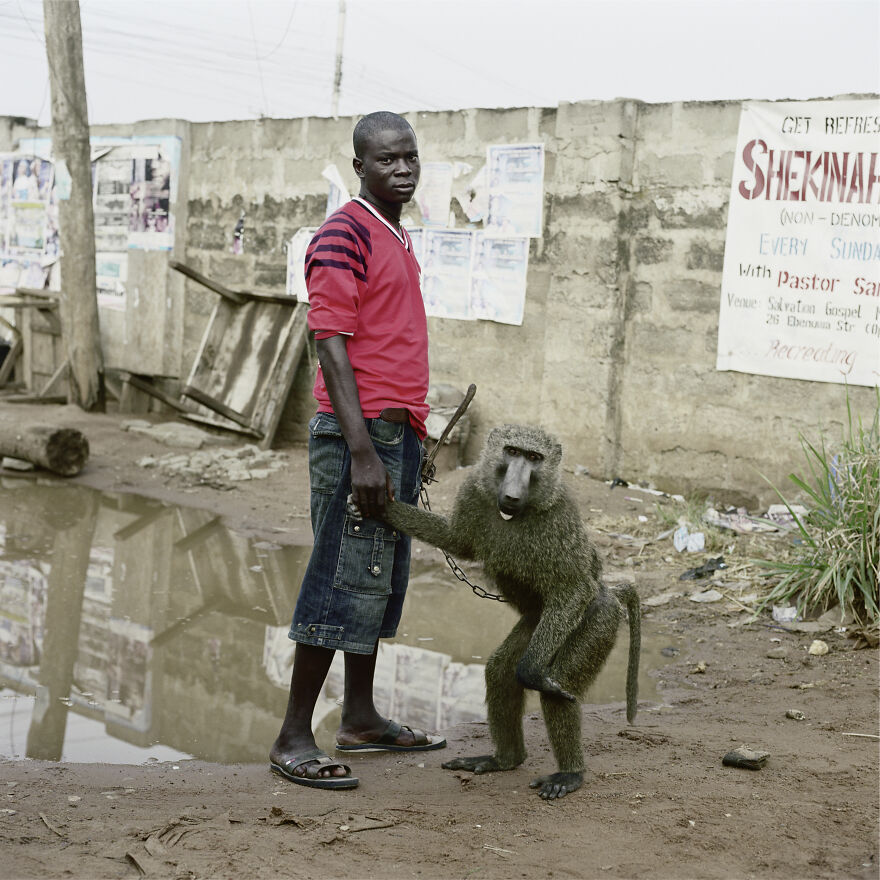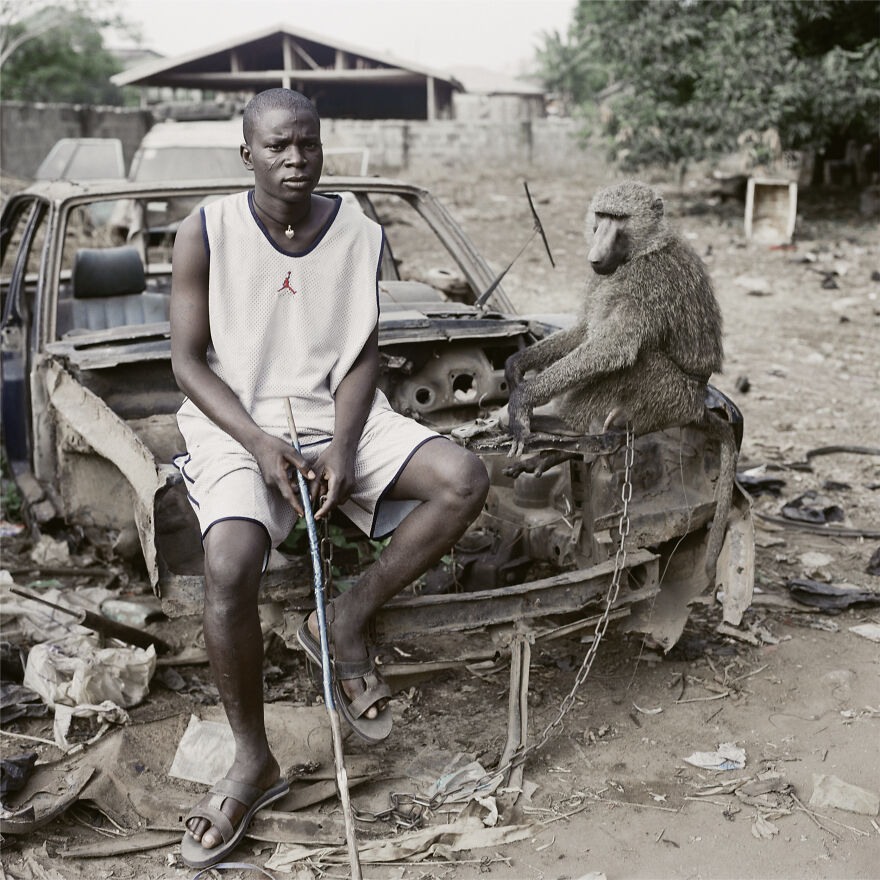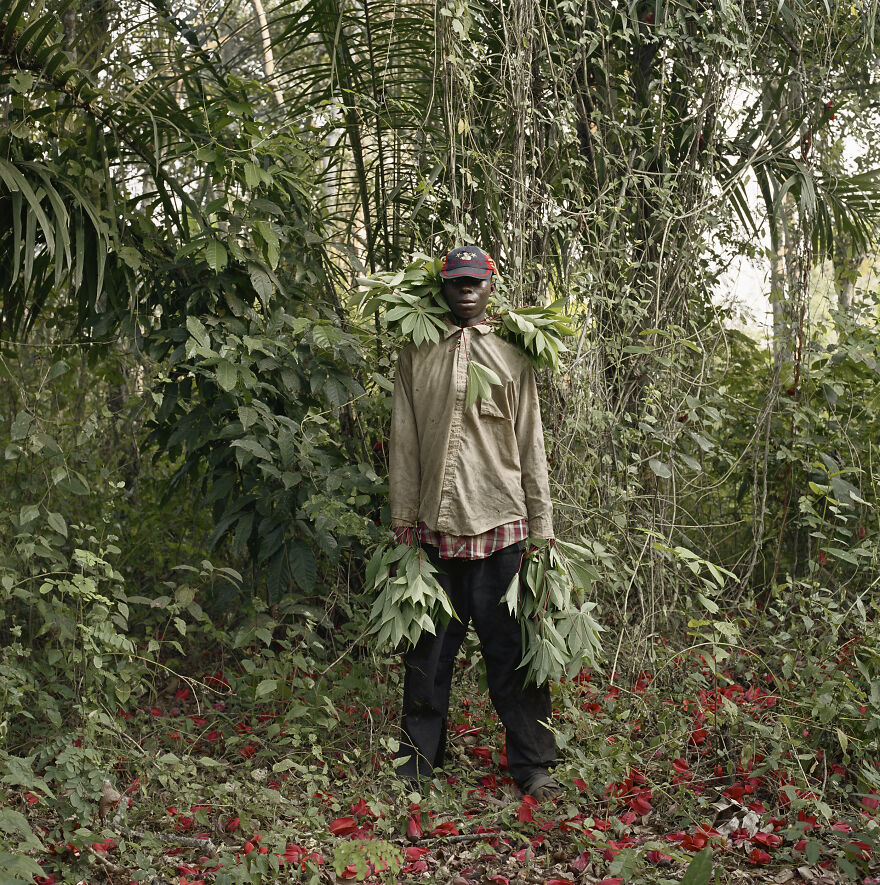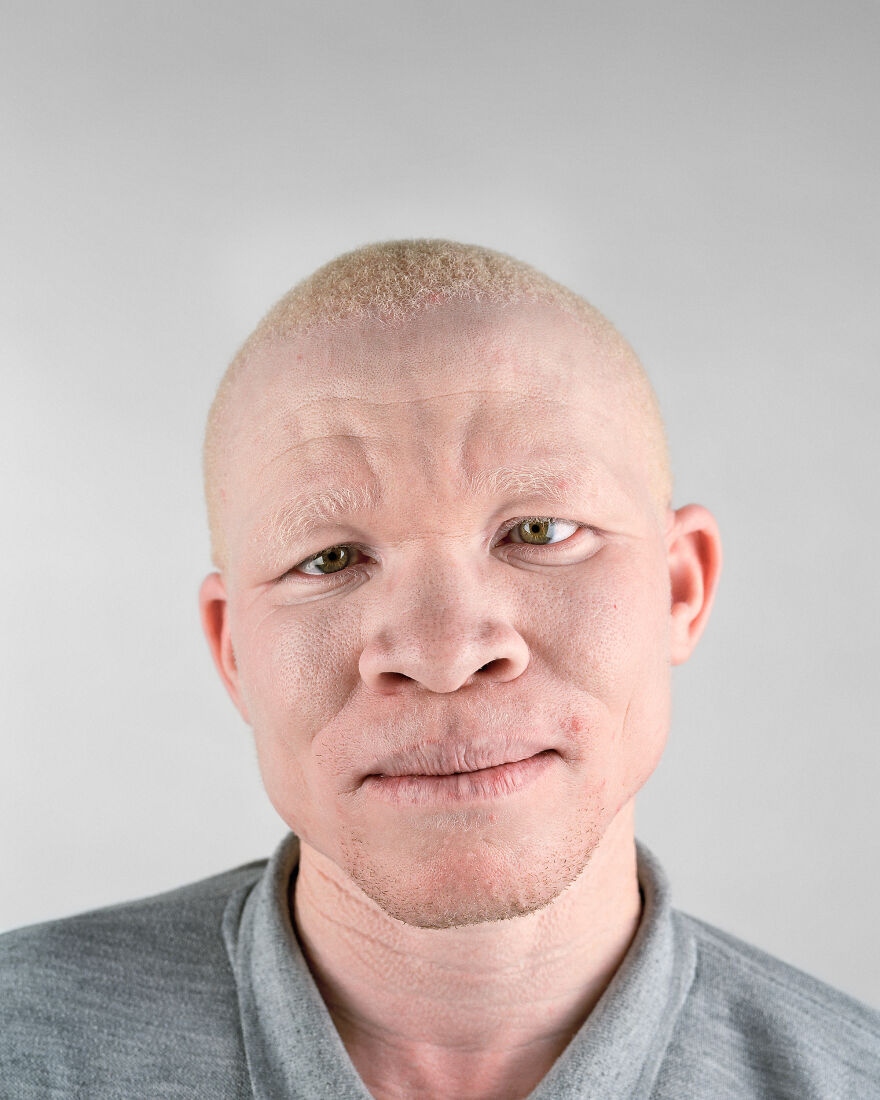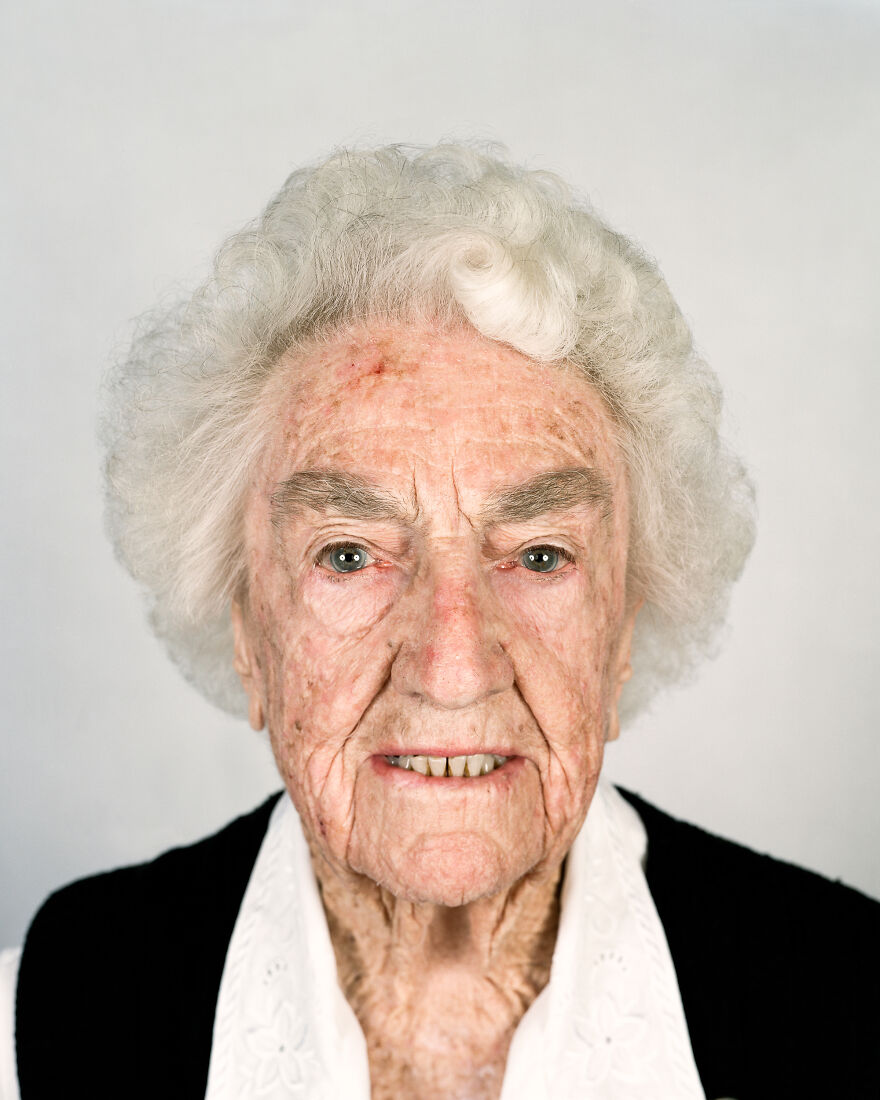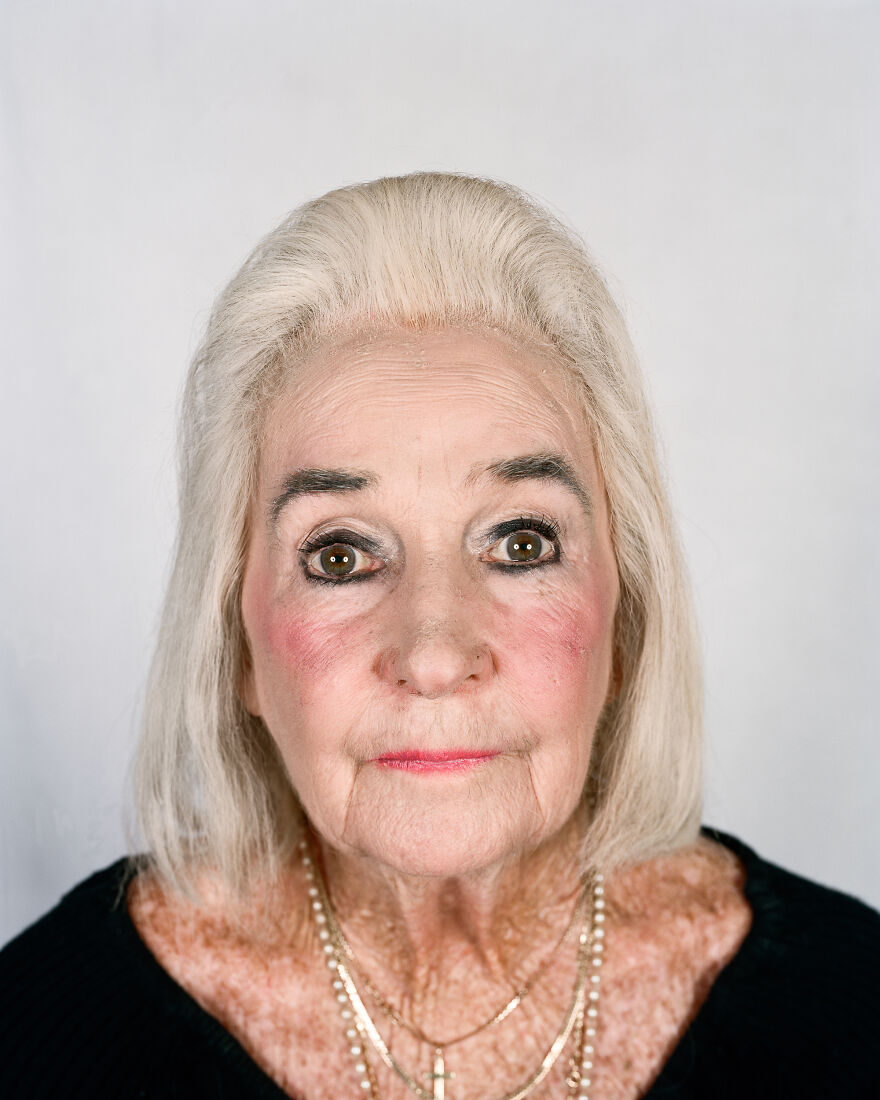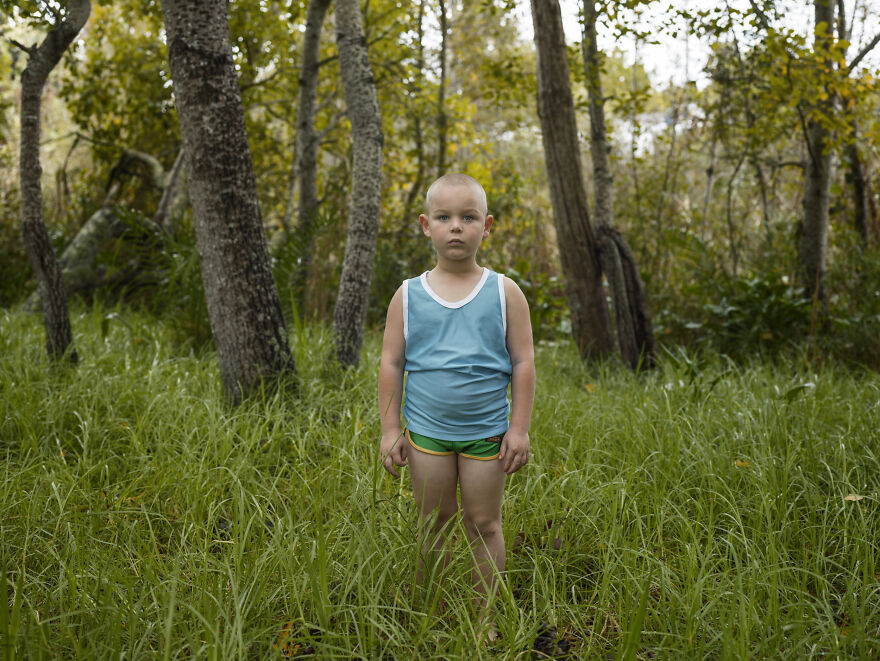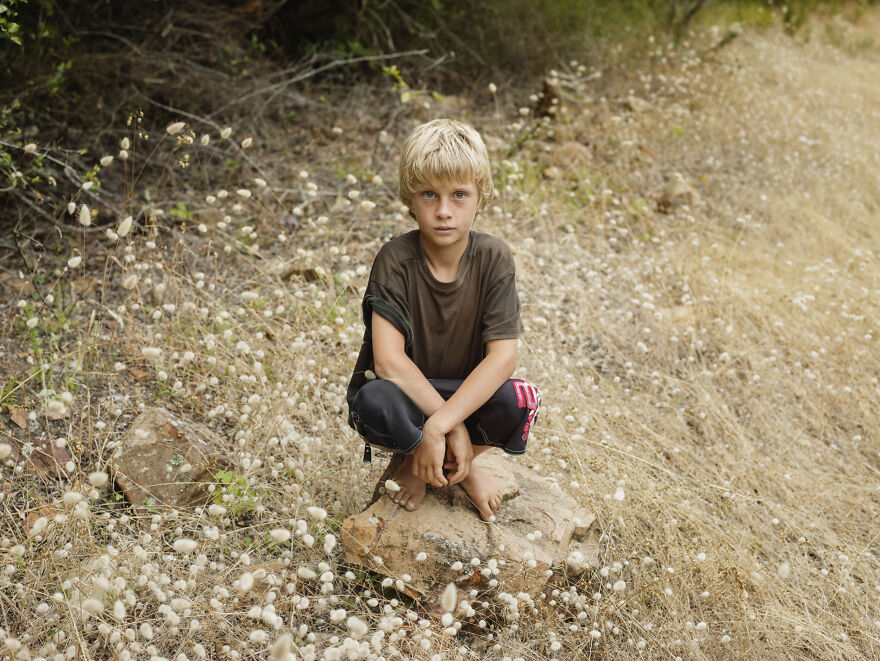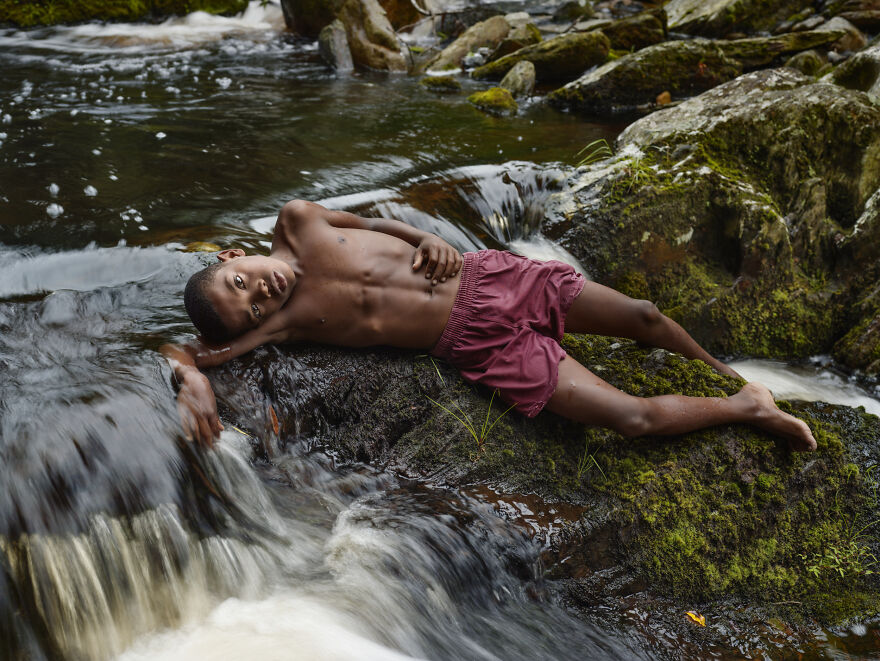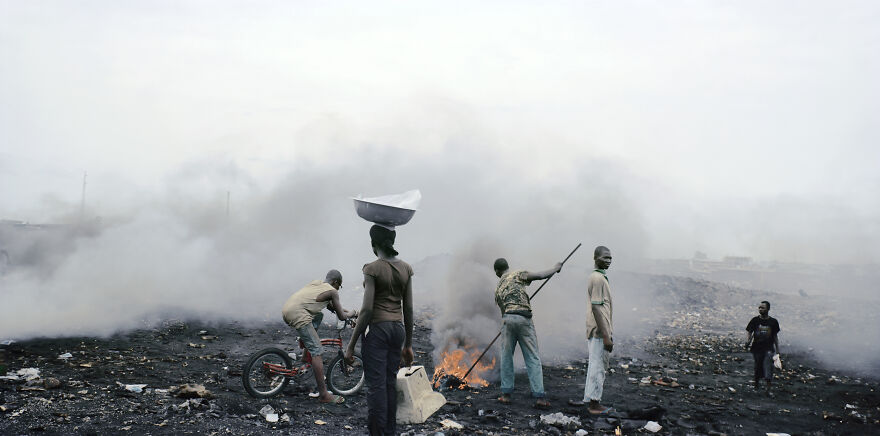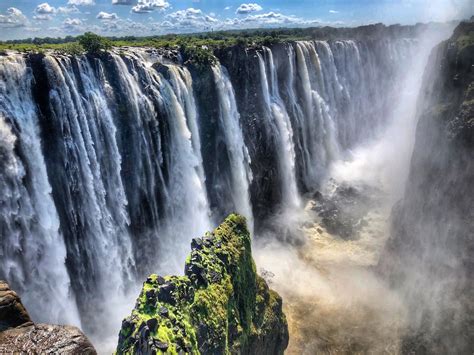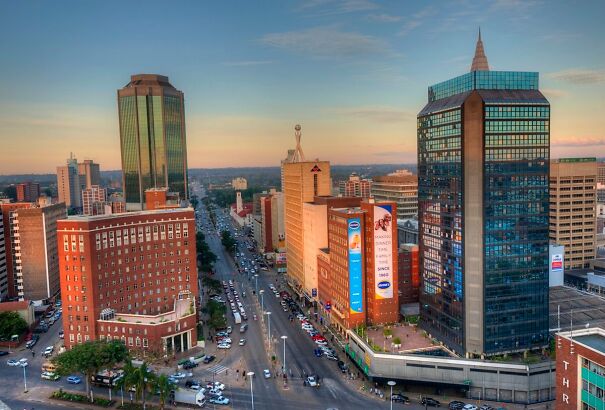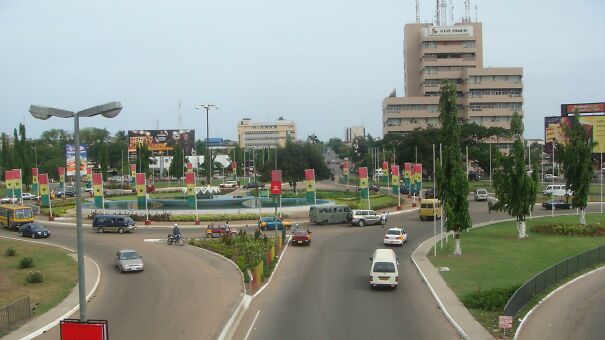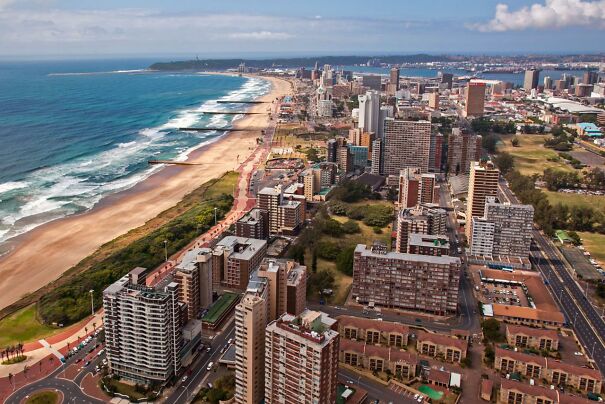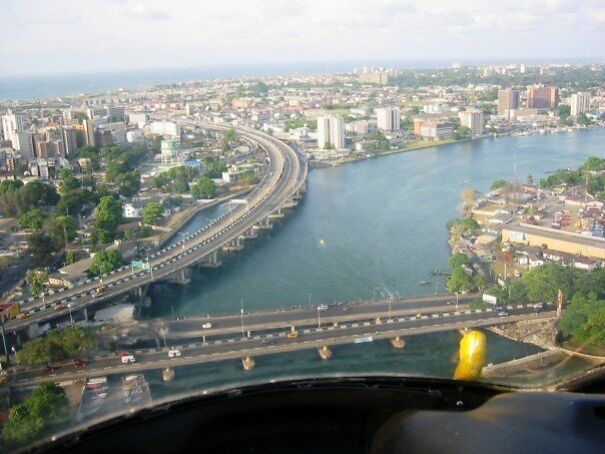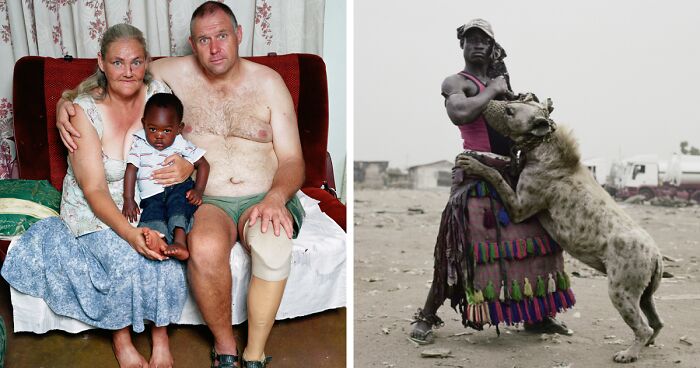
115Kviews
30 Unfiltered Photos By Pieter Hugo Show The Reality Of Marginalized People In Rwanda, Nigeria, Ghana, And South Africa
Pieter Hugo is a 44-year-old South African photographer born in Johannesburg, now based in Cape Town. Being a white African man and struggling to fit in, his subject of interest is Africa. He is well-known for exploring marginalized communities in Africa through his stark and provocative photography art.
The albinos, the blind, people with AIDS, the elderly, Ghanaian honey collectors, workers at the electronics dumpsite on the outskirts of Accra in Ghana, actors in the Nigerian movie industry known as Nollywood, Nigerian hyena handlers, and children who survived the 1994 Rwandan genocide are all among the subjects of Hugo's almost two decades of work.
His candid portraits show the world around him addressing culture, issues of class, identity, and privilege. The photographer described his work to Bored Panda as "direct, engaged, scrutinizing." We've collected the best of his powerful images. Don't forget to tell us what you think in the comments!
More info: pieterhugo.com | Instagram
This post may include affiliate links.
Abdulai Yahaya, Agbogbloshie Market, Accra, Ghana, 2010, "Permanent Error"
Pieter Hugo started off his career as a photojournalist, but being a "fly on the wall" didn't sit well with him. However, his work opened up possibilities to explore his interests and find his own style.
"I was not a particularly good photojournalist. I was useless at being a fly on the wall. I wanted to make work that was more considered. The problem of my presence I made into the crux of my practice—acknowledging my presence, acknowledging the energy and dynamics between myself and my subjects. I think of my portraiture as slow journalism," Hugo told Bored Panda.
Loyiso Mayga, Wandise Ngcama, Lunga White, Luyanda Mzantsi And Khungsile Mdolo After Their Initiation Ceremony, Mthatha, 2008, "Kin"
Most men are dressing like this now, it a fashion thing . It looks good
Mallam Galadima Ahmadu With Jamis, Nigeria, 2005, "The Hyena And Other Men"
We asked Hugo what inspires his photography.
"I think inspiration comes in many forms. The challenge is to cultivate one’s perceptiveness to ideas. I do not have an overt goal. Mostly inspiration for work comes out of a desire to engage with the world. To look at it. To analyze it. To respond to it. Various projects have different ambitions. Some are concerned with the veracity of the portrait, others are born from a curious wanderlust."
Pieter And Maryna Vermeulen With Timana Phosiwa, "Messina/Musina"
Abdullahi Mohammed With Mainasara, Ogere-Remo, Nigeria, 2007, "The Hyena And Other Men"
Hugo said that his interest in highlighting the reality of marginalized communities across Africa developed organically: "At the beginning of my career, I often had commissions around Africa. While on commission (or while researching a commission), I would often stumble across ideas and subjects that I felt deserved a longer and more scrutinous approach."
Portraits of Africa mark an early stage of his career; Hugo said he now has a much more global worldview and has personal work in the USA, China, Mexico, UK, France, and Nepal, among other parts of the world.
At A Traffic Intersection, Johannesburg, 2011, "Kin"
Naasra Yeti, Agbogbloshie Market, Accra, Ghana, 2009, "Permanent Error"
This photo gallery illustrates Rwanda, Nigeria, Ghana, and South Africa through Hugo's lens and consists of portraits from various photography series the artist has collected over the years. Featured in this article are shots from some of Hugo's most popular series: Looking Aside, Kin, Permanent Error, The Hyena and Other Men, Wild Honey Collectors, 1994, and Messina/Musina.
In his project "Looking Aside," Hugo intimately captures people whose appearance makes us look aside: albinos, the blind, the elderly, and even his own family. He makes us confront our prejudice toward people who are unusual and different in some ways.
"Photography was being used by the state as a tool of classification and separation. All South Africans were required to carry a photo ID. My series turns this loaded compositional style on its head to document people marginalised by the glib visual propaganda of the ‘new,’ liberated South Africa," Hugo explains on his website the frame he deliberately chose for the series.
Garuba Yawu With Mora, Ogere-Remo, Nigeria, 2007, "The Hyena And Other Men"
Yakubu Al Hasan, Agbogbloshie Market, Accra, Ghana, 2009, "Permanent Error"
It’s an interesting shot, it makes me want to find a photo series of the very wealthy areas of Ghana and understand the divide between rich and poor, see the contrast for myself.
"Permanent Error" depicts a massive dumpsite for technological waste from around the world on the outskirts of Ghana’s capital city, Accra, and the locals who collect and burn down the components to extract bits of valuable metals for resale, creating toxic waste and putting the area in danger.
"I think it is fair to say that Agbogbloshie is a dark and dirty monument to the digital age, to our faith in technology, and its built-in obsolescence. This idea of surplus and waste, which is key to our digital experience, is not one that many people seem comfortable addressing. Being in an environment like this, where geopolitical imbalances are being exploited to effectively dump waste on poor countries, it is hard not to take a political position," Hugo says.
Agbogbloshie Market, Zakaria Salifu, Accra, Ghana, 2010, "Permanent Error"
Agbogbloshie Market, Accra, Ghana 2009, "Permanent Error"
"The Hyena and Other Men," shot in Nigeria, is the most popular series, which portrays a group of itinerants who perform with hyenas, baboons, and pythons to entertain crowds and sell traditional medicines. The striking photos explore the relationship between people and animals they have taken out of the wild as pups.
"The hyena men are a family and what they do with the animals has a long history and traditions. I don’t agree with it. But I can see the beauty in their relationships with the animals. And cruelty. I guess like all relationships, there are multiple dynamics at play. It's opaque to me. It’s difficult to take a judgmental position towards them. They are also dealing with economic realities different from most people in the world," Hugo told us.
Agbogbloshie Market, Accra, Ghana, 2010, "Permanent Error"
Paul Ankomah, Wild Honey Collector, Techiman District, Ghana, 2005, "Wild Honey Collectors"
"Wild Honey Collectors" captures men in central Ghana covered in leaves and plastic bags. They perform a very dangerous job of harvesting honey from wild bee colonies.
"Honey is harvested by burning the tree nests. As a result, the honey often has soot in it and can only be sold at local markets for low prices. It is a very destructive form of labour, but it is their only means of earning a living," Hugo writes on his website.
Aron Twala, Vrede, 2006, "Looking Aside"
Regina Kambule, Johannesburg, 2003, "Looking Aside"
Being an albino in Africa can be very hard. They are outcasts in many places because of their "weird" looks, meaning they have to beg for food and do not have money to buy any protection against the relentless sun. Skin cancer is very common. Even worse, in some countries they are at risk of being killed for body parts to be used in witchcraft.
"1994" is a series that captures children from South Africa and Rwanda born after 1994. Both countries were marked by major historical events in 1994 and the series depicts a generation of children growing up in the post-revolutionary era.
"Most of the images were taken in villages around Rwanda and South Africa. There’s a thin line between nature being seen as idyllic and as a place where terrible things happen—permeated by genocide, a constantly contested space. Seen as a metaphor, it’s as if the further you leave the city and its systems of control, the more primal things become. At times the children appear conservative, existing in an orderly world; at other times there’s something feral about them, as in Lord of the Flies, a place devoid of rules. This is most noticeable in the Rwanda images where clothes donated from Europe, with particular cultural significations, are transposed into a completely different context."
South Africa, 2016, "1994"
Rwanda, 2014, "1994"
The series "Kin" captures the intimate and public South Africa through portraits, landscapes, and still lifes and explores its deeply rooted social issues.
"South Africa is such a fractured, schizophrenic, wounded and problematic place. It is a very violent society; the scars of colonialism and apartheid still run deep. Issues of race and cultural custodianship permeate every aspect of society, and the legacy of forced racial segregation casts a long shadow. How does one live in this society? How does one take responsibility for history, and to what extent should one try? How do you raise a family in such a conflicted society?" Hugo writes.
The artist took a similar approach in his project about South Africa's northernmost town on the border with Zimbabwe, Musina. He reflects the wounds and scars of race, class, and nationality that persist there.
Rwanda, 2014, "1994"
Rwanda, 2015, "1994"
David, you need to chill. No one here is being racist, no one here is ignoring the pain. All that Arctic was trying to say is she looks lovely. It's not an insult. Take a minute to breathe and stop attacking well-meaning people.
Load More Replies...David Retsler - You cannot assume that she is downtrodden, or even poor, from the photo and her expression. THAT is what makes YOU racist. She may have been contemplating something; she may have been instructed for the photo to look sad or concerned about something that happened in her life - no one seeing this photo has any idea of where she's coming from in the slightest way. The photographer probably took many pictures of her, including smiling and happy ones. That's what professional photographers do. This is the one he chose out of many, for emotional impact no doubt. To assume negative aspects of someone you know nothing about is very limited thinking. And you seem to be continually defending yourself about this matter, of which you are 100% naive.
"The most challenging part of my work is editing. Photographers are gnarly, terrible editors," Hugo said. "The most rewarding part of my work is that it very rarely bores me. It keeps me stimulated and curious."
Agbogbloshie Market, Accra, Ghana, 2010, "Permanent Error"
Dayaba Usman With The Monkey Clear, Nigeria, 2005, "The Hyena And Other Men"
The monkey resting it's arm on the man's leg, the chain, the golden watch and the dead look in his eyes... This picture is heartbreaking on so many levels.
Hugo's controversial work has sparked contrasting reactions around the world, but he remains one of the best South African photographers for his honest and direct approach.
""I’m always surprised by the issues my detractors take with my work. Dialogue is good, right? Having conversations about difficult topics is necessary. If my work provokes debate, I'm happy. It means it is relevant," he said.
His artwork has been shown in major solo exhibitions across the world's best museums such as Museu Coleção Berardo in Lisbon, Museum für Kuns und Kulturgeschichte in Dortmund, The National Portrait Gallery in London, the Institute of Modern Art in Brisbane, Multimedia Art Museum in Moscow, Ludwig Museum in Budapest, Fotografiska in Stockholm, MAXXI in Rome, and more as well as many group exhibitions at institutions including Tate Modern, the Folkwang Museum, Fundação Calouste Gulbenkian, and the São Paulo Bienal.
His photographs have landed in prominent public and private collections, among them MOMA NY, V&A, Centre Pompidou, J Paul Getty Museum, and The Rijks Museum. In 2018, Hugo received the Discovery Award at the Rencontres d'Arles Festival and the KLM Paul Huf Award and in 2011, the Seydou Keita Award at the Rencontres de Bamako African Photography Biennial.
The Hyena Men Of Abuja, Nigeria, 2005, "The Hyena And Other Men"
South Africa, 2015, "1994"
Abdulai Yahaya, Agbogbloshie Market, Accra, Ghana, 2010, "Permanent Error"
Mummy Ahmadu And A Snake Charmer With A Rock Python, Abuja, Nigeria, 2005, "The Hyena And Other Men"
Nura Garuba And Friend With Their Monkey, Abuja, Nigeria, 2005, "The Hyena And Other Men"
Martin Kofi, Wild Honey Collector, Techiman District, Ghana, 2005, "Wild Honey Collectors"
The work of a Bee Keeper is difficult indeed even with the luxury of modern Bee Keepers Garb. But those Bees are often Aggressive and they have no protection other than the flimsy garments they are wearing.
Issaku Moses, Agbogbloshie Market, Ghana, 2009, "Permanent Error"
Al Hasan Abukari, Agbogbloshie Market, Accra, Ghana, 2009, "Permanent Error"
it's interesting to see this. I have visited Ghana a few times (I have family there) I only see the great rich parts because if my families social status. It's very eye opening about the poverty there. I will certainly talk to my family about it.
Agbogbloshie Market, Accra, Ghana, 2010, "Permanent Error"
Probably gonna get very downvoted, but I'm a native African (nigerian specifically) and while these pics are acc really good, I don't particularly like them because they just add to that idea that Africa is this huge third world country. Maybe the photographer couldv'e gotten in a few shots that really showed what cities in Africa are like, with like cinemas and cars and stuff. Kudos to the photographer though.
I saw a documentary on this issue recently, I think it's called "stop filming us". Really made me think, since the dominant narrative always centres around those "those poor Africans" while there seems to be an enormous amount of undiscovered cultural diversity
Load More Replies...I'm not sure what is more shocking, these photos or how some of you are commenting. "Cuteeee <3" on photos of children starving. "Pretty dress!!!" on photos of women digging through garbage struggling to survive. You've missed the entire point of these photos. These people want their struggle documented, shown to the world. They are sorting and surviving off our garbage. Anyone reading bored panda just has no context on what they are going through, including myself. None of us can fathom what they need to do to survive and the massive inequality between the different classes in the same small area.
I think you can see the beauty of a dress whilst still seeing the poverty that they're experiencing. Furthermore, it's really hard to judge someone's perspective of a photo from one comment they post - because you can never know their thoughts unless you have a conversation with them.
Load More Replies...As I sit here ordering a lavish take-away; I will never complain about my life again. People like me need these reminders about how others live to be grateful for what we've got. I keep complaining that my wages are to low. Now I just feel ungrateful
In all honesty, the pictures with the trash everywhere and the people with chained animals just angers me. I don’t have any context for these photos so I don’t know why it’s like that.
Reading through this post, there are quite a few people who are commenting on the animal cruelty with the hyenas... among other things. All I'm asking, or trying to point out is.... yes, a lot of us don't agree with how these animals (hyenas etc) are being treated, yes, we would like them to run free in a reserve- safe from humans.... But, these people are just purely trying to survive, eat, raise a family etc... and they are doing whatever they can to do that. It's easy to comment when we are sitting behind our screens - no doubt, most are from 1st world countries.... not living in poverty/corruption. These people are trying to survive, and are doing their best to achieve that.... If I get down voted, that's fine. I just wish people would step back and try and have some understanding/compassion to these people and their circumstances.
Africa needs investments. Africa needs stable governments. Africa needs foreign exchange, esp dollars. They certainly don't need pity. These photographs unfortunately cement the stereotype that Africa is a hellhole. Show these images, along with those pictures too....
Interview with photographer that explains the hyena and baboon pictures. https://www.anothermanmag.com/life-culture/9906/the-story-behind-the-hyena-men
Load More Replies...I find it odd that the commentary is so first world most sit in judgement of hopeless people living in a pile of garbage. There isn't clean drinking water, or reliable food, sanitation or opportunity.
They all have the same dead/hopeless look on their faces. So sad life is so hard for some.
Provocative images. I had to stop because of the inane comments from BP readers. I'll come back when my resilience is higher. Sadly this is about education and awareness not entertainment.
Some context about what they're doing and why they're doing it could help to humanize these people; just a photo of a man letting a kid sit on a muzzled hyena just depicts them as 'other'
Probably gonna get very downvoted, but I'm a native African (nigerian specifically) and while these pics are acc really good, I don't particularly like them because they just add to that idea that Africa is this huge third world country. Maybe the photographer couldv'e gotten in a few shots that really showed what cities in Africa are like, with like cinemas and cars and stuff. Kudos to the photographer though.
I saw a documentary on this issue recently, I think it's called "stop filming us". Really made me think, since the dominant narrative always centres around those "those poor Africans" while there seems to be an enormous amount of undiscovered cultural diversity
Load More Replies...I'm not sure what is more shocking, these photos or how some of you are commenting. "Cuteeee <3" on photos of children starving. "Pretty dress!!!" on photos of women digging through garbage struggling to survive. You've missed the entire point of these photos. These people want their struggle documented, shown to the world. They are sorting and surviving off our garbage. Anyone reading bored panda just has no context on what they are going through, including myself. None of us can fathom what they need to do to survive and the massive inequality between the different classes in the same small area.
I think you can see the beauty of a dress whilst still seeing the poverty that they're experiencing. Furthermore, it's really hard to judge someone's perspective of a photo from one comment they post - because you can never know their thoughts unless you have a conversation with them.
Load More Replies...As I sit here ordering a lavish take-away; I will never complain about my life again. People like me need these reminders about how others live to be grateful for what we've got. I keep complaining that my wages are to low. Now I just feel ungrateful
In all honesty, the pictures with the trash everywhere and the people with chained animals just angers me. I don’t have any context for these photos so I don’t know why it’s like that.
Reading through this post, there are quite a few people who are commenting on the animal cruelty with the hyenas... among other things. All I'm asking, or trying to point out is.... yes, a lot of us don't agree with how these animals (hyenas etc) are being treated, yes, we would like them to run free in a reserve- safe from humans.... But, these people are just purely trying to survive, eat, raise a family etc... and they are doing whatever they can to do that. It's easy to comment when we are sitting behind our screens - no doubt, most are from 1st world countries.... not living in poverty/corruption. These people are trying to survive, and are doing their best to achieve that.... If I get down voted, that's fine. I just wish people would step back and try and have some understanding/compassion to these people and their circumstances.
Africa needs investments. Africa needs stable governments. Africa needs foreign exchange, esp dollars. They certainly don't need pity. These photographs unfortunately cement the stereotype that Africa is a hellhole. Show these images, along with those pictures too....
Interview with photographer that explains the hyena and baboon pictures. https://www.anothermanmag.com/life-culture/9906/the-story-behind-the-hyena-men
Load More Replies...I find it odd that the commentary is so first world most sit in judgement of hopeless people living in a pile of garbage. There isn't clean drinking water, or reliable food, sanitation or opportunity.
They all have the same dead/hopeless look on their faces. So sad life is so hard for some.
Provocative images. I had to stop because of the inane comments from BP readers. I'll come back when my resilience is higher. Sadly this is about education and awareness not entertainment.
Some context about what they're doing and why they're doing it could help to humanize these people; just a photo of a man letting a kid sit on a muzzled hyena just depicts them as 'other'

 Dark Mode
Dark Mode  No fees, cancel anytime
No fees, cancel anytime 




